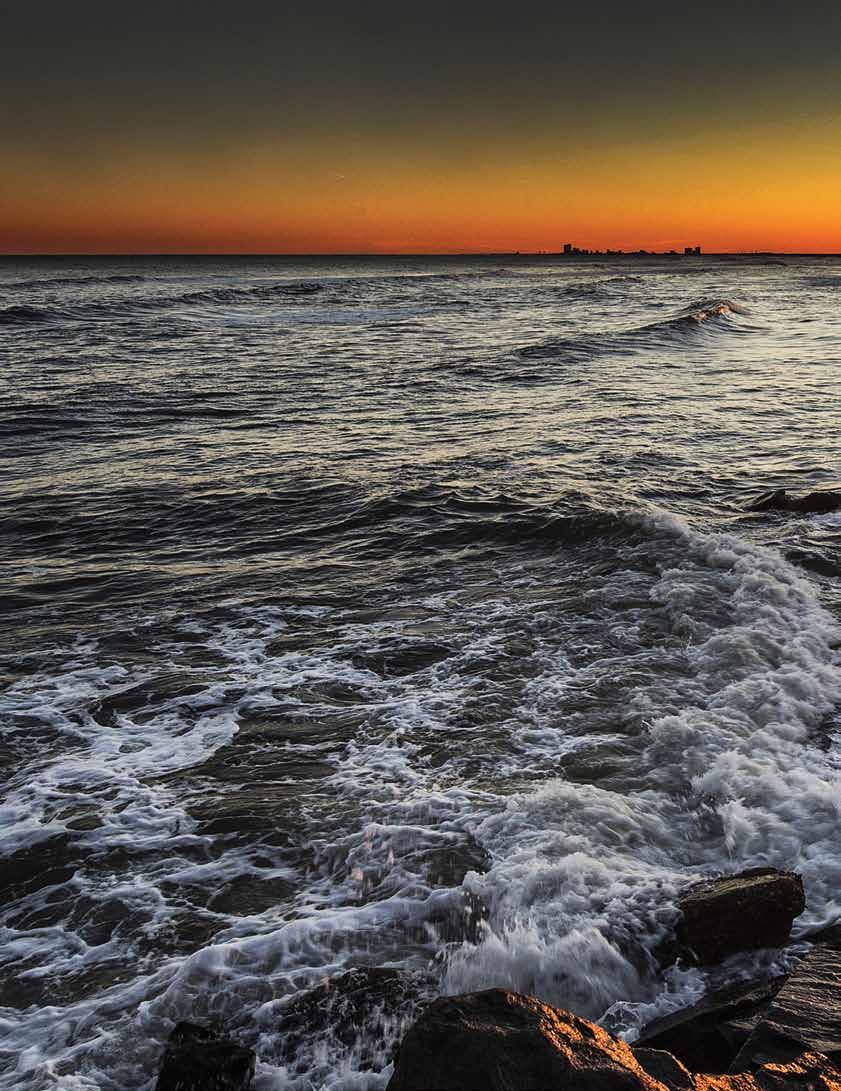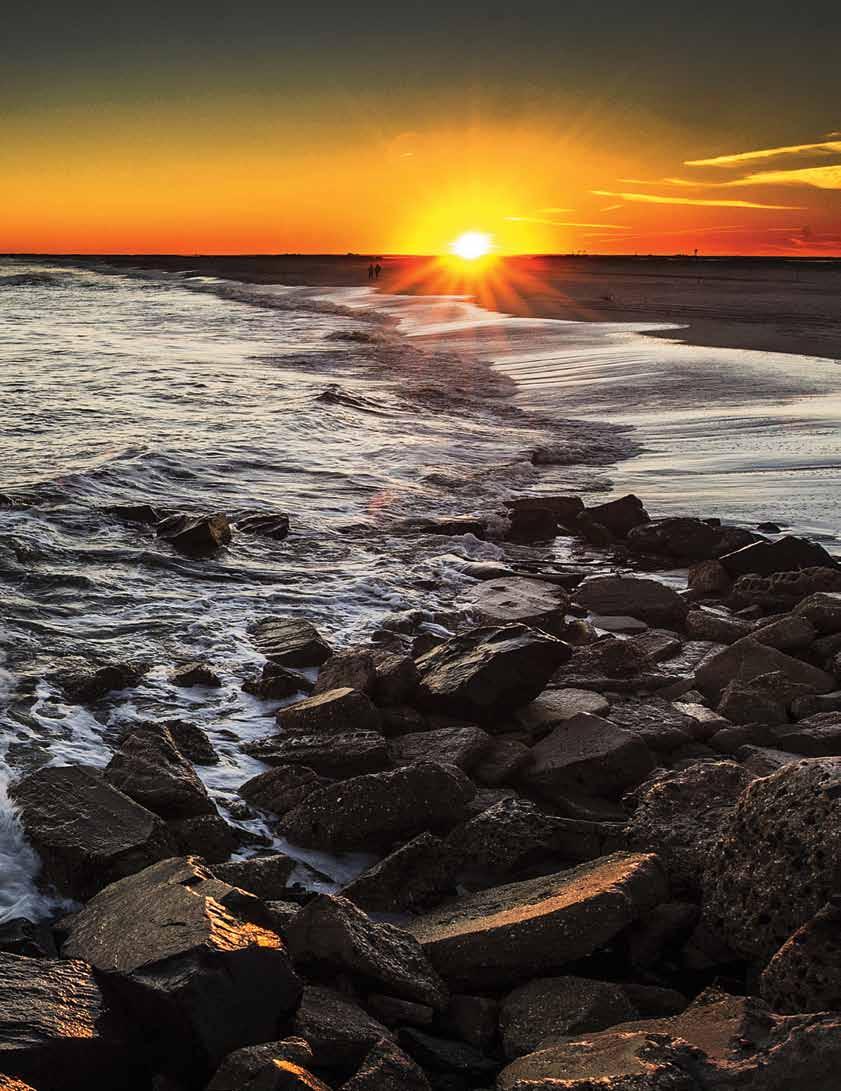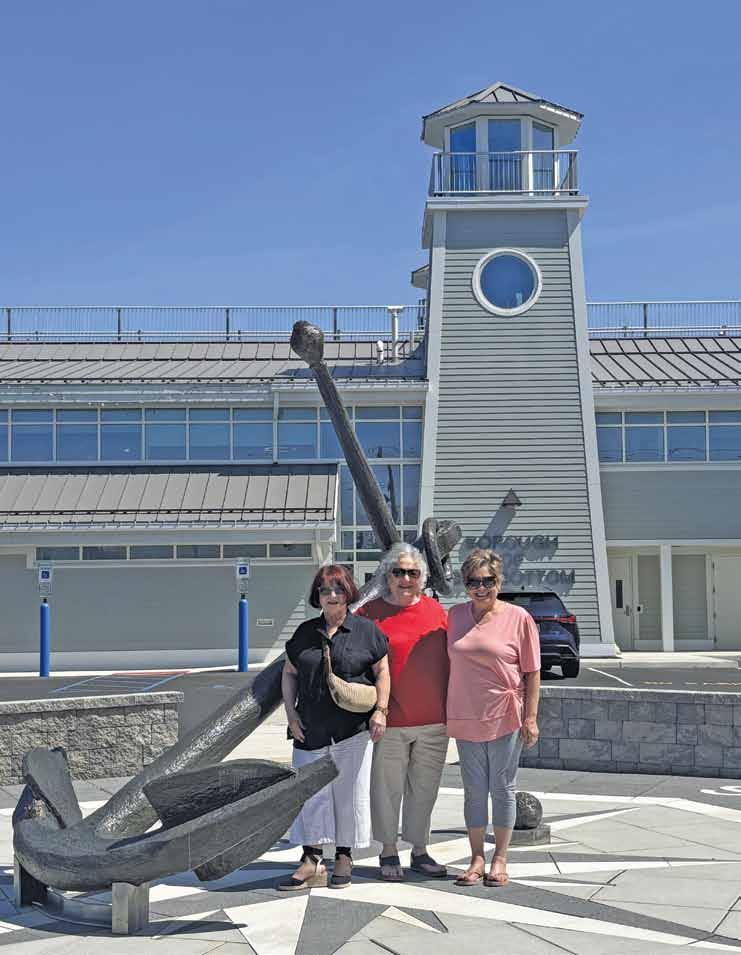

elcome back to Long Beach Island, eighteen miles of special destinations. We have been waiting for you. There is something about this Island that draws people to it and brings them back year after year. In the beginning people swam, floated, and paddled their way across the dangerous waters of Barnegat Bay. Eventually, they built train and car bridges to traverse those waters and even landed small airplanes in sandy fields to reach their special LBI destination. Some people relocated their families, launched new businesses, and made LBI their home. For many, the Island became the special place that drew them back time and again.
No matter your destination, there is something here that captures the hearts of residents and visitors alike. For some lifetime Islanders, like me, it holds us here and we never leave. I grew up in Harvey Cedars. Ship Bottom has been my home for the past fifty-eight years. It is where my children were raised and where my business has been for the past forty-nine years. It is where I hope to remain forever.
Many visitors to my shop tell me their families have continued to return to LBI for decades. Just as many new visitors say they have found their special place and cannot wait to return. So, I am curious. Is this your first visit to the Island? Has your family vacationed here for generations, or have you returned to make LBI your permanent home? What brought you here and what draws you back? I hope you will stop by and let me know.
Growing up in Harvey Cedars, during the winter we often played games. In addition to Scrabble, which was our mother’s favorite game, we learned to play chess. We also learned to play canasta, and pinochle, with the exception of poker. For me, the most fun was learning palette knife painting with acrylics. Paint brushes for six children were costly, and we hated cleaning them. Wiping a palette knife clean was easy, albeit messy. My sister, Gay, was very talented and helped us. She had taken art lessons from the famous sculptor, Boris Blai. So, she knew what she was doing. I still have one of her paintings that our dad framed. One Christmas as a joke, I offered my son and daughter a piece of my work. Much to my surprise my son hung it in his home, though it may be only during our annual visit.
This year as Ship Bottom celebrates its 100th anniversary we are excited to publish in this issue new research about the origins of the borough — brought to light by our historian-editor, Reilly Platten Sharp.
Also in this issue, because of its popularity is an update to “Atomic Sea Glass” by Sara Caruso. In addition to more information, Sara has added great new photographic examples of fluorescent finds under ultraviolet light. During the LBI Sea Glass and Art Festival on October 4 and 5 at Things A Drift in Ship Bottom there will be UV sea glass demonstrations inside the story and outside. For more information see page 102 of this issue.
Echoes of LBI has been the original art, history, and lifestyle magazine of Long Beach Island since 2009. As an award-winning collector’s magazine, we have continued to grow, and our circulation of hard copies has expanded. Since the magazine’s inception our writers have conducted hundreds of personal interviews preserving the history of Long Beach Island from those who lived it. In addition to sharing their personal stories, they also share with Echoes never-before-published photographs. These details, many times in conjunction with further research conducted by our writers, historian, and editorial staff, add to the Island’s history that would otherwise be lost. I believe that everyone has a unique story to tell. We would be honored to tell yours within the pages of Echoes. Contact us at echoesoflbi@gmail.com.
Did you know that print is still one of the most trusted forms of communication? There is nothing like the feel of ink on paper. Echoes of LBI Magazine is proud to keep the tradition of quality print alive.
It always takes a village to publish Echoes of LBI. Thank you to all.
Enjoy the sunsets in this issue and the sunsets that take place no matter where you are.
Cheryl Kirby Publisher, Echoes of LBI Magazine
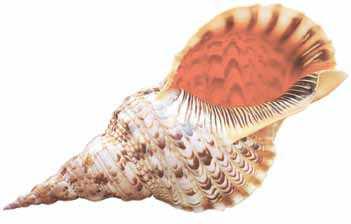
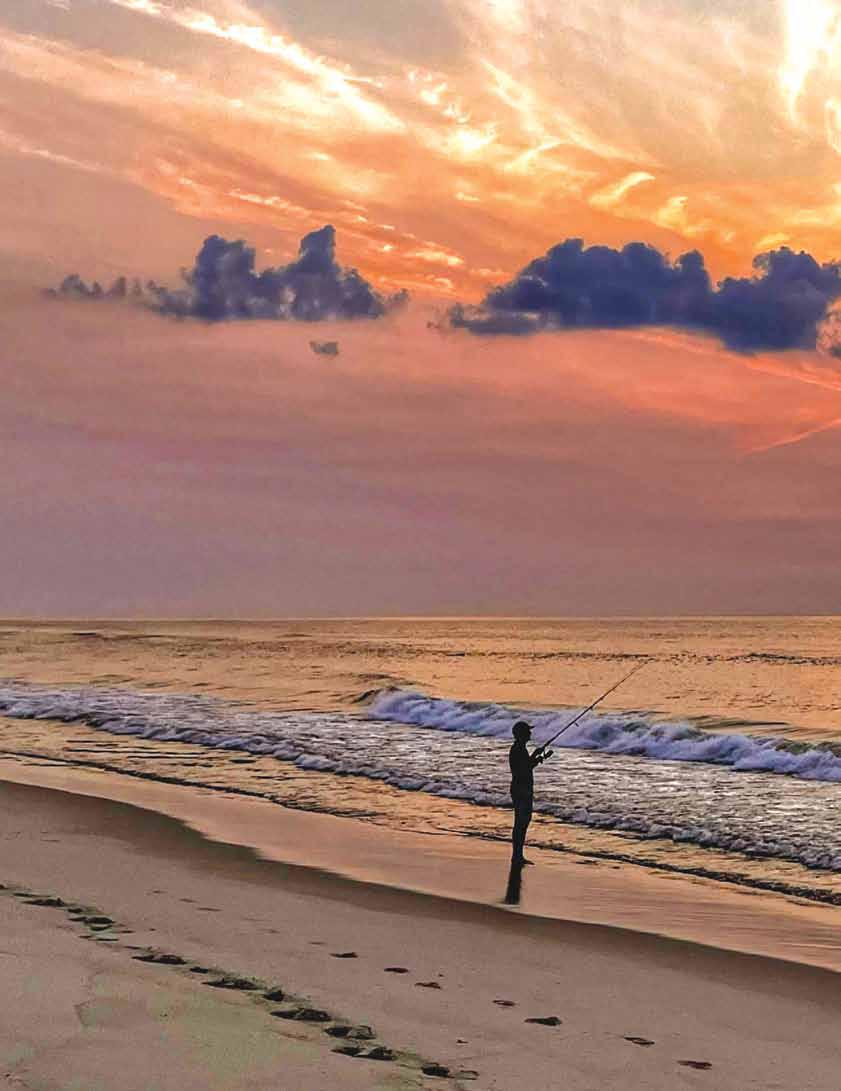
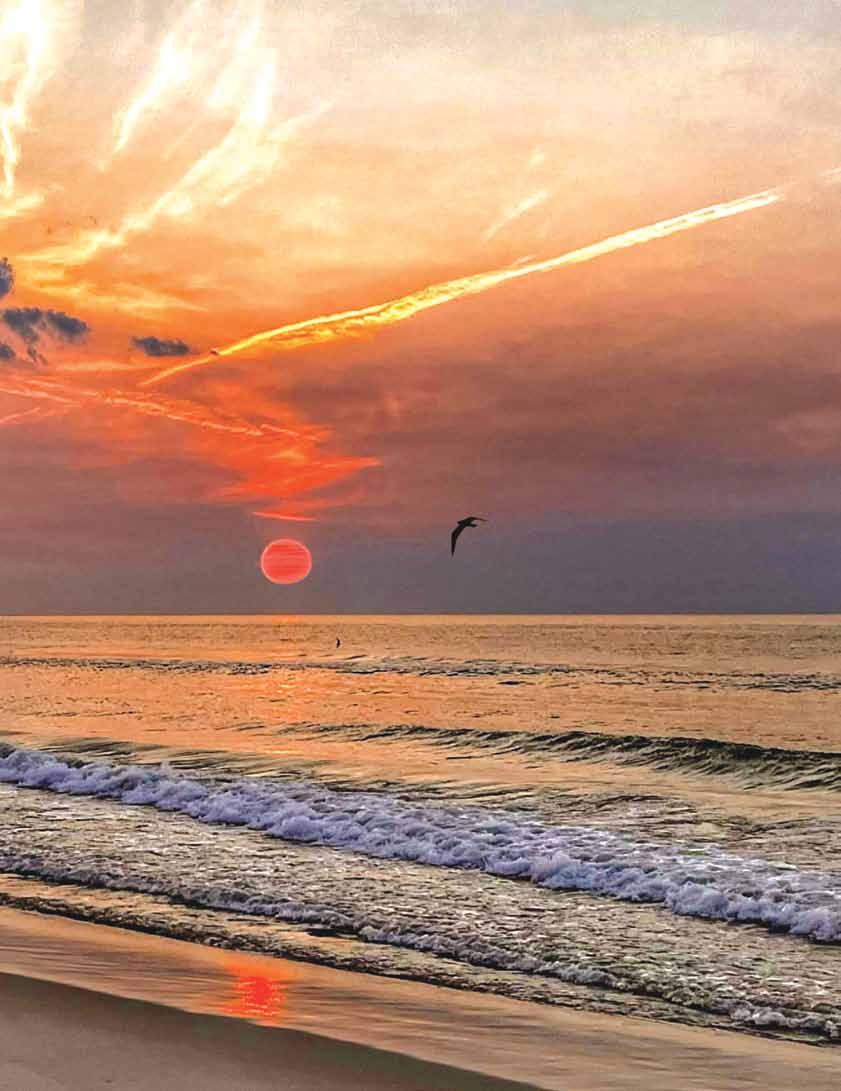


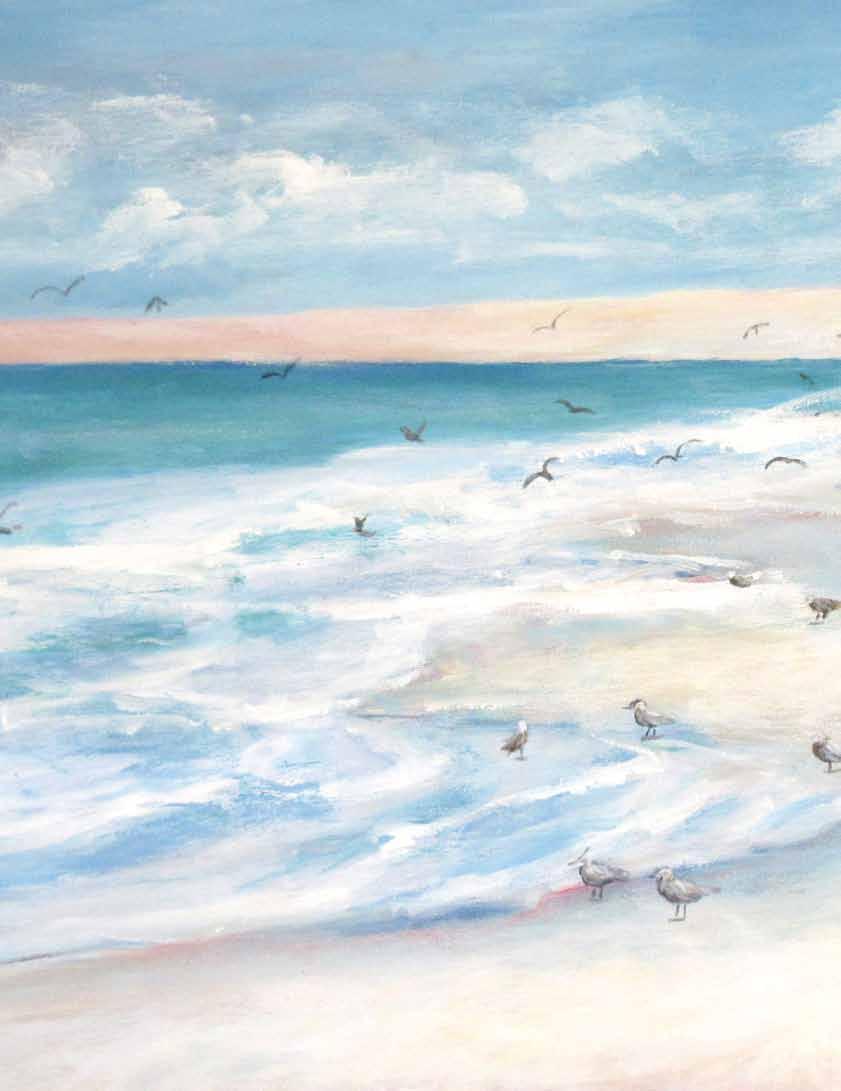




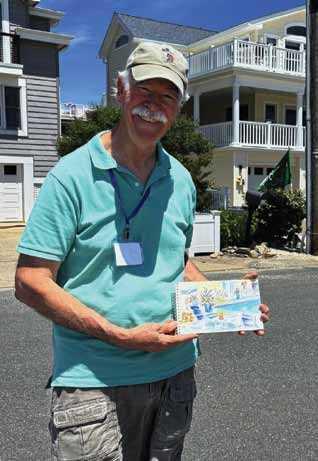
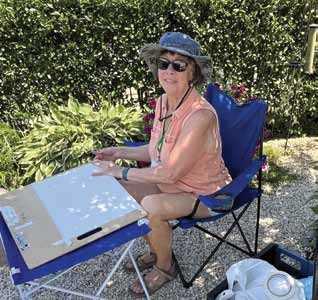
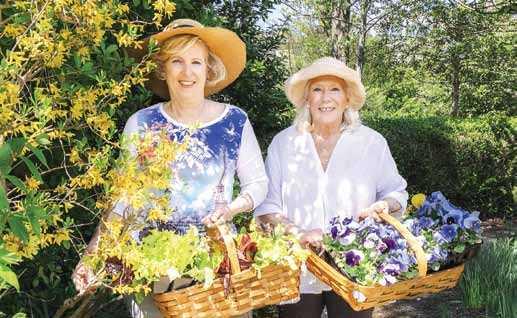
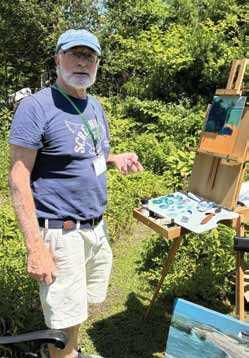
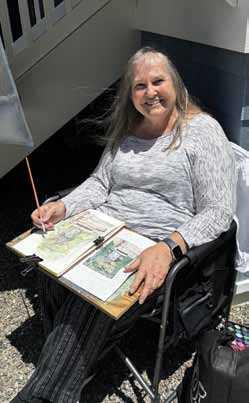

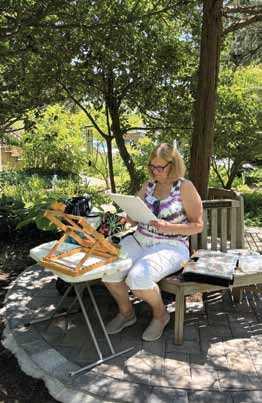


Legendary artist Claude Monet found the flower gardens at Giverny to be his greatest single inspiration for his magnificent paintings.
The same magic was delivered at The Garden Club of LBI’s Outdoor Living Garden Tour and Art Show with twenty-five noted artists from Pine Shores Art Association working plein air. Held on June 24, 2024, the third annual tour opened five private luxurious gardens to visitors.
Located from Barnegat Light to Beach Haven and resplendent in their summer glory, the gardens displayed such features as a sparkling waterfall spilling into a koi pond, a mammoth mimosa loved by hummingbirds, a native garden leading to a freeform pool, relaxing spaces surrounded by cherry laurels and crepe myrtles, and an iron-gated garden almost surrounded by water.
Three charming public gardens maintained by The Garden Club, the Edith Duff Gwinn Garden, and the Pollinator Garden both in Barnegat Light, and the Beach Haven Library Garden were also captured in luminous color by the Pine Shores artists.
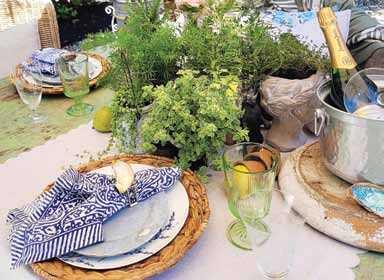
Pine Shores Art Association has been engaging artists and art enthusiasts in the community since 1981. They have two studios, in Manahawkin and Tuckerton, where exhibitions, lectures, and classes for adults and children are held.
Besides their on-site work, the award-winning artists generously donated original, framed paintings for an exciting raffle for Garden Tour ticket holders.
This year’s Outdoor Living Garden Tour and Art Show is scheduled for Thursday, June 19, 2025. For ticket information please see thegardencluboflbi.com.
—Gillian Rozicer • Photography by Jeannette Michelson

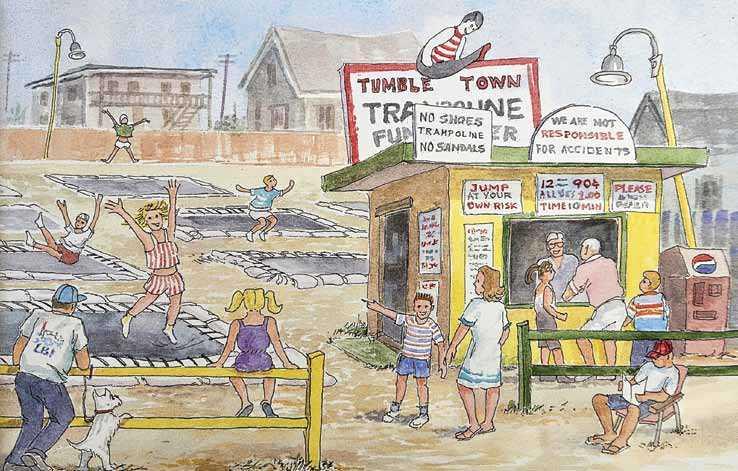
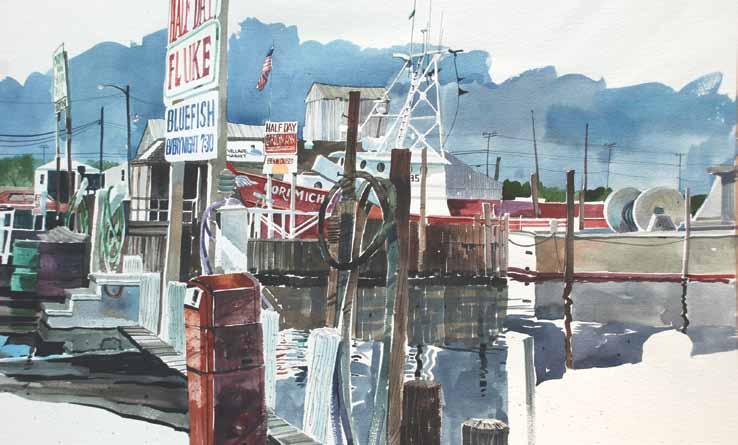


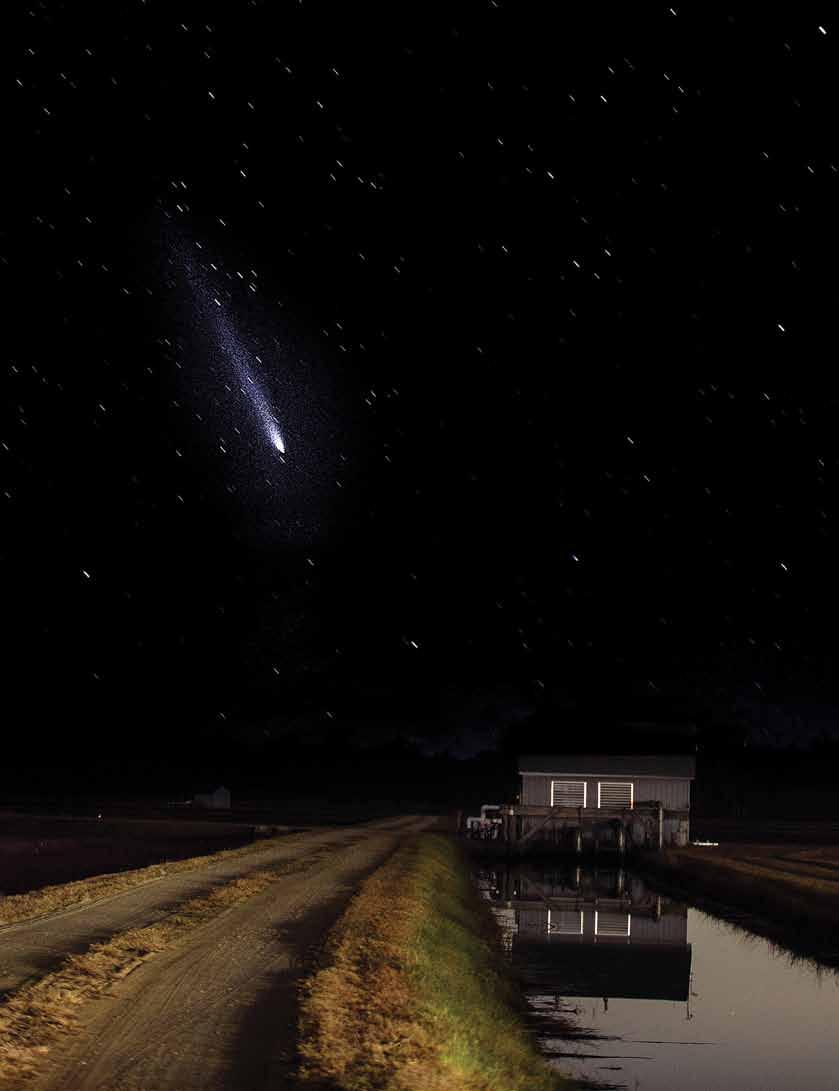
Oh, arbitrary light!
Oh, night’s magic!
You shoot across the sky like Thors hammer, so quick, so fast, so brief. Silence surrounds me and awe fills the darkness. I stand beneath it all, small and inconsequential.
Oh mighty universe! Oh moment of belief!
Maggie O'Neill
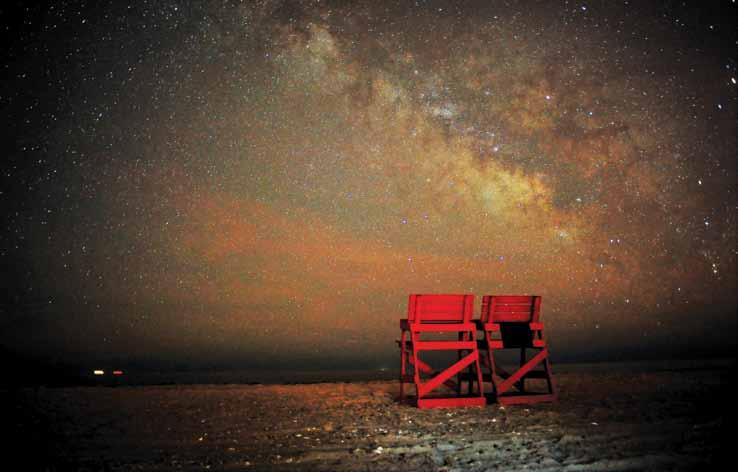

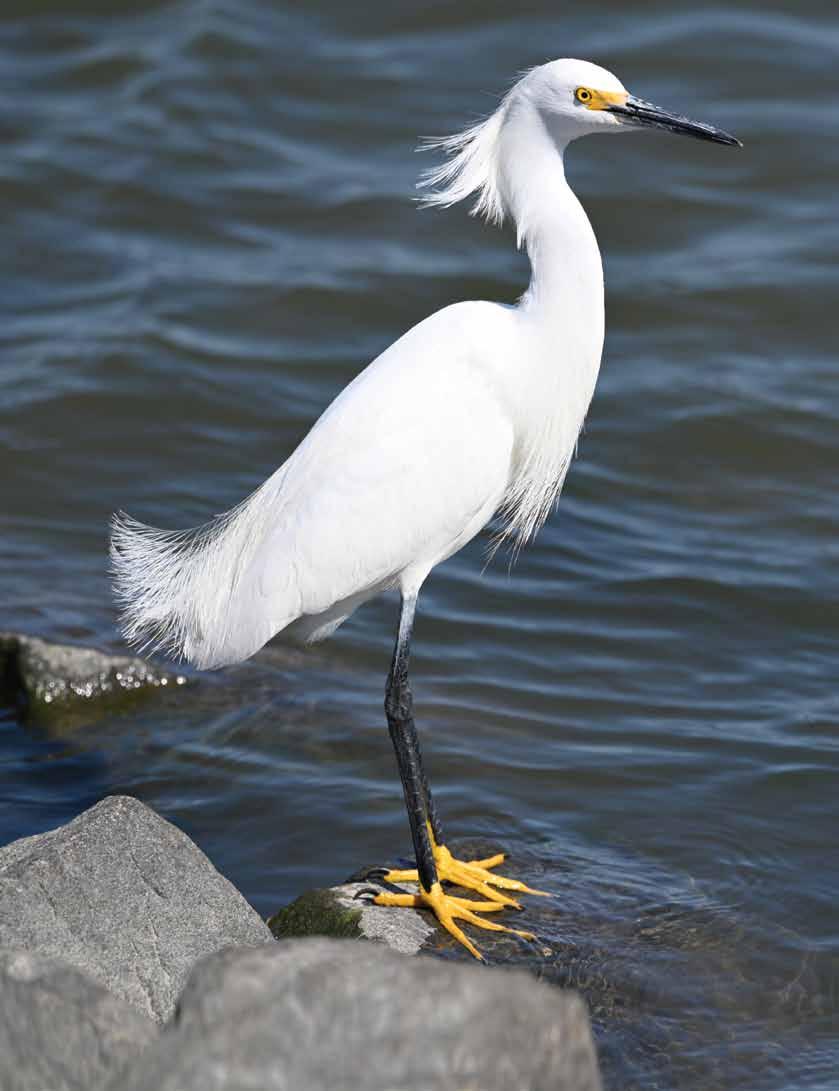

For Jerry Heffner, wildlife photographer and artist, living on Long Beach Island fills him with gratitude and provides a sojourn into the stunning magnificence of living at the shore. “I look around and experience the beauty of nature.”
“We have it all here,” he says. “Whales that breach. Dolphins that play. Beautiful birds like egrets, pelicans, herons, and osprey, who mate, nest and feed their young. All of God’s creation is here all year long.” Although he travels to Europe, there is no need to travel to far-away destinations. Heffner’s artistic repertoire includes work in local parks and beaches in New Jersey that keep his creativity fired up.
Heffner made a quantum leap to art after three decades of work as an engineer working for AT&T and Verizon, managing teams of engineers building the nationwide cellular network. Now retired, he lives year-round on Long Beach Island with his wife Barbara, and Teddy, their beloved yorkie.
His attention to detail as displayed in his work was inspired by his father, a watchmaker. “My father had magic hands, moving into place dozens of miniscule screws and bits into a watch.” Another inspiration for his success comes from a former teacher and former president of Pine Shores Art Association, Tom Rutledge, a gifted artist who “is always willing to share his knowledge, and generous in teaching his techniques. He was always positive in his comments about my work.” Heffner’s work features subjects ranging from photographing sunsets to mating egrets.

In taking photographs of animals in natural settings, Heffner says, “Wildlife photography is an exciting and challenging field that allows a photographer such as myself to capture the beauty of nature and its inhabitant creatures.” According to Heffner, wildlife photography can be an exhilarating and fulfilling experience. Heffner emphasizes and practices ethical wildlife photography:
• Respect animals and their habitats and enable them to thrive in their natural environment.
• Obey interaction rules for both human and animal safety.
• Never do anything to endanger wildlife or their offspring.
• Promote understanding and appreciation for wildlife and the importance of conservation efforts.
• Understand animal behavior and their habits such as feeding patterns, behavior, and activity.
“Be patient and calm,” he says, “Sometimes we need to wait for the spontaneous to happen in nature. Again, I use my zoom lens, but I keep a distance and obey interaction rules for both human and animal safety.”
Embarking on wildlife photography opens new perspectives through a stunning lens of discovery on wildlife. His work has been rewarded with a plethora of awards from Pine Shores Art Association and Judges Choice Awards.
Heffner pours his heart and soul into his work. He says that his aim is to showcase “the Creator’s earth in the most beautiful light.” He does this in landscape and seascape, and in what poet Gerald Manly Hopkins describes as “inscape,” the raw experience of beauty itself. —Fran Pelham • Photography by Jerry Heffner
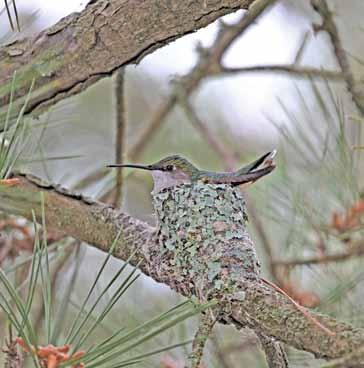
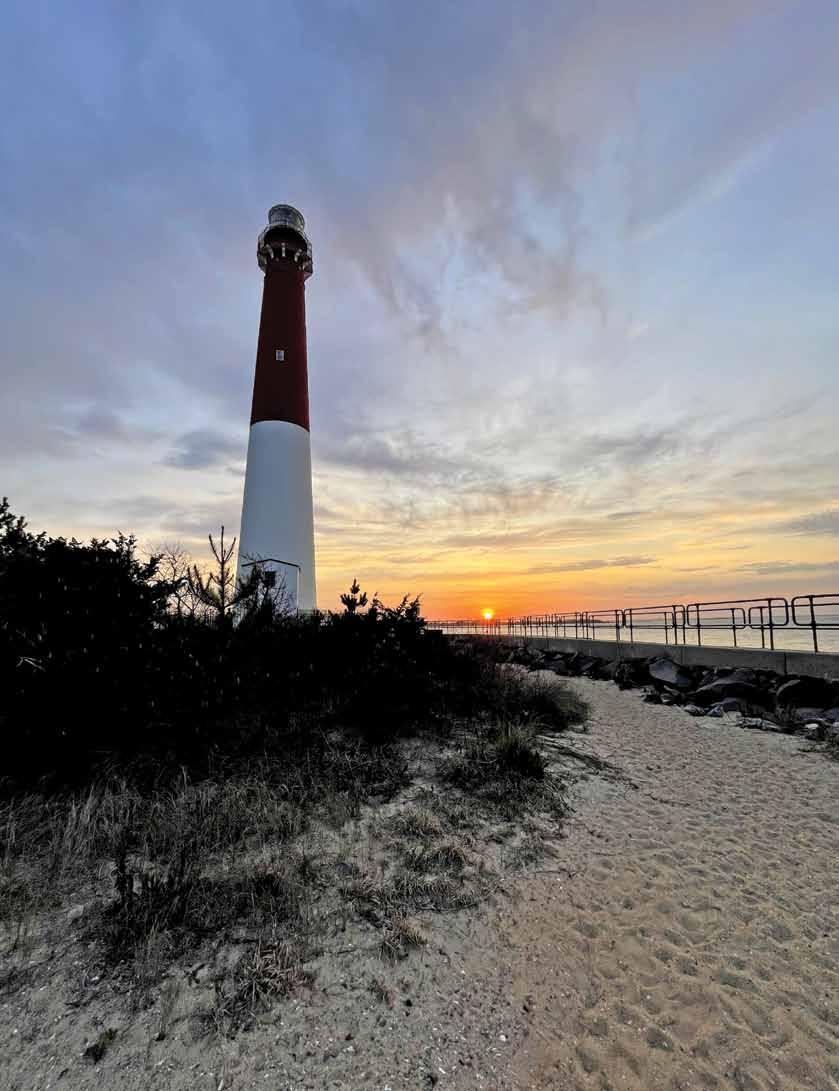
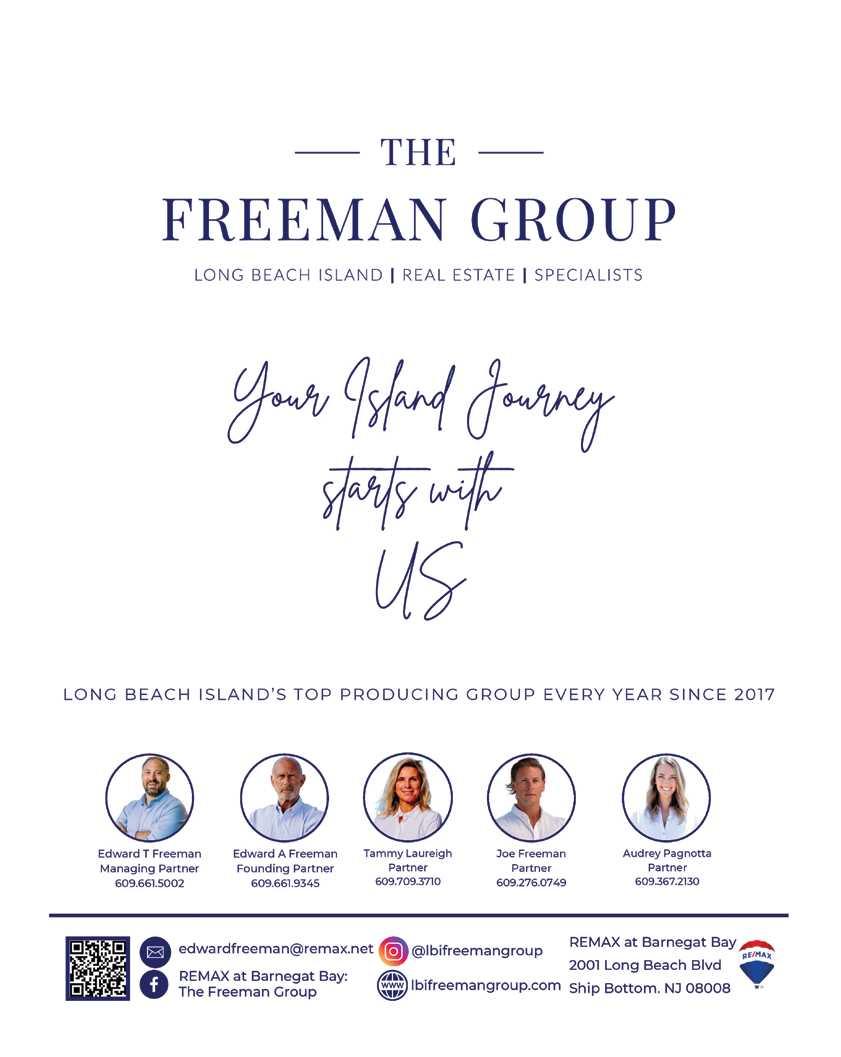
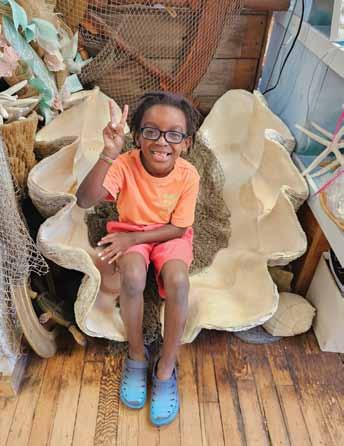

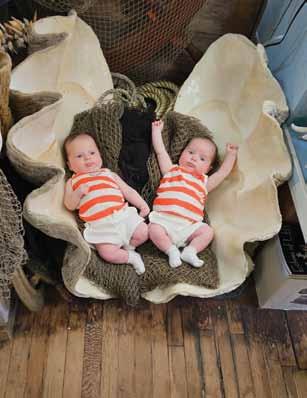

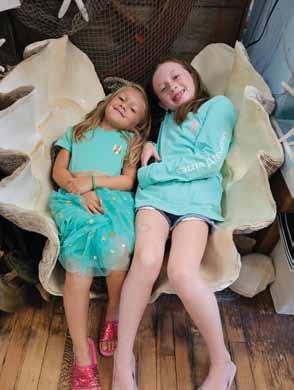
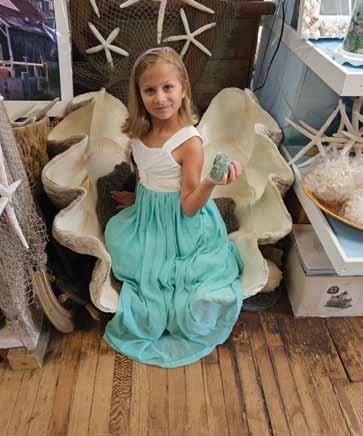

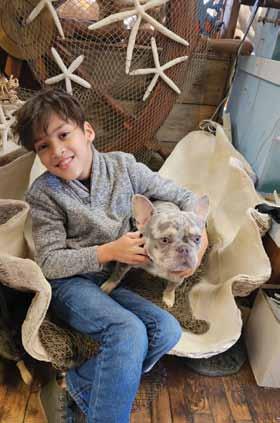


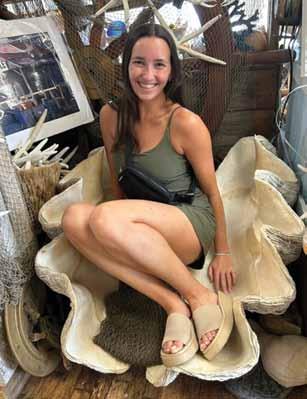


Bottom


This page, top row, left to right: Kate; Chris; Kara
Bottom row, left to right: Gabrielle and Nicholas; Charles and Ella; Andreas
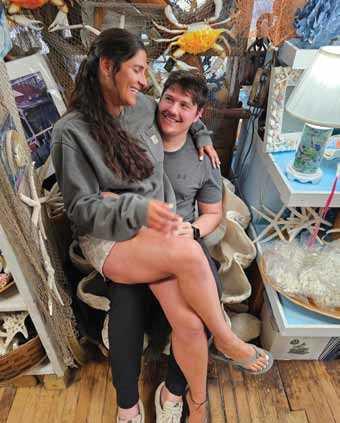

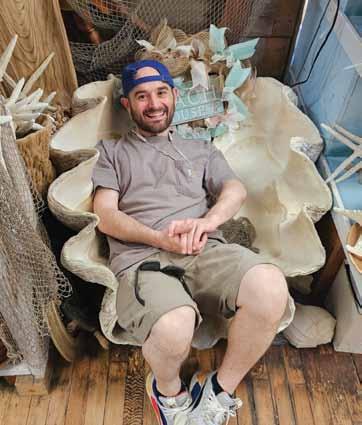


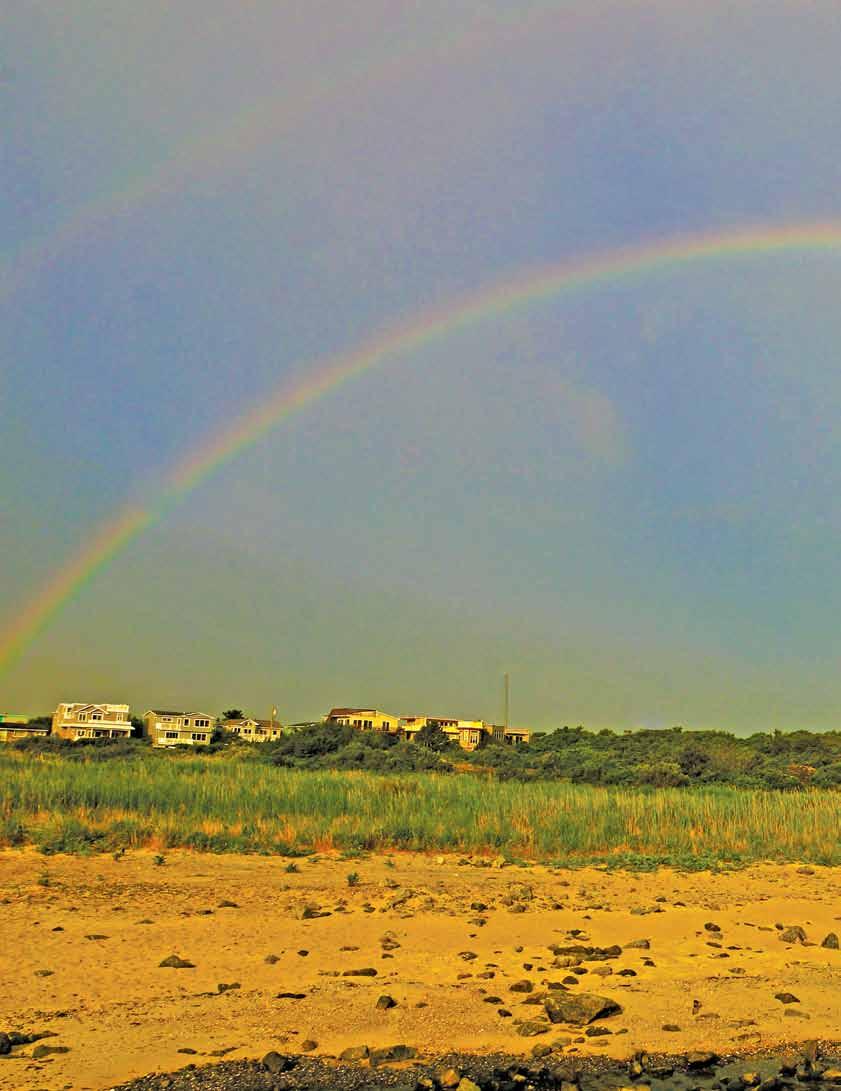
The breakers fold onto the inlet of Barnegat Bay under the watchful eye of Meade’s Barnegat Light. As the sun climbs, they cast lines along the jetty, navigate the boulders on foot. They are the locals of grizzled mariner faces; who load their catches into buckets, coolers.
A weather-beaten Chris Craft’s small wooden hull moans as waves’ batter sprays, drench the leathery creased face of the small captain, whose steely blue eyes navigate through shoals, swift currents pass the north jetty into the green blue ocean.
Folk’s picnic, climb the light tower. Some furrow in the sand of the small beach, others watch for herons, egrets, pelicans. A series of small boats follow the Chris Craft through the inlet and then the party boats full of mainlanders drinking beer, wine, popping Dramamine, muscle their way through the inlet into the ocean.
As sun drops, the jetty is now empty, beach desolate, light tower closed. The weighted down Chris Craft enters the bay followed by other small craft chugging, churning, cutting through currents, just ahead of the party boats still full of mainlanders.
—G. Emil Reutter
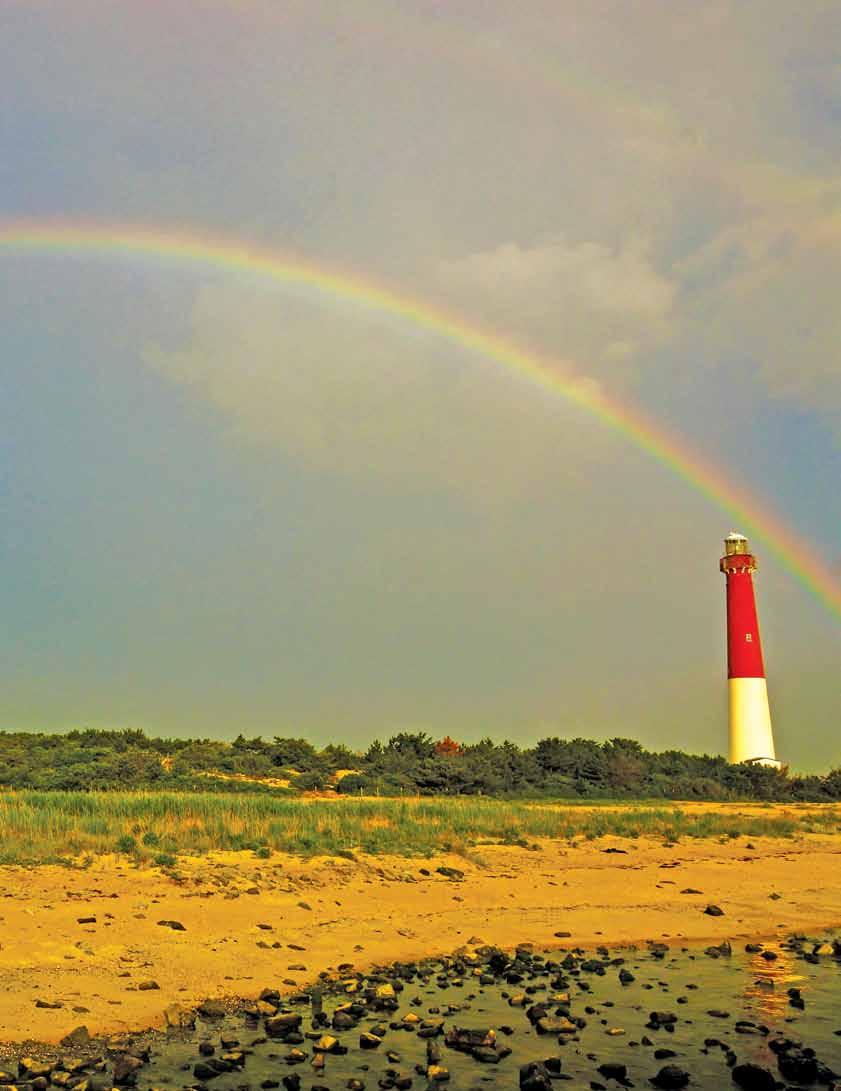

From For Every Season There is Time
"So the seed falls to Earth finds a resting place, waitsto be eaten by birds? choked by thorns? or to fall on rocky ground, where even then, the most tenacious urge will send its root deep, into the very heart of cloven rock In search of water, food, life…"
Timeless moments of peace and wonder repeat in the blue of sky the brown of earth. A whisper of warm wind hiding from the fact of winter from the shrinking light of days waits for nothing but another moment…
A parade of November mallards chat with neighbors in no particular hurry. Led by flamboyant males in iridescent headdress with bright white collars, they waddle pretentiously in single file across the road
In front of impatient drivers who wait nonetheless, watching the procession from pond’s edge to evergreen shelter on the day of the dead…
In the late sky appears a rosy-fingered, fleeting likeness, a reminder of Dawnher promise of rescue
from the loneliness of night yet to come; when there will splash across the canvas of twilit morn colors of a brand new day.
Evening pastel clouds patiently reflect on heaven's brilliance, sail across awareness alongside birds careening wild in the wind as November draws to a cloudy close, with one last moment to rest upon the distant line where Earth becomes air, where embers of daylight glow warmly with tomorrow’s hope fading upward, older, farther away until the mantle of darkness sinks covers all, reveals its emptiness.
—Written and photographed by Joe Guastella
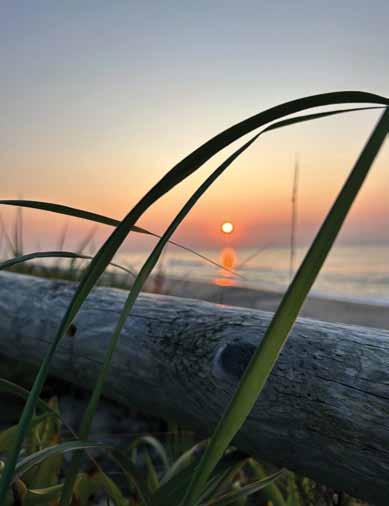
THE PAST ALOOF
Off-season renter at the end of the jetty her easel teetering in puffs of chill breeze chuffing off the prancing inconstant waves she studies she paints her past aloof incongruous she is here she is now.
After a week of days staring at her back the locals
crabbers and fisher folk call her aloof but she’s well past aloof
THINGS ADRIFT
The sea thrusts itself upon the shore Wave after wave, relentless evermore Each tide brings in that which can be swept Onto the beach where it is left
A former shard of glass, now sanded
Smooth and settled where it landed
A mermaid’s purse, a wealth of shells
How many kinds, I cannot tell
The sun will shine upon the beach And drain them of their hues like bleach There, children pick them up by hand With curled up toes beneath the sand
A chunk of wood, gnarled and knotted
Even a shark’s tooth may be spotted I stare at all of Neptune’s gifts And marvel at these things adrift
—Written by Randy
Rush
Photography by Nina Herbst
artist’s eye and brush’s oily tip critically adrift at full sail on the horizon line.
Then it is done and laden with her kit tiptoeing over driftwood and seagrass she crab walks the rocks as the crowd grudgingly parts to let her go past aloof
until they see themselves in full on her canvas bent over bait buckets or casting killies gales of salt mist in their windswept hair.
—Written by John Chmura
Photography by John Keeley
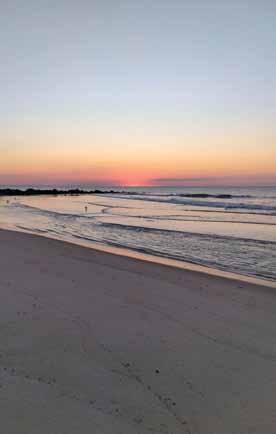

Together most days from sunrise to sunset, Over four years ago since you both first met, Walking is a passion you shared that night, Second date was a walk at Barnegat Light.
Together in nature a week seldom goes by, Sharing outdoor adventures or star filled sky, Walks on a trail, a beach or a mountain hike, Even riding for miles on your electric bike!
Chelsea’s first picture that Mike ever saw, Was her holding a fishing rod, he was in awe, He thought he had gotten his wish “on-line”, For a girl with a fluke was a very good sign!
From camping, to fishing and kayaking too, Always an adventure in whatever you do, So happy for you both and wanted all to know, Today it’s “o-fish-ial,” Chelsea’s a DeMarco!
Love, Mom and Dad
CO NGRATULATIONS
C HELSEA AND M AR K D E M ARCO O CTOBER 19, 2024
—Written by Diane and Vic Stulga Ronnie Mae Photography
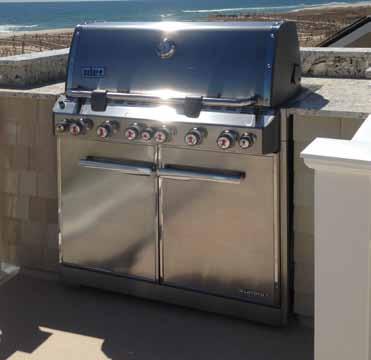






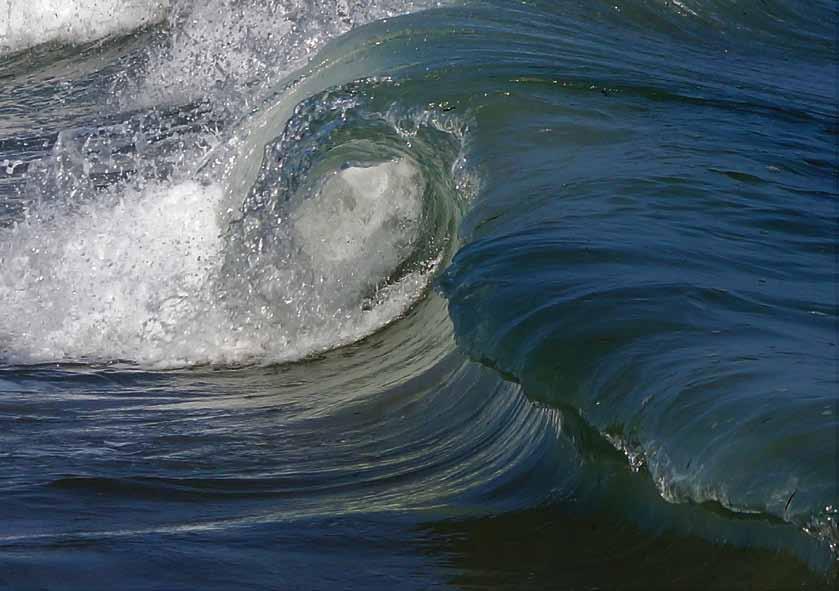
Here’s to you master of mysteries, keeper of the tide. Here’s to your vast expanse that dominates our earth, to your undersea mountain ranges, your longitudinal divide that separates old world from new. Discovered Before the Common Era your power is endlessly explored, but never fully understood.
Beautiful, enduring, impregnable, you willingly give up your oil, your minerals, your tidal energy. You release your bounty to feed a world that has not been a good steward, has misused your resources, ignored your science. Now, before all is lost, it is time for people of wisdom to commit to your living ocean, protect your marine life, eliminate costal erosion that shrinks your beaches, prevent plastic pollution that strangles, safeguard your wealth for future generations.
—Nancy Kelly Kunz
You willingly share your waters with adventurous men who sail you, industrious fishermen who troll you, travelers who trust you for tranquil crossings, swimmers who take up your challenge, surfers who ride your foaming white curls, as you crash to shore, deposit shells and beach glass for those who stroll your sands in search of private treasure.
At daybreak, I stand at your tangible edge awed by your majesty, aware of your vastness, grateful for your generosity.
I celebrate you with my morning coffee, as the sun rims your horizon, coaxes my day into existence, and paints the sky one sliver of color at a time. You respond with a kaleidoscope of reflected light.
by Dave Farruggio

Decorating a mantel, living room, poolsode, or patio with gifts from the sea brings serenity to the home



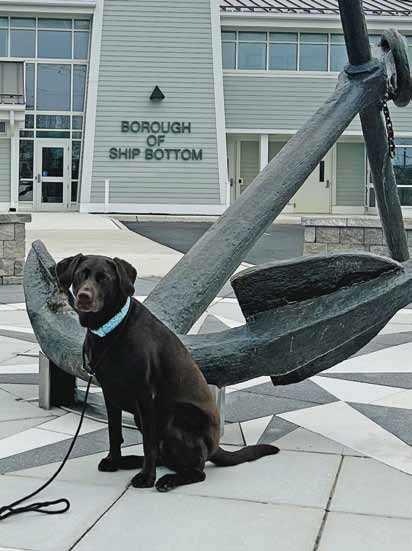



In today’s world, pets of all sorts are viewed as a valued part of the family. The more we know about the creatures we choose to share our homes with, the more we appreciate and respect them. And the more we know, the better we can care for these special members of our family.
Having a hermit crab as a pet is something many children have done, especially if they grew up by or vacationed at the shore. Many of us had plastic tanks, fake mini palm trees, and those toxic brightly painted shells for our hermit friends. As time went on, and more information about hermit crab care came to light, we realized those things were not good for our crustacean comrades. So, we learned how to provide better care for them. Yet, for hermit crabs there still exists the misconception that they are souvenirs, destined to die quickly or to be dumped off at the beach after summer vacation. Over the decades this has led to certain death for countless hermit crabs.
Recently a number of disturbing videos have appeared across social media showing people releasing their hermit crabs at the end of summer. Whether it is for attention or misguided good inten tions, they have sentenced those hermit crabs to death. It is cruel and should never hap pen.
some in painted shells, on local New Jersey beaches. Unlike our native marine hermit crabs that live exclusively in the water, these were found up near the dunes. If you find a Purple Pincher on an LBI beach gently pick it up, place it in an empty insulated lunch bag and bring it to Things A Drift in Ship Bottom, New Jersey. The hermit crabs brought there as rescues are given a full health exam, free of charge, cared for and fostered until a forever home is found. Rescued hermit crabs brought to Things A Drift are never sold, rather they are placed with experienced
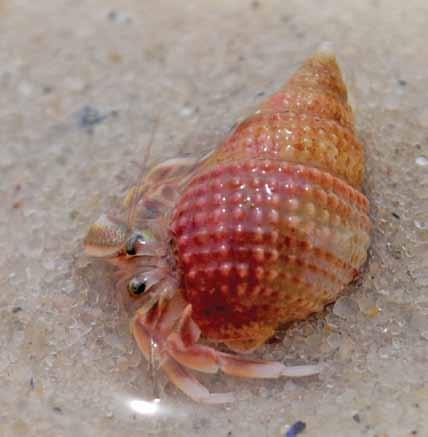
The most common species of hermit crabs sold as pets is the Purple Pincher (Coenobita clypeatus) a native species to Haiti. These strictly land hermit crabs do not swim and will drown if placed in the water. They have adapted to tropical temperatures and humidity of that climate and cannot survive northeast coast winters. Even in captivity, hermit crabs need temperatures around 70 to 76 degrees Fahrenheit and 80% humidity to maintain moisture on their gills and molt properly. At the heart of it, abandoning any pet is cruel and unnecessary. There are many who would gladly adopt a hermit crab, so please reach out if necessary. With knowledge, there is no excuse for cruelty.
Last year, there were several posts on New Jersey Facebook groups made by concerned citizens showing Purple Pincher hermit crabs,
Be aware, however, that our beaches are home to two species of indigenous marine hermit crabs, so be careful not to disturb them by mistake. Unlike the colorful Purple Pinchers, New Jersey’s marine hermits, Long-clawed Hermit Crab (Pagurus longicarpus) and the Flat-clawed Hermit Crab (Pagurus pollicaris) are the color of sand and have a flat big claw. Also, their eyes look translucent compared to the solid black eyes of Purple Pinchers. Marine hermits will usually be found in moon snail shells and whelks, but never fancy or painted shells. Plus, they are usually found closer to the water, in tidal pools, or in the surf, while Purple Pinchers are strictly land hermit crabs and cannot survive the ocean. If you find a marine hermit crab, it is best to leave it alone, and if washed ashore, return it to the sea.
With proper care, Purple Pincher hermit crabs can live a long and healthy life. Considering that some have been known to live up to forty years in captivity, they can be a pet that requires commitment well beyond childhood. They are perfect for someone with allergies to pet dander, and they are low maintenance enough that young adults going off to college can safely leave them in their parents’ care.
Hermit crabs are inquisitive and curious, so taking them out daily for enrichment is encouraged. They love exploring dollhouses and LEGO® sets. Setting up an empty kiddie pool or play area for your crabs to enjoy can help keep them busy and provide exercise. Because hermit crabs are nocturnal, this is best done in the
evening. Any time spent outside their regular enclosure should be monitored.
Training you and your child in how to handle hermit crabs can prevent pinches or accidents. It is important to help your crab become accustomed to being handled especially when cleaning their enclosure or checking their health. However, before handling your hermit crab it is super important to wash your hands thoroughly first. Sunscreen, lotion, perfumes, and insect repellent are toxic to hermit crabs. Second, spread your clean hands out as flat as possible, and let your crab walk on them. Be aware, it will tickle. Make sure to do this over a soft area, like a bed or pillow, so if the crab falls it will not get hurt. As everyone’s confi dence grows your hermit crab may climb up your arm. To them, you might as well be a tree. Make sure to never close your hand around the crab or leave skin loose because that's when pinches can happen. Your hermit crab is only trying to hold on for support, not to intentionally harm you. Letting them get used to your touch will help them stay calm during handling.
Hermit crabs are as much of a commitment as any pet. While they do not cuddle like a cat or fetch like fido, they have found a place in many hearts and should be respected. If you are thinking about adopting a hermit crab, as with any pet, it is important to do your research to make sure it is the right fit for you. Echoes of LBI Magazine and Things A Drift have many informative articles and resources to read and download at echoesoflbi.com and thingsadrift.com. —Written and photographed by Sara Caruso
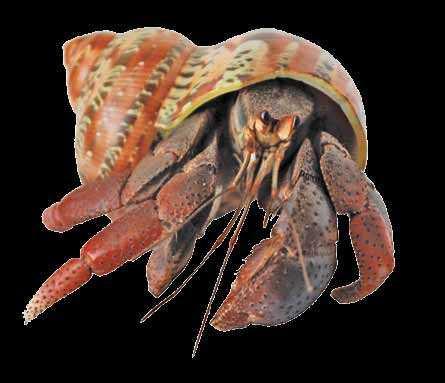


Golden brown sand on edge of the world Ocean bulges, swirls as white caps curling roaring, spraying along beach batters this narrow stretch of protected land resting between bay and sea.
In the distance Atlantic City skyline as Emerald City without the poppy fields. As if we could walk across inlet onto the ocean into the city as sun glint reflects off high risers and water as light up and light down.
Written by G. Emil Reutter
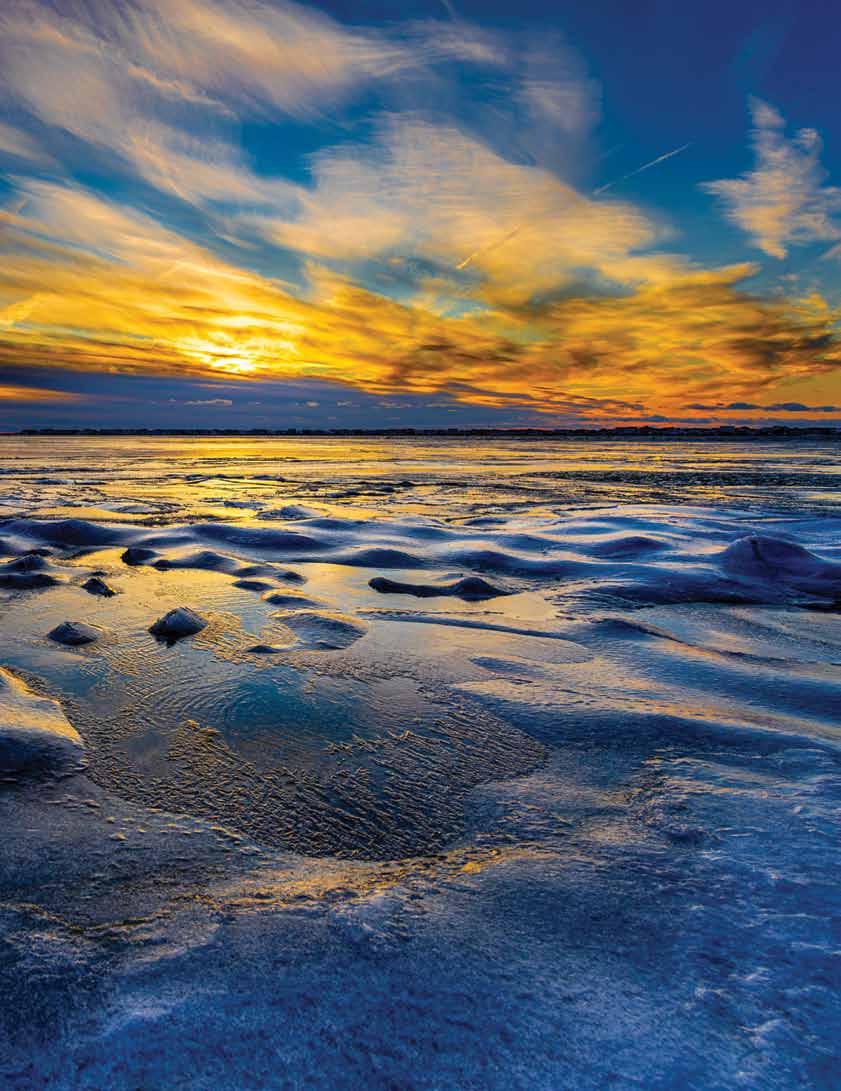

Long Beach Island endured a bitter cold winter this year, with temperatures dropping into single digits on more than a few nights after the holiday season. On several occasions, the beach was blanketed by snow, turning our eighteen miles into a winter wonderland. Many locals found their eyes focused on the night skies as we searched for mystery drones and colorful auroras.
While back on Earth, the Holgate Memory Tree made waves with hundreds of shell memories making the local news and inspiring others to create their own. Hearts were warmed, and fans were fired up, as the Philadelphia Eagles won Super Bowl LIX. Later, the entire Jersey shore would become captivated by the misadventures of one wayward red fox, nicknamed Ziggy, who found herself stranded out on the ice of Barnegat Bay. Happily, rescuers were able to bring her safely ashore, and she is being rehabilitated.
Meanwhile back on LBI the bridge is open. In Ship Bottom, east and west 8th and 9th Street are open and Long Beach Boulevard fully accommodates two-way traffic now that the former Causeway circle has been completely removed. Visitors will find that traffic patterns may continue to change.

The Southern Ocean Chamber of Commerce moved off Island to a new home at 703 Mill Creek Road, Unit G, in Manahawkin. Atlantic City Electric will use the property to upgrade service to the area. Construction of the new Ship Bottom Borough Hall has been completed with the legendary anchor of the Fortuna restored and returned to its rightful place in front of the building.
LBI welcomes several new businesses with the opening of a bookstore in Surf City, Beach Reads, Surf City Dog House, and Beach Bum Eatery in Beach Haven Terrace. Over the bridge in Manahawkin The Picklr, with its new indoor pickleball courts, opened.
March brought promises of spring with much welcomed showers, warmer breezes, and temperatures that remind us that summer is just around the corner. —Maggie O’Neill

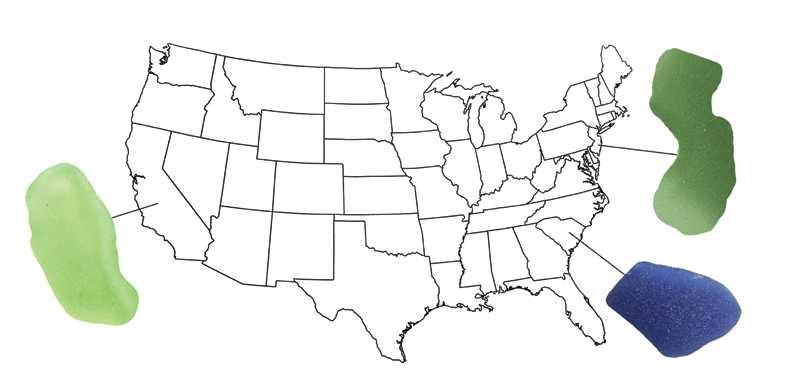
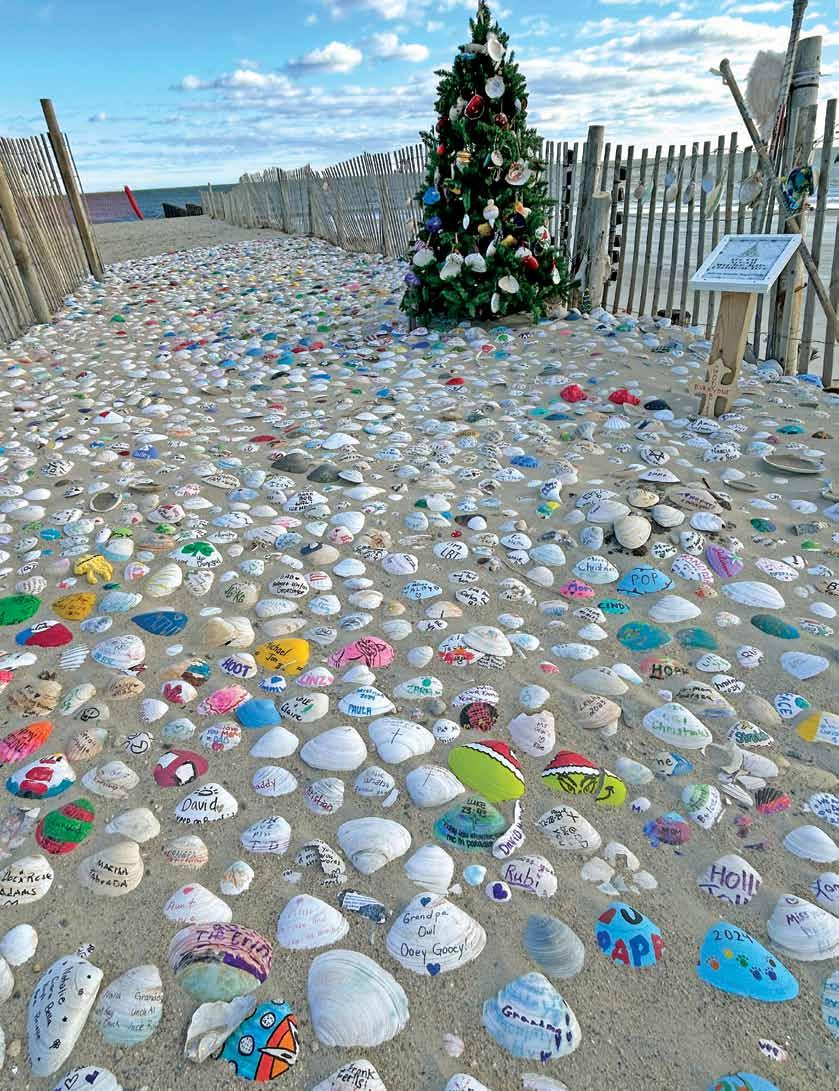


The much-loved annual event, The Garden Club of Long Beach Island’s “Holiday Tour of Homes” saw its fifty-seventh successful undertaking in December. Thanks to the generosity of Islanders who graciously opened their homes to the club’s design teams, the tour encompassed a number of Long Beach Island private homes in a variety of styles that gave attendees a captivating glimpse of the holidays on our barrier island.
Over 1,200 tour attendees traversed Long Beach Island, stopping along the way at five homes magically transformed for the holidays by the immense talents of The Garden Club’s decorators whose breathtaking designs brought the season to life in a style befitting the uniqueness of each venue. In keeping with The Garden Club traditions, fresh cut evergreen trees, greens, flowers, and live plants – together with handmade ornaments and features – were highlights throughout the day and provided holiday décor inspiration.
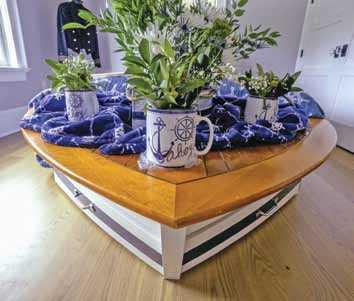
The Garden Club’s House Tour Luncheon Committee transformed the Brant Beach Yacht Club into a festively decorated, welcoming venue where attendees took time out to relax with a delicious boxed lunch, enjoy tranquil bay views and mingle.
Another highlight of the tour is The Garden Club’s Pop-Up Holiday Boutique which is kindly hosted each year by the Surf City Fire Company. Offerings at the boutique include homemade holiday cookies, lovingly baked and packaged by club members, a variety of beautiful fresh greens, holiday arrangements, and wreaths all handcrafted by The Garden Club’s Greens Committee, along with a wonderful collection of wares and gifts offered by a selection of local shops and artisans.
The Holiday Tour of Homes is one of two annual fundraisers sponsored by The Garden Club of Long Beach Island. Together with the Outdoor Living Tour hosted each year in June, The Garden Club’s raises funds to support local environmental initiatives, including their stewardship of three public gardens on LBI, college scholarships for local teens who pursue environmental studies, and workshops for local youth and seniors to foster a love of gardening and floral design. —Written by Diane Macrides, with Co-chairs Kim Carroll and Paula Brennan • Photography by Don Edwards and Lisa Tyson
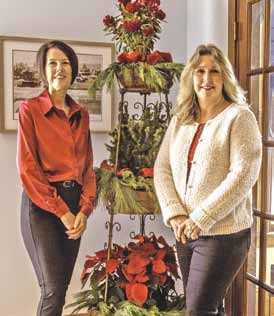


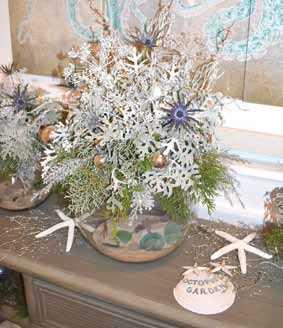


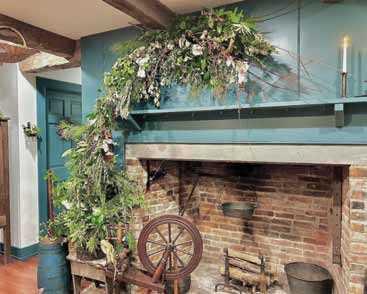
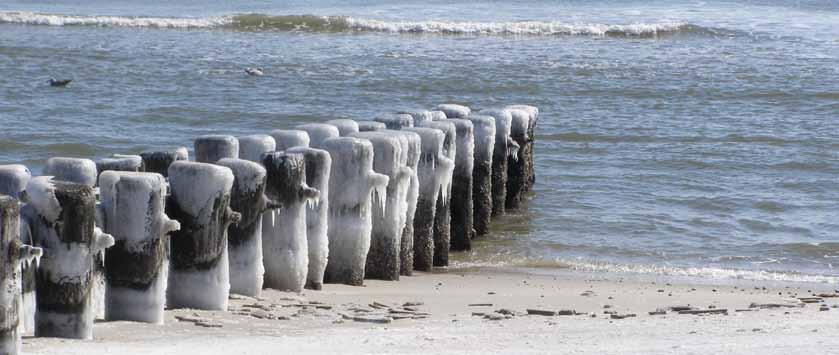






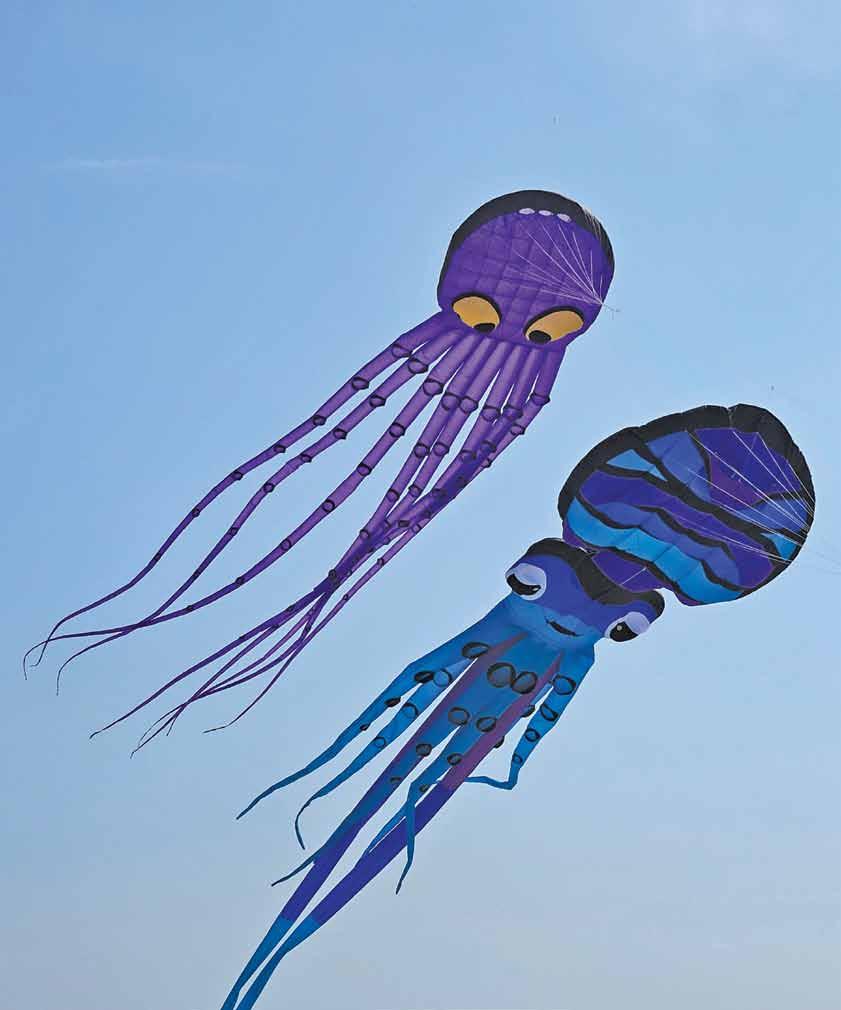



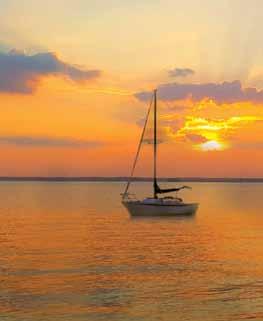
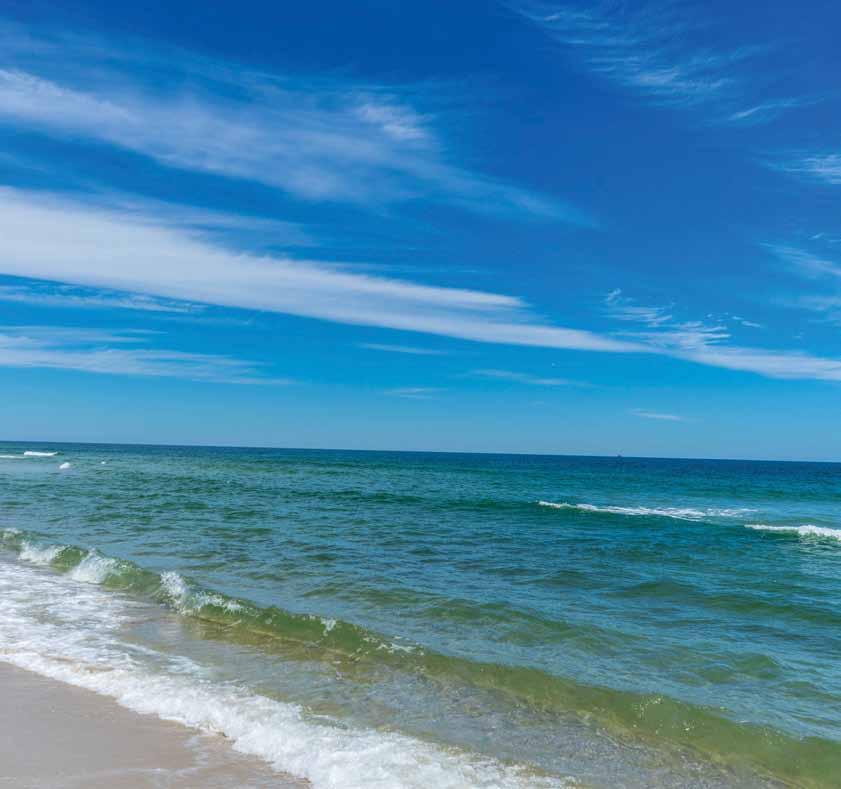



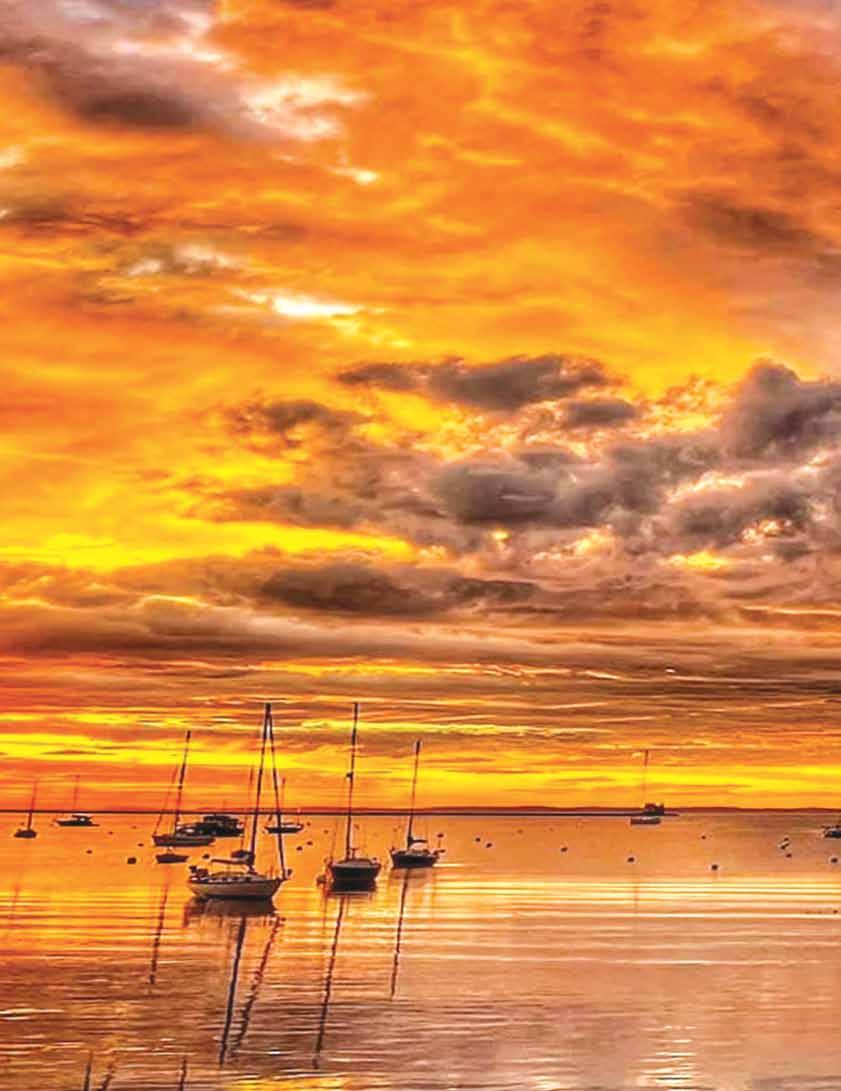

I have seen Le Mont-Saint-Michel I gazed upon the Archangel And sat within the Nave Walked along its narrow streets Of stone, so roughly paved
I have seen the Colosseum Wondered through the hypogeum Tried hard to envision The spectacles and cruelties Of the crowds and those imprisoned
I have been to Haleakala Swore that I had stood in Shangri-La Laid eyes upon the silversword And saw Pueo fly
As the clouds became my floor I have been on Mazinaw Lake
Listened to my voice reverberate Fishing from my wooden boat
In the shadow of Bon Echo Rock Etched with words that Whitman wrote
I have walked the streets of Positano In northernmost Salerno On the coastline of Almafi Bejeweled with golden lemons That taste as sweet as they could be
Now here I sit on Manahawkin Bay Not so very far away From my home in southern Jersey
Where the air is gently salted And tempered by the sea
—Written by Randy Rush
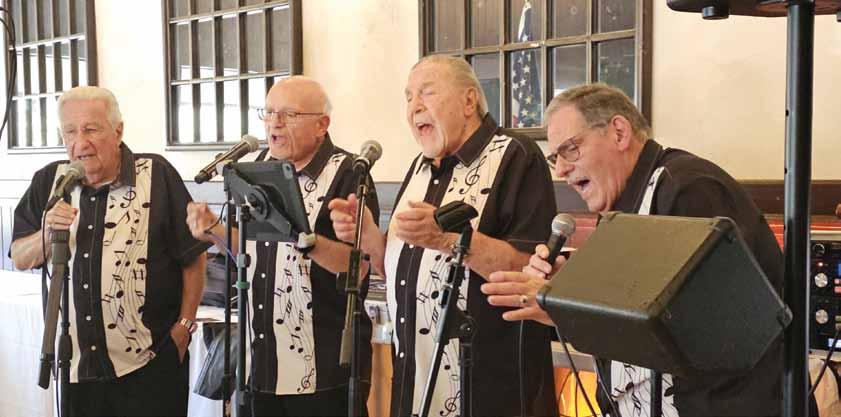
During the summer of 1964, I fell ill to a nasty cold which forced me off the playground and into bed for several days. In an effort to cheer me up, my mother bought me a copy of the Golden Hits of the Four Seasons. It was my first record, which I still own to this day. I played that album repeatedly for weeks. The driving rhythm section, crisp production and multiple part harmonies complimenting Frankie Valli’s vocal range were the perfect musical elements to accompany the lyrics which told the stories of teenage love. For a Jersey boy from Middlesex County, these songs resonated for me as no other had up to that point of my young life.
Later that same year, the world of popular music was turned on its ear with the arrival of The Beatles. When I first heard I Want to Hold Your Hand, I was stunned. I immediately scraped together my earnings from sweeping floors at the local barber shop and ran out to buy my second record — Meet the Beatles.
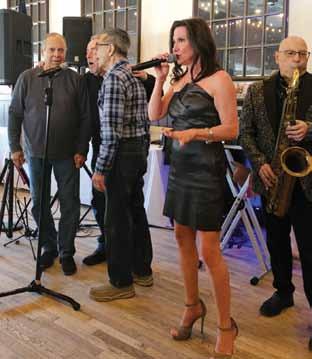
Though their points of origin were an ocean apart, significant similarities between The Four Seasons and The Beatles existed. Both bands played their own instruments, whether performing live or in the studio. Both groups wrote their own material. Both groups excelled in the use of vocals and harmonies. These elements, which were not the

ate I was about music and agreed to shell out the $20 for a student guitar as long as I promised to take lessons and study hard. So began my lifelong affair with music in general, and the guitar specifically.
norms at the time for most pop groups and singers, really struck a chord with me. Like so many others at the time, I yearned to be a pop star like my heroes. I talked my mom into buying me a guitar. This was no small request. We did not have a lot of money. My dad passed away when I was four years old, leaving my mom to raise two boys on the modest wages of a practical nurse. However, she could see how passion-
Bands and singers started popping up from all over the United States and Great Britain. So too did rock & roll radio stations, as well as record stores. There was a great hunger for pop/rock music, and the industry scrambled to feed that hunger. But underneath that veneer of polished professional acts lay a subculture of local musical talent eagerly trying to show their world that they, too, had something to offer. Inspired and influenced by such regional groups as Danny & the Juniors and the Silhouettes, Dion & the Belmonts, The Tokens, and Little Anthony & the Imperials as well as the Royal Counts, The Sheps, and Johnny Argyle & The Creations, the music scene down the Jersey shore exploded in the early 1960s. Locally, on LBI, The Soundmasters were a popular draw at diners, bars, fraternal halls, churches, libraries, and street corners. Today, the music scene on LBI and the local mainland is vibrant and thriving. Local bars and restaurants provide patrons with entertainment throughout the year — everything from open mic nights and cover bands to karaoke and live music. I have played at open mic nights in several local venues. It was at one of those venues that I first saw
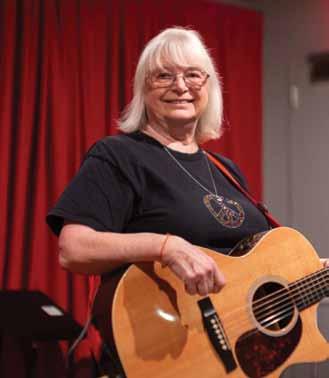
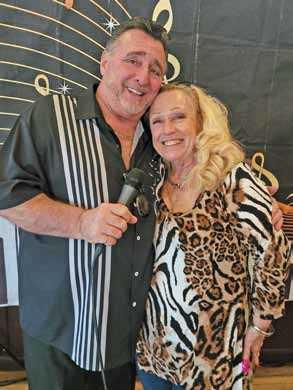
Denise Miller, a local singer, songwriter and guitarist who along with Mary Lutton and Gail Gilrane perform as Ladies Night Out, a country pop trio. Denise also plays and sings with her son, Jon.
The Entertainment Luncheon — South is the brainchild of Johnny Bishop and his wife, Linny. Johnny B, as he is known professionally, grew up on LBI, and is a former member of the acapella group, The Soundmasters. Currently he sings lead vocals with the Joey D & Johnny B Band. A little over two years ago, Johnny and Linny saw a need for a network for local musicians and entertainers to swap ideas and promote local entertainment. Once a month, since March of 2023, they coordinate Entertainment Luncheon — South which has turned out to be a fabulous opportunity for local musicians, mostly oldies and doo-wop artists, but not exclusively. Most of those in attendance are members of the Facebook group Entertainment Luncheon — South and have been specifically invited to attend each event. Amongst the attendees are musicians, singers, promoters, writers, actors, photographers, agents, historians,
journalists, and radio personalities from the New Jersey shore, New York, and Philadelphia. During each three-hour event, people mingle, talk shop, and catch up. Johnny Bishop MC’s each event and keeps things
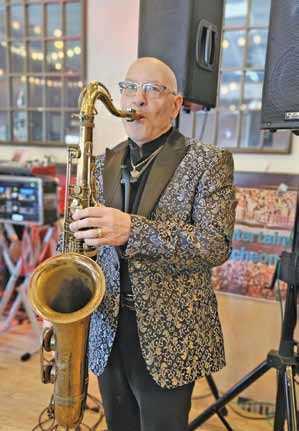
an important part of the gathering, the entertainment is the highlight of the day. On that afternoon, the Jimmy Givens Quartet was the featured entertainment, with Dorian Parreott on sax, Mark Cohn on keyboard, Jimmy on drums and Altha Morton on vocals.
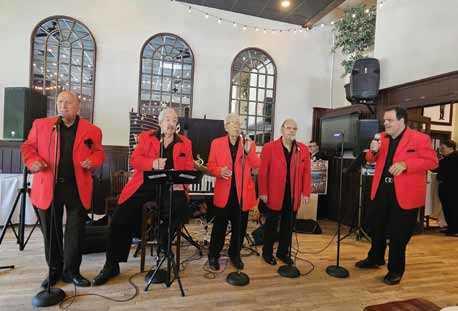
light. One of the things he has stressed is the brother/sisterhood that exists among all those in attendance. There is no competition among artists here. Johnny’s goal is for everyone to use the opportunity to get exposure amongst industry peers and grow their own brand. You can really feel the love and respect in the room.
Though networking and conversations are
Altha Morton, who fronts the quartet with her soulful voice sang versions of Cabaret, Satin Doll, All of Me, and Georgia, which she absolutely nailed. Dorian Parreott contributed with a masterly rendition of Hello Dolly, sounding remarkably like Satchmo himself.
The show was a fun trip back in time, presenting a chance to reminisce and enjoy the memories that the classic standards evoke. There is a reason they call these songs standards. They are timeless, and that is exactly what this audience is seeking — a journey back to memories that bring smiles to their faces. For at least the three hours we spent together honoring this music and the people that keep it alive, everybody in attendance was able to forget about their daily struggles, remember the good old days, and mingle with those who all had something in common — a
love for the music we grew up on.
Present that afternoon was a friend of mine, Carmen Landolfi, aka Carmonica — a multi-instrumentalist who is known best for his harmonica work with other artists and bands, among them The Pickles. He was gracious enough one time to sit in with me at an open mic night, where he played his harp on a version of Kokomo Arnold’s classic twelve bar blues number called Milk Cow Blues. I figured he could nail that song no matter what key I played it in, because he had a case full of harmonicas, each one tuned to a different key, and because he is very good at playing them.
Sitting with Carmen was Rick Que, who plays bass and guitar for several groups, among them The Broken Bones Band. Rick knows a ton of people in the music business in and around LBI, and he introduced me to Sal LoCicero, front man for the vocal group, Remember When.
Sal LoCicero sang with Johnny Angel & The Creations in the late fifties and early sixties. The band had appeared on Dick Clark’s American Bandstand and had recorded several records. An amiable veteran of the entertainment business, Sal shared with me how he first met the other members of Remember When in February of 2024. These guys are true veterans of the doo-wop world; they love playing and singing and giving their
audience a night or afternoon of memories and dancing.
Everyone I talked to at the Entertainment Luncheon — South gathering still performs because they love music, and they get the biggest thrill out of making people smile. It really is that simple. Entertaining the fans and keeping this music alive is what matters.
Oldies and doo-wop shows are performed regularly on LBI and the nearby mainland. Many hotels and restaurants book popular local acts like Chris Fritz, Ty Mares, The Nerds, Shorty Long and the Jersey Horns, and others. Many venues offer evening and sometimes afternoon entertainment from a variety of musical acts featuring classic rock, pop tunes, R&B, soul, folk, and country music and rap. But the oldies and doo-wop crowds can also be found at some of the lesser-known venues in the area such as the Beach Haven Moose Lodge, Manahawkin Elks Lodge, local churches, Ship Bottom

Waterfront Park, Sunset Park in Harvey Cedars, the Municipal Dock in Barnegat, and the Stafford Township Arts Center among others. These shows highlight those groups who keep the oldies alive.
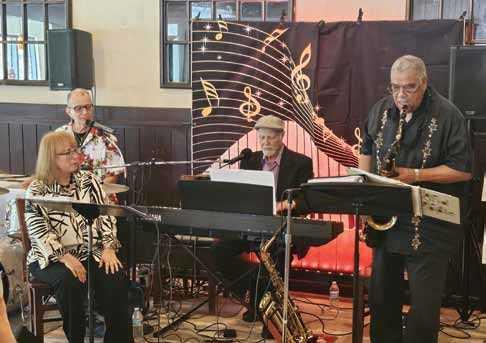
Sal LoCicero shared a video with me of a performance from a prior event. I could sense the enthusiasm and love he and his bandmates have for performing these memorable tunes. In the video I could see how folks who grew up in the 1950s and 1960s got up and took to the dance floor, dancing to the music that tells the stories of their lives. They danced and reminisced, reliving their memories, the joys, and yes, the sorrows that are part of who we are. That is why this music is still so popular. It takes us back to a world we knew and loved. Teen romances, school dances, late nights at the diner, the freedom of youth that we did not really appreciate until we grew up. Oldies shows give us that — a chance to revisit our memories.
So, check out your favorite social media or a local newspaper to find out where some of these groups are playing. You cannot see The Soundmasters perform, but you can catch Remember When, the Joey D & Johnny B Band, Denise Miller, the Jimmy Givens Quartet, or any of the dozens of local performers which are available for our entertainment pleasure down the shore. —Written and photographed by Randy Rush
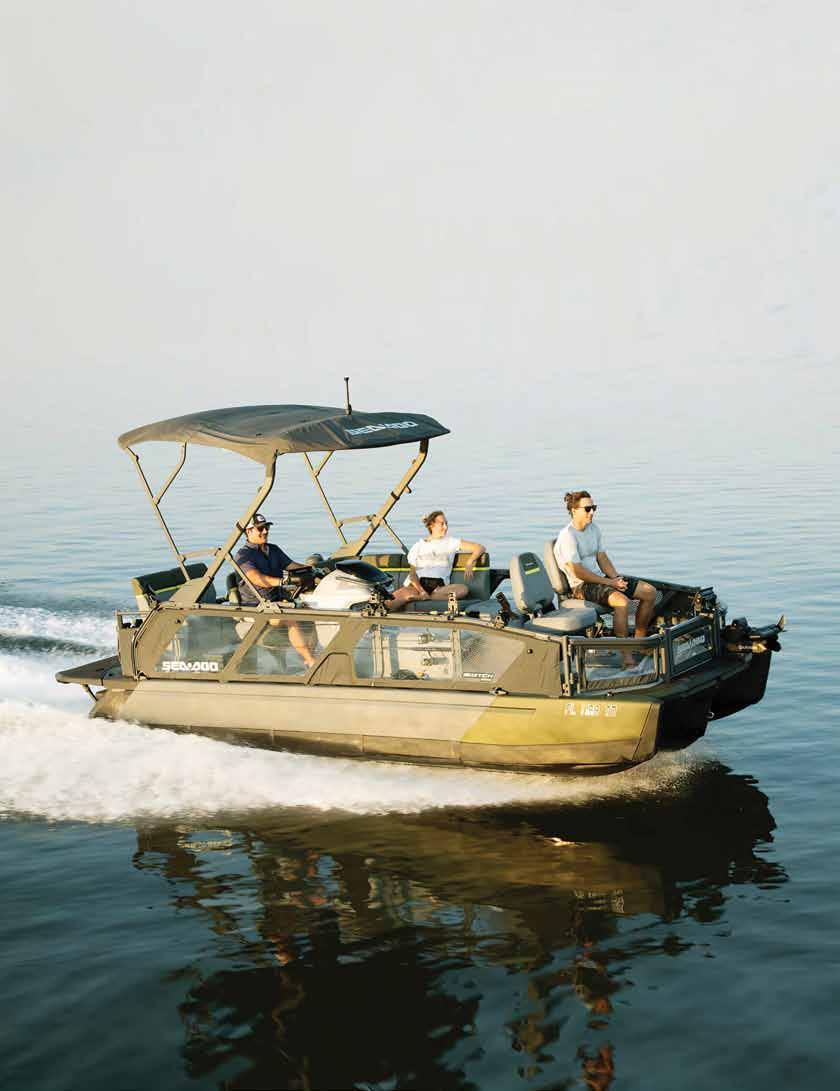

Long Beach Island’s 18 miles of sun, sand, and surf are enjoyed by countless visitors and locals every year. But for those who are physically or mobility challenged, the joys of the beach can be beyond their reach. Seeing this need, the Borough of Ship Bottom launched a Beach Wheels program in 2002. Since then, the program has been a tremendous success.
Beach Wheels are lightweight wheelchairs constructed from PVC pipes with oversize wheels designed to navigate difficult beach terrain. The Beach Wheels program, which provides the specialized wheelchairs free of charge, operates throughout the year. From June 15th through Labor Day, it is administered by the Ship Bottom Beach Patrol. During the off-season it is operated through the municipal clerk’s office in conjunction with the Ship Bottom code enforcement officer, Matt Bernstein.
“Enjoying the beach is a big part of the human experience,” says Bernstein. “Most people love the feeling of sand on their feet and the wind in their hair.” He sees firsthand the positive impact the program has on physically challenged people of all ages and their loved ones.
According to Bernstein, it takes a team effort to make the Beach Wheels program work. The Ship Bottom office staff, the governing council and the lifeguards are all instrumental in making it a success. Recently, the program and staff received a letter of heartfelt gratitude from Tore Larsen after having utilized the Beach Wheels program for his sister, Molly.
Every other year, the Ship Bottom Borough has the opportunity to apply for a grant that supports handicapped accessibility for its parks and beaches. Last year, the borough secured a Community Development Block Grant (CDBG) Program to purchase two four-wheel drive
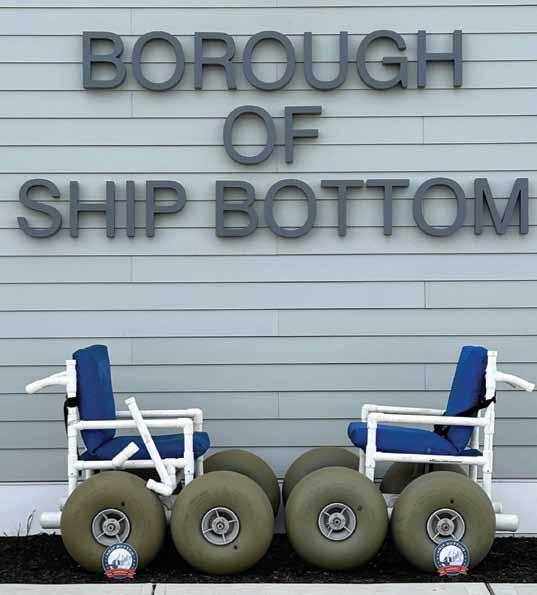
utility terrain vehicles. The service known as the Ship Bottom Beach Taxi provides transportation for physically challenged people who would otherwise struggle to reach the beach. The service is free of charge and runs from Father’s Day weekend to Labor Day.
The Ship Bottom Beach Wheels and Beach Taxi programs put the beach within reach with just a phone call and a reservation.
—Diane Stulga • Photography by Matt Bernstein
For more information about the Beach Wheels and Beach Taxi programs and how to make reservations in your borough contact the following:
• Barnegat Light: (609) 494-9196,
• Harvey Cedars: (609) 494-6905
• Long Beach Township: lbtbp.com/ beachwheels
• Ship Bottom: (609) 494-2171 (summer ext. 145, winter ext. 131)
• Surf City: surfcitynj.org/beaches
• Beach Haven: (609) 494-9481

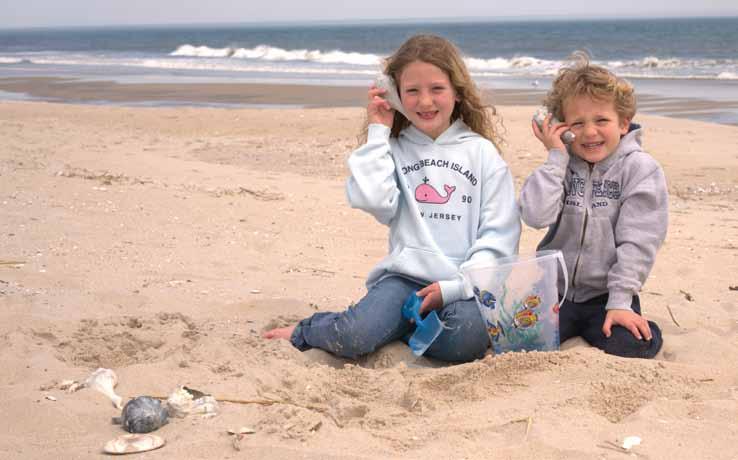
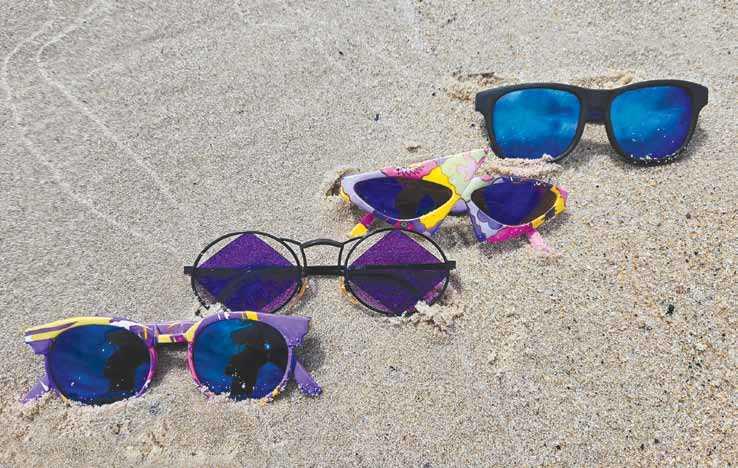




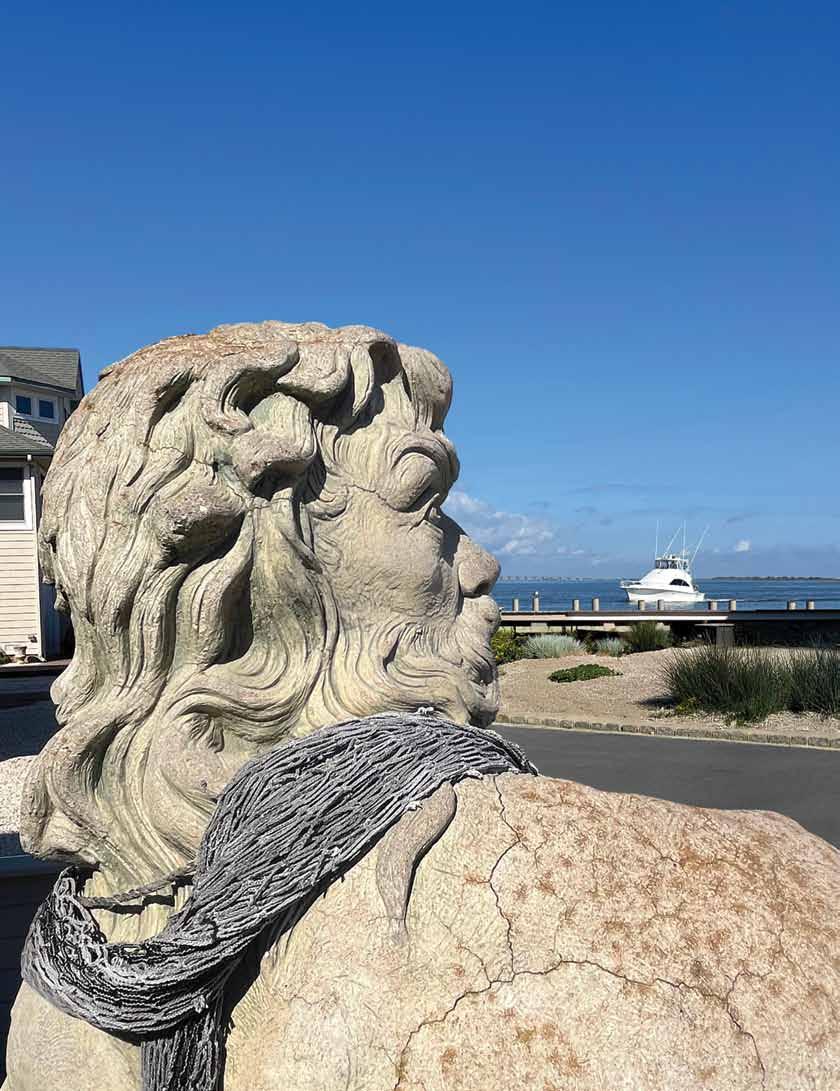
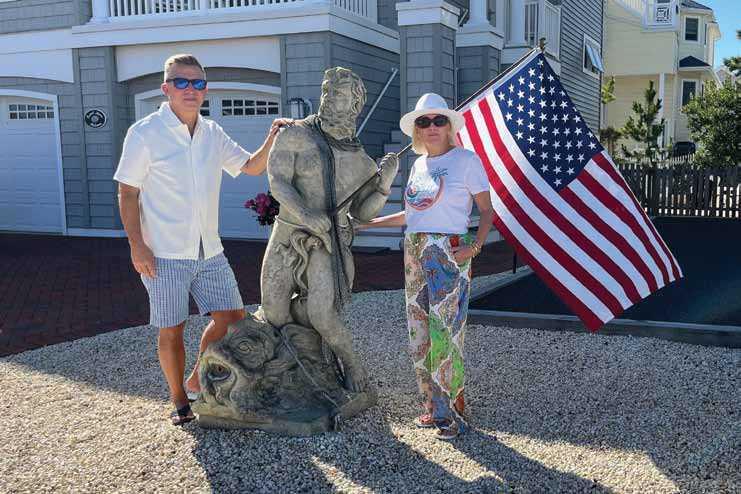
For as long as I can remember, the statue of King Neptune has stood on the boulevard in Beach Haven Terrace — a sentinel of stone amidst the ebb and flow of tides, watching over the beach, the bay, and all who call Long Beach Island home.
Over the years, my heart grew fond of his presence, as did the hearts of many others in the community. When I heard the news King Neptune was to be sold and moved away, no longer to stand on the boulevard, a fixture in our lives — it felt as though another part of our shared history would be lost. I knew then that I had to do something, for this statue was more than just a piece of art; it was a living memory of our past, a guardian of the present, and a promise to the future.
Perhaps you can sense I am a bit sentimental, especially when it comes to LBI. Our families have gathered on the same street in Beach Haven Park since the 1960s, creating traditions and forming lasting memories too numerous to recount here. For over 20 years, my wife, Cristina, and I have owned our home on the very same street, continuing family traditions and making memories of our own. I knew that if Neptune was to be moved, he must stay close. Then I thought, why not here at our LBI home where he could continue to offer his protection, his strength, his timeless wisdom to us and all that gather here.
With little hesitation, I reached out and a deal was struck.
The statue arrived at our home on a warm afternoon, the sun casting a golden hue over the bay as the delivery truck pulled into our front yard. With careful precision, we placed him on a platform which my brother-in-law and I had built, ensuring he would have a perfect view of the bay. There is deep comfort in knowing King Neptune remains a part of us, his towering form guarding the shores as the sea continues its eternal dance. His presence whispers of resilience — of storms weathered and calm seas ahead. He watches as we go about our lives, a tangible reminder that some things, like the ocean itself, are meant to be constant, ever-present, enduring. My hope, as I stand beside him now, is that King Neptune will never truly leave. That this statue, which has been part of our community for so long, will stay a fixture in the lives of future generations. I hope that, long after I am gone, someone will look upon him with the same reverence, the same affection, and the same sense of belonging that I feel today.
From his new post King Neptune’s trident will still point to the sky, his gaze steadfast upon the bay, a symbol not only of the waters he once ruled but of the strength, unity, and love that binds us together in this place we call home, Long Beach Island. —Dan Marselle
The Garden Club of LBI’s Youth Committee met on January 29 to create flower arrangements for St. Valentine’s Day. Thirteen children in grades three to six gathered with cochairs Ginny Scarlatelli and Jeannette Michelson at the Surf City branch of the Ocean County Library to create Valentine flower arrangements to take home to someone special.
In Victorian times, the colors of flowers were used to convey romantic messages. With that in mind, The Garden Club selected scarlet carnations for love, pink alstroemerias for happiness, and white mini carnations for innocence and purity. Club members, which included Paula Cafone and Pauline Gertzen, also contributed greens from their own gardens.
Working like professional floral designers, mindful of creative elements such as line and balance, the children filled their galvanized, heart-decorated containers with fragrant flowers. To enhance their arrangements, each child also created a cherubic pink cupid. Their beautiful Valentine flowers were soon ready to give away to someone special.
Every year The Garden Club of Long Beach Island sponsors five flower design workshops for children. The program is now in its sixth year. Support for this and all Garden Club community events comes from the Outdoor Living Garden Tour and Art Show, this year on June 19, and the Holiday House Tour, coming on December 10 &11. —Gillian Rozicer • Photography by Jeannette Michelson



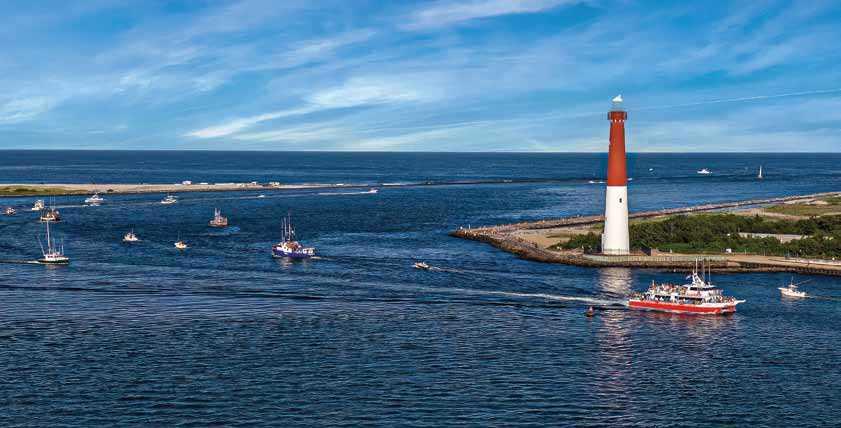
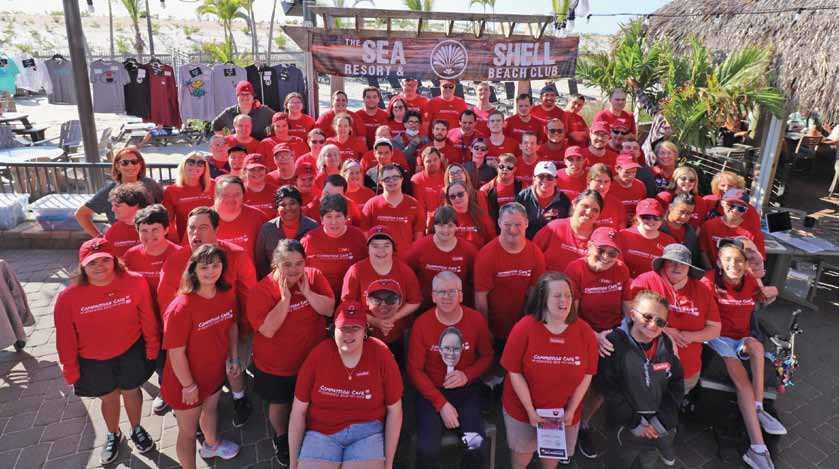

At the closing ceremony for the 2010 Winter Olympics in Vancouver, British Columbia, Neil Young performed his famous song “Long May You Run”. The Olympic flame was then extinguished. The games were over. Athletes, coaches, families, and spectators all went back to their own lands. Perhaps they brought with them the feeling of community and belonging that is so integral a part of the Olympic experience.
The spirit of the modern Olympic Games has always been embodied and represented by the marathon running race. That race is itself named for The Battle of Marathon (490 BC), at which the greatly outnumbered Athenian army soundly defeated the superior forces of the invading Persian Empire. Pheidippides, who was a courier, a long-distance runner, brought the message of improbable victory and hope back to Athens before collapsing and dying.

It is fitting in a number of ways that Mr. Young chose that particular song. Though it was written about his 1948 Buick Roadmaster hearse. Yes, a hearse. The title “Long May You Run” is a perfect fit as an anthem for the Olympics for every competitor in the games.
Whether female or male, old or young, however able or differently abled they may have been. It was a tribute to the hard work and dedication that those amateur athletes put in to show their mettle or perhaps to discover it. And long may they all run, beyond the end of the games. May they take that spirit home and spread it throughout the world.
And so, it was in that same Olympic spirit that on Sunday, October 13, 2024 The 52nd Annual LBI Run took place. The final, official number of runners who crossed the finish line of the 18-mile course — Holgate to Old Barney — was 628. Every one of those fearless, determined, dedicated folks, ranging in age from 16 to 77, braved unusually warm temperatures and physical exhaustion to complete the Island’s own version of the grueling race that has been memorialized since the time of Ancient Greece.
Compassion Café LBI was represented in the race by Jack Massaro, a veteran customer service staff member at the Café. Jack is a dedicated runner who trains hard year-round. He proudly finished in the top third of all runners, cheered on by a throng of very vocal
Compassion Café staff, parents and volunteers. Jack also had the unwavering support of runners from Achilles International’s NYC chapter, who had been training with him in preparation for the famous New York City Marathon, which followed a few weeks later. A very special shoutout also goes to Jack’s running mate from Achilles, Andrea Quaregna, who was with him every step of the way for the LBI Run. Note: Jack also competed in and finished the London Marathon earlier this spring.
Before the race began, we joined the Compassion Café group stationed at the Beach House Restaurant. There were signs and noisemakers and words of encouragement that went out to all who passed in front of us. Even though we were only at mile number 4 of 18, it probably took close to an hour for the hundreds of runners to pass by in front of us. At first, I believed we were there to cheer on one runner. But that did not turn out to be the case. From our vantage point, it was obvious who the more capable, the more athletic runners were without question. While they certainly raised eyebrows and garnered cheers with their displays of physical prowess, they were NOT the ones who received the loudest cheers, or who moved the crowds of spectators the most. Those who made the greatest impression were those who seemed to be in the most discomfort; those who worked through their physical challenges. There they were, in both body and soul. We witnessed their determination, and we cheered, usually getting a thumbs up in return. We also received something we did not anticipate, something we could keep with us long after we left that day. It was a memory, a picture if you will, of a struggling runner, giving her/his all, one leaden footfall after another, until the race was over and victory obtained. That does not necessarily mean victory on the racecourse, but rather in life itself, for where there is participation there is life. Where there is effort there is life. My favorite hobbit, Bilbo Baggins, once said, “Where there is life there is hope.” That is all we need to remember.
The Sandpaper, Bob Yates, a 77-year-old resident of Beach Haven, continued to run, finally crossing the finish line long after the scorekeepers and organizers went home. He continued to run though the tally was already taken, the crowds had dispersed, and the names were written in the log of history for the race. But for a letter sent by his friend, this man's accomplishment would have been unknown to the world. Of such stuff is the value of friendship realized.
It was truly an inspirational morning, reminiscent of the personal challenges that our own loved ones with special needs face every single day. It reminded me of the quest for recognition, self-respect, accomplishment, and inclusion that is the essence of Compassion Café. It reminded me of the sense of community that can be shared whether participating in a foot race, volunteering at a food bank, gathering supplies for folks in storm-ravaged communities, or being part of a team of emerging customer service representatives, working for their first paycheck.

The value of sports in our lives is that it fosters within us a sense of competition, a sense of camaraderie with teammates, a sense of belonging and participation — even for spectators, even for those on the sidelines. When your favorite team wins, you win along with them. Well, on the day of the LBI Run there was really only one team — with over 1,000 members! The beauty of that day was that it turned out to be for everyone — for those who ran, those who cheered, those who passed out water bottles, those who crossed the finish line, as well as those who did not. So, dear reader, consider joining the winning team and run on down to:
Compassion Café at the Oceanfront Sea Shell Resort 10 S. Atlantic Ave, Beach Haven Tuesday, May 13 through Thursday, September 11, 2025 7 am until 11 am
It was stated that the official number of runners who crossed the finish line was 628. However, this does not include almost 400 runners who were part of the shorter 12K race that finished at The St. Francis RC Center in Long Beach Township. The official results also state that the time for the runner who finished at number 628, Judy Klein, age 65 from Palmyra, New Jersey, was four hours, forty-two minutes, fifty-nine point three six seconds and the eldest runner who finished was Donald Younkin, 76 of Philadelphia. According to a letter to the editor in the October 30th edition of
Compassion Café seeks the integration of teens and adults with intellectual and developmental disabilities through paid parttime summer employment in a small coffee shop environment with free hands-on training and ongoing support in an atmosphere of joy, community, love, and unconditional acceptance. By providing meaningful employment our employees gain independence, self-confidence, and work skills for future success. Compassion Café is a 501(c)(3) partnering with local businesses in a true, non-profit model. —Written and photographed by Joe Guastella

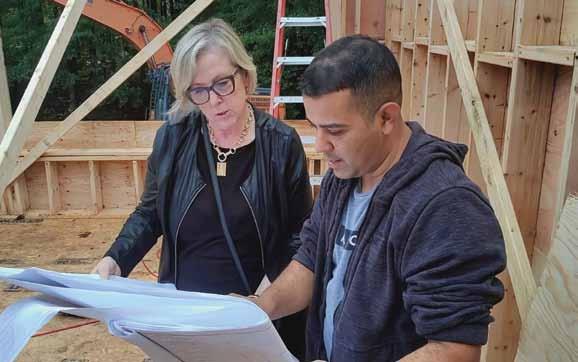

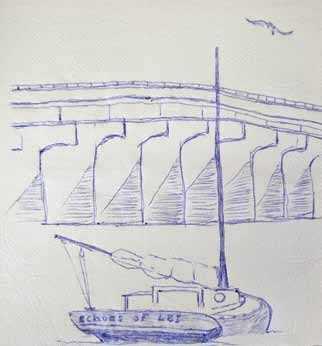

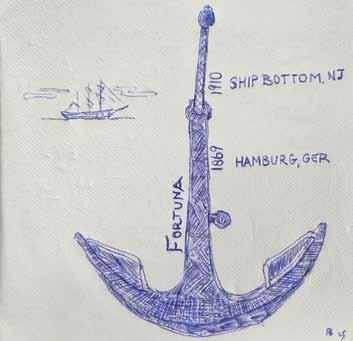
It all started in 1957. Though not diagnosed with Attention Deficit Disorder at the time, as a child I was as A.D.D. as you could get. My kindergarten teacher noticed that during any given lesson, I was more likely to draw anything I could see outside the classroom windows than to follow her instructions. Fortunately, she was ahead of her time and very understanding.
She encouraged me to express myself through my drawings. At the end of the school year, she gave my mother a sheath of drawing paper and advised her to use art to channel my excess mental wanderlust.
During my work career, I traveled up and down the eastern seaboard of the United States, spending a great deal of time in hotels and dining alone in restaurants. Still A.D.D., I could not just sit in a restaurant and stare at the walls. Instead, I took to drawing my fellow diners, the waitstaff or the establishments décor. Most of the time, because I did not carry paper with me, I drew on the restaurant napkins. When I dined at fine restaurants with linen napkins, I always asked the staff for something to draw on, and most of the time they accommodated me.
Over the years, I have enjoyed gifting my artwork to the people I drew. Some liked their caricatures, others critiqued my work and offered suggestions, and others, well, could care less.
I guess it all adds up to channeling my wandering mind and making people happy for a moment. —Artwork and story by Rick Baldt
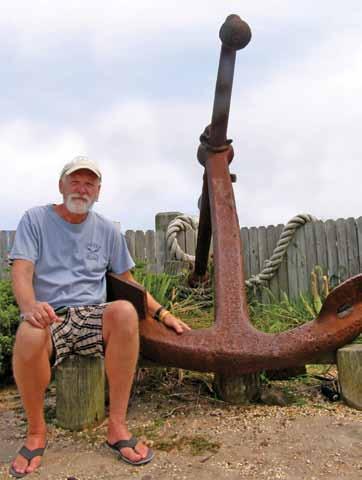








BRAd ZiFFeR, a native of West Orange, New Jersey, fell in love with LBI as a teenager while summering in Surf City.
Now a successful singer, voice-actor, pianist, and producer, with his own record label, Starlux Records, Brad has his own recording studio where he records voice-overs, and produces, mixes, and masters music for himself and others. His love of oldies and Doo-Wop reaches far and wide. His cover of Bobby Rydell's hit, “Wildwood Days,” is currently available for streaming and digital download.
Brad recently relocated to Manahawkin with hopes of finding the ideal spot for his son to attend school and grow in a family-oriented, healthy environment within close proximity to the beach.
This October, Brad will be performing at the LBI Sea Glass & Art Festival at Things A Drift in Ship Bottom, New Jersey. For information on his upcoming performances, and to hear some of his music, follow him on Facebook, YouTube and Instagram @BradZifferProductions and bradziffer.com.
Brad loves God, the shore, being a dad, and being creative. He now lives where his heart has been calling him all along.

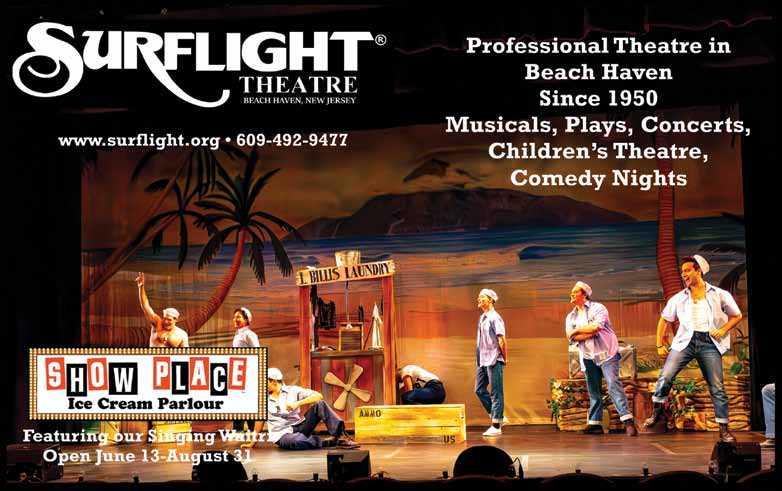
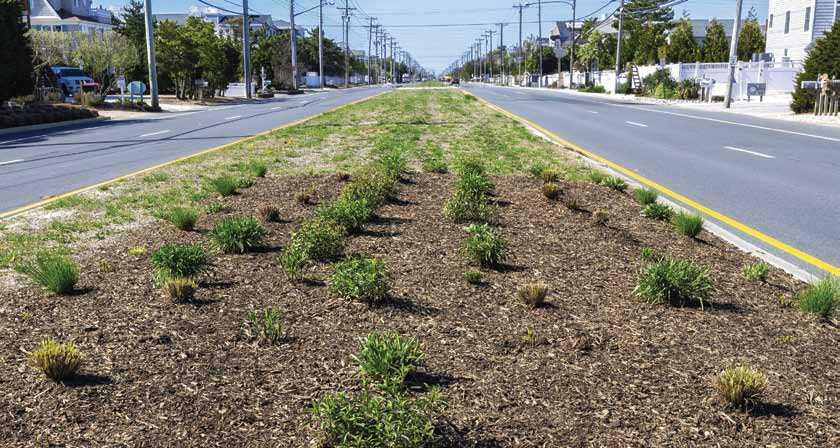







Native New Jersey plants offer numerous incredible benefits, including improved environmental health, reduced maintenance, and support for wildlife. Plants native to Long Beach Island are adapted to local coastal conditions, requiring less water, fertilizer, and pest control. They provide food and shelter for native birds, insects, bees, butterflies, and local wildlife. Many native plants are stunning in their presentation of fragrance and color all year.
On March 27, more than twenty LBI residents launched the first native wildflower garden on the median strip of North Beach. The flowers and grasses will be a highly visible tribute to all the benefits and beauty of native plantings. The intent is to add more gardens in North Beach and to inspire homeowners and other townships to follow.
Long Beach Township Commissioner Al Meehan and Bill Walsh, president of the North Beach Taxpayers Association, the garden’s sponsor, broke ground for the 15 x 30 garden. Gillian Rozicer, vice president of NBTPA created the project and enlisted the help of landscapers Dan Hoch and Jason Austin, and Garden Club member and Master Gardener Debra Cowles.
The native plants in the North Beach Garden were selected to flourish in LBI’s natural coastal barrier island region. Add a few to your own garden and make a difference. —Gillian Rozicer • Photography by Jeannette Michelson

Growing up in New Jersey, my family spent our summers at the Jersey shore. Owning a home on Long Beach Island had long been my dream. In 2020, my family and I made that dream come true when we purchased a house in Beach Haven West. Since then, my family and I have spent our days on the beach soaking up everything LBI has to offer. One of our favorite things to do is to walk the beaches collecting seashells and sea glass. On rainy days and over the winter months we spend time painting the many seashells we find.
In 2024, my boyfriend and I decided to get healthy and quit smoking. To quit smoking, I needed something to fill my free time other than television. Luckily, inspiration came one afternoon when my daughter asked for permission to sell some of our painted LBI seashells at the lemonade stand she had set up with her cousins.
Maybe selling our painted seashells could be a small family business. And just like that, LBI Sea Shells was born.
In the following weeks I set up a website and social media pages for our new business venture. Next, I reached out to Cheryl at Things a Drift in Ship Bottom as an outlet for selling our LBI Sea Shells
It has been a year, and I could never have imagined that starting a business would come out of me quitting smoking. Having a family business has been a great positive life lesson for my children. We hope to eventually turn our family seashell business into an LBI bed and breakfast.
As for me, this experience has affirmed that the most beautiful thing about LBI is not the beaches. It is the people. —Artwork and story by Jennifer Wiecek
For the sixth time in six years the same wild mallard duck has chosen to nest in a planter on our deck. She is a very smart duck because she knows my husband, Vic, feeds her duck food and gives her fresh water every day. After they hatch, her ducklings also enjoy waterfront dining at its finest. When it is time, just as she has done in the past years, momma duck quacks loudly for Vic to come help her bring all of the ducklings down from our deck to the lagoon. Vic carefully gathers each one in his fishing net and gently places them into the water below where she anxiously waits for them. Happily, just as we were dealing with empty nest syndrome, the very next day our beautiful swans arrived with their seven cygnets. We feel blessed to witness these magical moments of motherhood in nature. —Written and photographed by Diane Stulga



Imagine stepping outside your door into a private coastal paradise. Jersey Shore Pavers brings that vision to life. As a premier landscape design and installation company serving the New Jersey shore, they specialize in custom patios, outdoor kitchens, fire pits, and more, turning ordinary yards into luxurious retreats.
Their expert team combines precision craftsmanship with coastal style, creating outdoor spaces perfect for relaxation and entertainment. Carefully chosen native plantings, from salt-tolerant shrubs to pollinator-friendly perennials, enhance the landscape’s beauty and sustainability, thriving naturally in coastal conditions.
To further elevate your property, the team at Jersey Shore Pavers installs elegant, cultured stone features and low-voltage lighting, blending safety with sophistication. Using advanced 3D design technology, they bring your vision to life before construction even begins — ensuring a seamless, personalized experience.
With a deep commitment to quality, sustainability, and customer satisfaction, Jersey Shore Pavers crafts outdoor living spaces that stand the test of time. Let them help you create the coastal escape you've always dreamed of — right in your own backyard.



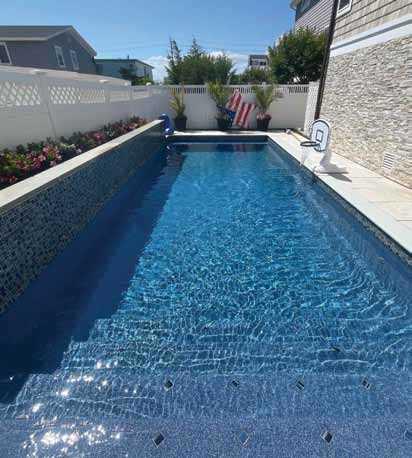
Laura and Joe Hutchison started Hutchison FIBERGLASS POOLS in 2003. Their son, Joe Jr. would go on to become partner and co-owner in 2017. Through hard work, integrity, and an unparalleled commitment to their customers — Hutchison Fiberglass Pools became and continues to be the premier fiberglass pool company of Ocean County.
Today, more than two decades later, Hutchison Fiberglass Pools is an award-winning family business. These days, Joe Jr. and Laura’s two daughters, Alyssa and Nicole, Laura’s father, Al Vero, and Olivia McKittrick, a close friend who is like a third daughter, are all part of the Hutchison’s in-office team.
From day one, maintaining their commitment to upholding the highest degree of integrity and professionalism has always been and continues to be the Hutchison family’s highest priority. When customers choose Hutchison Fiberglass Pools they become part of the family.
Under the direction of Joe Sr. and Nicole Hutchison the installation department is dedicated to turning the backyard of each customer into a personal oasis. Together with a well-trained crew and a relentless commitment to excellence they successfully make dreams of outdoor living come true.
On the service side of the company, Joe Jr. and Olivia have put together an outstanding service department. With an unsurpassed response time to any issue and an all-inclusive service program — Hutchison’s provides weekly service to more than 350 pools and opens and closes more than 500 pools annually.
The Hutchison family of Hutchison Fiberglass Pools is mindful of giving back to their community in many ways. They believe you can only be as good as the community you are a part of.
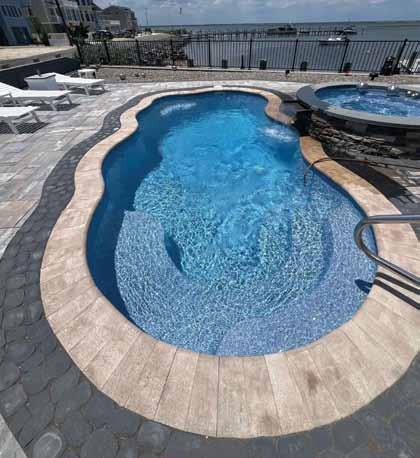



For more than sixty years Walters Bicycles & Pedego LBI in Ship Bottom has been a cornerstone of the business community. In January of 2025, Jason Walters and his wife, Avery, became the third generation to own and manage the family’s legacy business, representing three generations of hard work, quality, and tradition.
“Most of my childhood memories are centered on my dad’s bike shop,” says Jason Walters. “I grew up work ing alongside of my dad. I always knew I would be involved.” Now a Marine Corp veteran, Jason credits his time in the military for changing his outlook on life and for teaching him the value of dedication and service.
Customer service and serving the community have long been a tradition for the Walters family. Walters Bicycles in conjunction with local police departments sponsors the Annual Bike Rodeo held at the Long Beach Island Elementary School on 20th Street in Ship Bottom. Bikes are checked for safety issues and when needed, repairs are made. Participating children receive helmets, horns, and other equipment donated by the Kiwanis Club of Long Beach Island. There is also an obstacle course where the children learn to operate their bikes safely.
the Beach, in 1965 the business was renamed Walters Bicycles when Bob and Margaret became full-time residents of Ship Bottom. Jason’s father, Tom, took over the bike shop in the early 1990s and operated it for more than thirty years before retiring recently. During his tenure it became Walters Bicycles & Pedego LBI
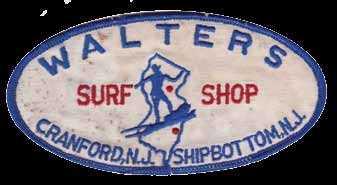
Each generation of Walters has brought something new and exciting to the business. Tom introduced Pedego Electric Bikes. Under Jason and Avery’s ownership, Walters Bicycles continues the tradition of offering innovative and market-changing bikes with the introduction of SE Bikes — a BMX brand with a long history and significant presence in BMX cycling. “It’s an exciting time,” says Jason.
Jason and Avery were married in 2018 at Brant Beach Yacht Club. In a style much befitting a family with a long history of bicycles, the bride and groom rode a bicycle built for two. As an expression of gratitude to their bridesmaids and groomsmen, each member of the wedding party was presented with a bike.

Jason’s grandparents, Bob and Margaret Walters, were originally from Cranford, New Jersey. “My grandfather always wanted to own a bike shop. In 1957, he purchased a garage on Long Beach Boulevard and 5th Street in Ship Bottom and converted it into a retail shop with living quarters upstairs.” Originally named Walters Equipment for
Today, as Jason and Avery raise the fourth generation of Walters they are honored to keep the wheels turning for the next generation.
Walters Bicycles & Pedego LBI is a full-service shop offering maintenance and repairs. The shop carries a wide variety of bikes and cycling gear. —Diane Stulga • Photography courtesy of the Walters family
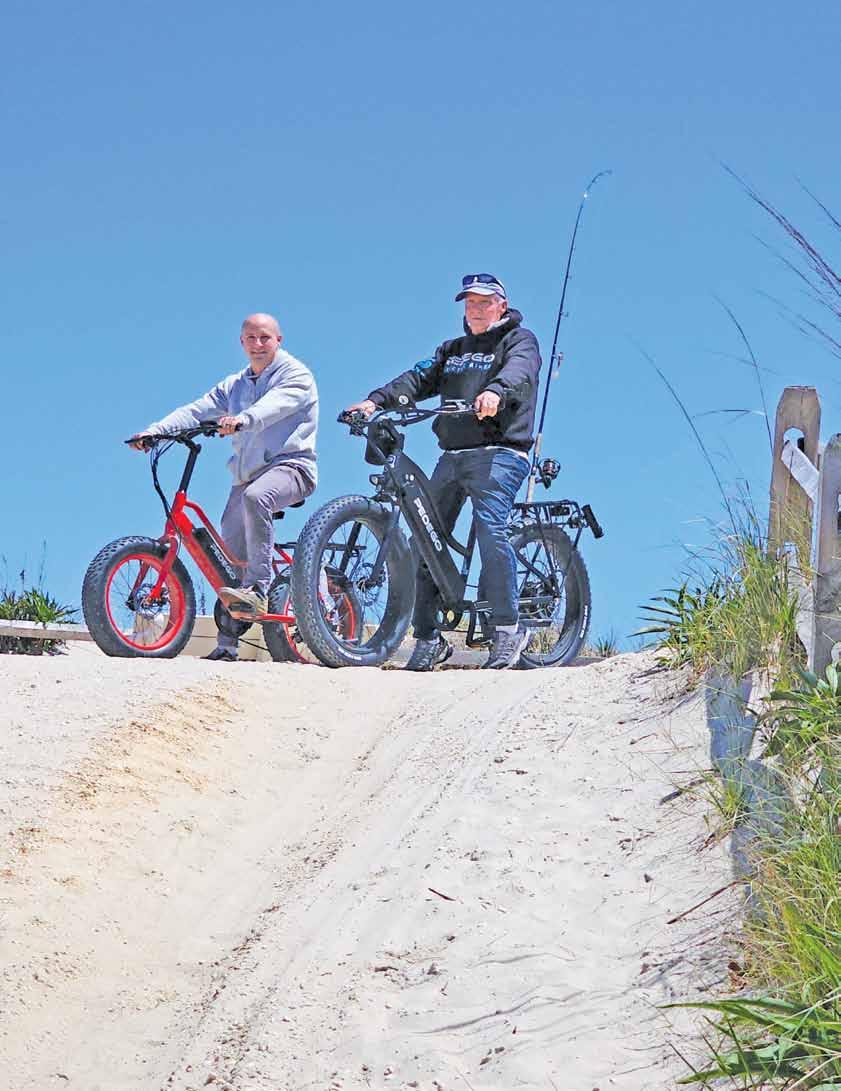


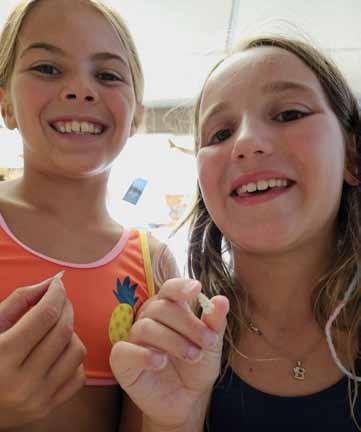


Our Echoes of LBI family held a mini Chowderfest in 2024. Here are some of our favorite recipes that are sure to be yours too!

iN g R edie NTS:
4 slices thick cut bacon (diced)
1 small chopped onion
3 chopped celery stalks
2 cloves garlic
1/3 cup all-purpose flour
4 cups seafood stock
5 medium chopped red potatoes
1/4 tsp dried thyme
2 bay leaves
d i R e CT i ONS:
4 oz salmon (diced)
4 oz bay scallops
4 oz cod (diced)
4 oz deveined raw shrimp raw
5 oz whole baby clams drained
8 oz heavy cream
1 cup corn
1 cup spinach chopped
2 tbsp well minced parsley
Salt and pepper
In a large stock pot, cook the bacon over medium heat until crispy. Add the celery and onions, cooking until translucent. Add the minced garlic and cook until fragrant, being careful not to burn the garlic. Stir in the flour, coating all, and continue cooking until the flour begins to brown. Very gradually, pour in the seafood stock, about two tablespoons at a time, whisking it into the flour and veggie mixture. There should be no visible liquid between each pour, as it gets absorbed by the roux. Continue until you use all the liquid, pouring more quickly at the end. Add the potatoes, thyme, and bay leaves and bring to a boil. Reduce to a simmer and continue cooking for fifteen minutes. Add in the cod and salmon, and cook for five minutes. Then add the shrimp and scallops, cook for 3 minutes. Stir in the cream, corn, spinach, and clams, and let those heat through for a minute. Remove from the heat and stir in the fresh parsley. Season with salt and pepper to taste. —From the kitchen of Mary Ann Himmelsbach
iN g R edie NTS:
50 fresh raked clams (soaked, cleaned, and finely chopped)
10 fresh garden tomatoes (diced and remove seeds)
2 ½ cups celery (diced)
2 ½ cups carrots (diced)
1 ½ cups sweet onions (diced)
2 1/2 cups corn
6 bay leaves (remove before serving)
1/4 tsp ground pepper
3 sprigs of fresh thyme (remove before serving)
d i R e CT i ONS:
Gently steam clams until open. Put broth aside. Remove each clam from shell and chop with kitchen shears, rinse, and cook in broth for ten minutes. Combine all ingredients and cook low for forty minutes. Add water if needed, according to amount of broth used. Do not add salt. Serves sixteen. —From the kitchen of Denis Kirby
iNgRedieNTS:
1 lb of large shrimp (peeled & deveined)
1/2 lb scallops
1/2 lb monkfish
1/2 lb fresh lump crabmeat
1/4 lb unsalted butter
4 carrots (diced)
1 onion (diced)
3 stalks of celery (diced)
1 cup small red potatoes (diced)
1/2 cup corn (fresh or frozen)
1/4 cup all-purpose flour
1 1/2 tbsp heavy cream (optional)
2 tbsp minced parsley
Salt and pepper to taste
diReCTiONS:
Se AFOO d S TOC k:
2 tbsp good olive oil
Shells from shrimp
2 yellow onions (chopped)
2 carrots (unpeeled & chopped)
3 stalks celery (chopped)
2 minced garlic cloves
1/2 cup good white wine
1/3 cup tomato paste
1 tbsp kosher salt
1 1/2 tsp black pepper
10 sprigs of thyme with stems
Cut shrimp (saving shells for the stock), scallops, and monkfish into bite-sized pieces. Place them into a bowl with the crabmeat. In a heavybottomed pot, melt the butter; add the carrots, onions, celery, potatoes, and corn – saute over medium-low heat for fifteen minutes, or until the potatoes are barely cooked, stirring occasionally. Add the flour; reduce the heat to low and cook, stirring often, for three minutes. In a separate stockpot, warm oil over medium heat. Add the shrimp shells, onions, carrots, and celery and saute until lightly browned. Add garlic and cook two more minutes. Add 1 1/2 quarts of water, white wine, tomato paste, salt, pepper, and thyme. Bring to a boil, then reduce the heat and simmer for one hour. Strain through a sieve, pressing the solids. You should have approximately one quart of stock. Add the seafood and bring to a boil. Reduce the heat and simmer, uncovered, for seven to ten minutes, until the fish is just cooked. Add the heavy cream, if desired, and the parsley. Add salt and pepper to taste, and serve. —From the kitchen of Nancy and Hank Edwards

iN g R edie NTS:
1 1/2 Ibs. medium size fresh shrimp (peeled & deveined)
1 cup shredded Monterey Jack cheese
2 tbsp butter or margarine
1 medium chopped onion
2 (10 3/4 oz.) cans cream of potato soup (undiluted)
3 1/2 cups milk
1/4 tsp ground red pepper or black pepper
d i R e CT i ONS:
Melt butter in a dutch oven over medium heat. Add onions and sautée until tender. Stir in cream of potato soup, milk and pepper, and bring to a boil. Add shrimp; reduce heat and simmer, stirring often until shrimp just turn pink. Stir in cheese until melted. Garnish with fresh parsley if desired. Serve immediately. —From the kitchen of Diane and Rob Roy
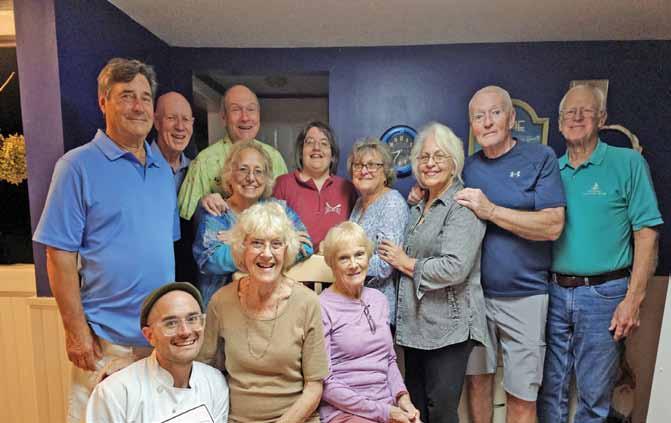
It is all about the Brie, try our French double crème Brie.
iN g R edie NTS:
1/2 fresh baguette cut lengthwise 1 wedge of Brie sliced 2 or 3 slices of Italian Prosciutto if desired for additional flavor
diReCTiONS:
Assemble and top with chopped fresh arugula and a generous drizzle of our local honey. For an extra kick try our hot honey.
To elevate this culinary delight, try our hand-wrapped mozzarella.

iN g R edie NTS:
1 focaccia sliced through the middle ½ lb. mozzarella sliced
1 or 2 slices of Italian capocollo for a heartier taste experience Balsamic vinegar or balsamic glaze
Extra virgin olive oil
Roasted red peppers chopped or sliced
Sea salt (optional)
diReCTiONS:
Assemble and top with roasted red peppers, two drizzles of balsamic vinegar or balsamic glaze and a drizzle of extra virgin olive oil. Add a dash of sea salt to taste. Serve with fresh seasonal fruits and your favorite beverage, perhaps a light wine or sparkling water. Most of all enjoy all that life has to offer this summer on LBI.




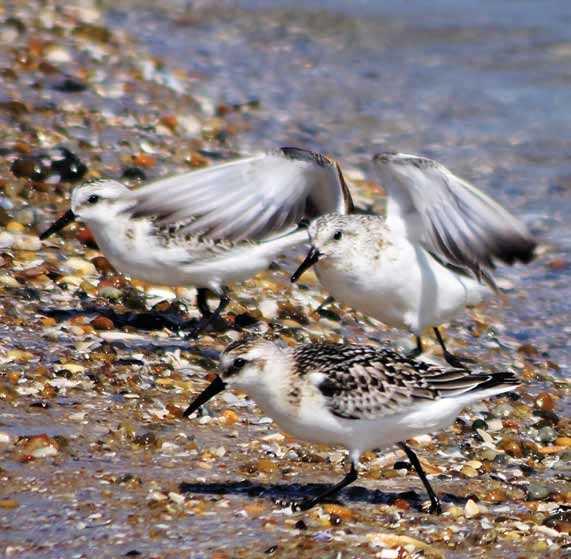

Humankind has long had a deep fascination with motherof-pearl, its iridescent opal-like surface became a treasure primarily associated with wealth and royalty, such as the ancient civilizations of China, Egypt, India, and Mesopotamia where it was harvested from the depths of the sea floor and used to embellish jewelry, furniture, and architectural structures. Remarkably, its earliest use can be traced back more than 40,000 years to the Bardi Jawi people of indigenous Australia.
Mother-of-pearl, also known as nacre or MOP has a rich history in North American indigenous culture. Nacreous shells were among the things traded between indigenous people for thousands of years where it was used for jewelry, embellishment of clothing and personal adornment. Southwestern tribes such as Navajo and Zuni continue to incorporate mother-of-pearl into their jewelry, fetishes and other art forms.

During the nineteenth century it was widely used to adorn fashionable vanity sets, cigarette cases, snuff boxes, desk sets, highend tableware, and numerous other items in addition to buttons for clothing and jewelry for women and men. Today, mother of pearl is frequently used for inlay on musical instruments, clock and watch dials, luxury cutlery, jewelry, and home decor products.
Over the centuries, the harvesting and processing of nacreous shells — the source of mother-of-pearl — was a large part of the economy for countries with fishing industries, including Japan, the Philippines, India, Sri Lanka, New Zealand, Australia, Korea, and Mexico.


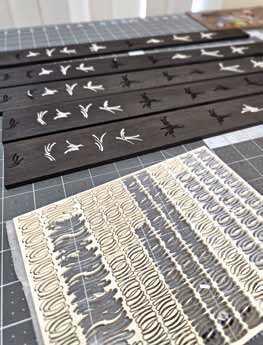
Commercial harvesting of nacreous shells was originally done by individual divers, by freediving sometimes to depths up to sixty feet on a single breath. By the early 1900s, most divers were replaced with trawling vessels. Today, the trade and import of motherof-pearl is highly regulated to protect against overharvesting.
Nacre is the innermost layer of the shell of several species of cephalopods, gastropods, mollusks, including the chambered nautilus, turbans, top shells, abalone, and Pinctada maxima oysters. It is composed of aragonite (calcium carbonate) and conchiolin cemented together by natural biopolymers in a brick-and-mortar structure. These platelets of protein make mother-of-pearl incredibly strong, able to withstand the pressure of the sea. The platelets also interfere constructively with wavelengths of light at different angles, causing their iridescence.

Nacre acts as protection for the mollusk within the shell against irritants, such as parasites. If a parasite enters the shell, the mollusk begins secreting more nacre around the irritant —eventually creating a pearl.
No two layers of nacre are the same even within the same species of shell. Thanks to this uniqueness, its structure, and the hardness of nacre, the stacked layers of mother-of-pearl create an amazing durable display of light and color.
Today, the use of mother-of-pearl continues with two innovative companies located in the same building along the shores of the Chesapeake Bay — Aulson Inlay, LLC and Duke of Pearl, LLC.
The Aulson family history began when Ellen and Doug met in high school in Massachusetts. Ellen went on to become

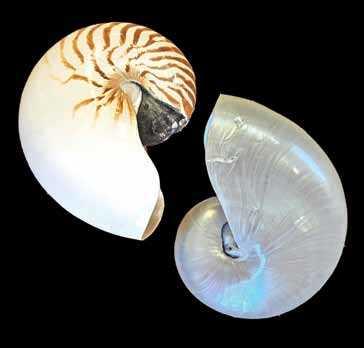
a teacher of marine and environmental science, and Doug got a degree in industrial engineering. Together with their daughters, Anja, and Jaime, their passion for nature and technology inspired them to start Aulson Inlay, LLC in 2012.

The Duke of Pearl, also known as Chuck Erikson, has a long history with nacreous inlay material dating back to 1963 and 1964 that started with banjo construction and his first attempts at inlay work. Realizing the lack of quality inlay material, the Duke embarked on a journey that included serious experimentation with nacreous materials to create new types of mother-of-pearl laminates. It is a journey that continues to this day with Duke of Pearl, LLC.
Together Duke of Pearl, LLC and Aulson Inlay, LLC create amazing timeless pieces from mother-of-pearl for clients that range from home crafters to large scale manufacturers. Using highly specialized and proprietary processes Duke of Pearl creates strong veneer like sheets from mother-of-pearl.
Aulson Inlay then places the MOP sheets into a computer numerical control machine, a motorized tool that uses a computer program to cut out custom designs for inlay used for everything from musical instruments, jewelry, and fishing lures to surfboards, furniture, backsplashes, and countertops. All the colors in their motherof-pearl products are naturally formed by the mollusk. These natural materials are perfect for home projects due to their lack of chemical dyes and durability.
Aulson Inlay and Duke of Pearl have a wide variety of clientele and projects in their repertoire. For one client in Hawaii, the team designed kitchen cabinet doors. Each piece of veneer was a five by eight-inch sheet that had to be bonded into a big enough piece from which to cut the door. “It was like a huge puzzle,” says Ellen. “The more complicated, the better.”
Nacre is truly the mother of all pearls, and mother-of-pearl seems to have endless possibilities — just ask The Duke. —Written and photographed by Sara Caruso


Each Spring, millions of monarch butterflies migrate over 2,500 miles from their winter home in Mexico. Along their journey, they make a stopover in New Jersey, especially around fields of goldenrod like those found at Barnegat Light. Typically, monarchs live only two to six weeks, but the last generation of the year can live up to nine months. If you want to have a truly breathtaking experience, head down to Barnegat Light or the surrounding marshes to see thousands of migrating monarch butterflies. Don't forget your camera! —Artwork and story by Nancy Edwards

Updated from Echoes of LBI – 2018 Spring into Summer Edition
Many of us remember the brightly colored vintage glassware displayed by our grandmothers. With colors of bright lime green, stunning reds and yellows, and electric turquoise, the pieces seemed to glow with a vibrant hue.
Little did we or grandma know that with the help of an ultraviolet or UV flashlight this oddly radiant glassware actually might glow. In fact, several types of UV reactive glass fluoresce under ultraviolet light and can help us peer into the past. To some sea glass collectors, taking a UV flashlight, sometimes called a black-light flashlight to the beach at night may sound strange, but it can be the best way to find some fluorescent sea glass. By understanding some of the history and additives that made these glowing glass jewels, one can better understand these rare treasures.
In 1903, Robert Williams Wood invented Woods Glass, an optical filter made with barium-sodium silicate glass. The purpose of Wood’s glass filter was to block visible light and allow ultraviolet and infrared light to pass through. Though initially used in communications during World War I, Wood’s Glass was used to create ultraviolet or blacklight lightbulbs.
Ultraviolet light is measured in nanometers (nm), which is a unit of length equal to one billionth of a meter used to measure the wavelength of light. Higher nanometers indicate longer wavelengths and lower energy. Shorter wavelengths or lower nm are more energetic. Some materials like manganese are more energetic under a 365nm than a 395nm.
The two most common types of UV flashlights recommended to collectors of glassware are 365nm and 395nm. How intense and what color UV glass fluoresces depends on the type and amount of reactive additive was used when the glass was manufactured. One of the most popular forms of UV reactive glass, uranium glass, was first created in 1880.
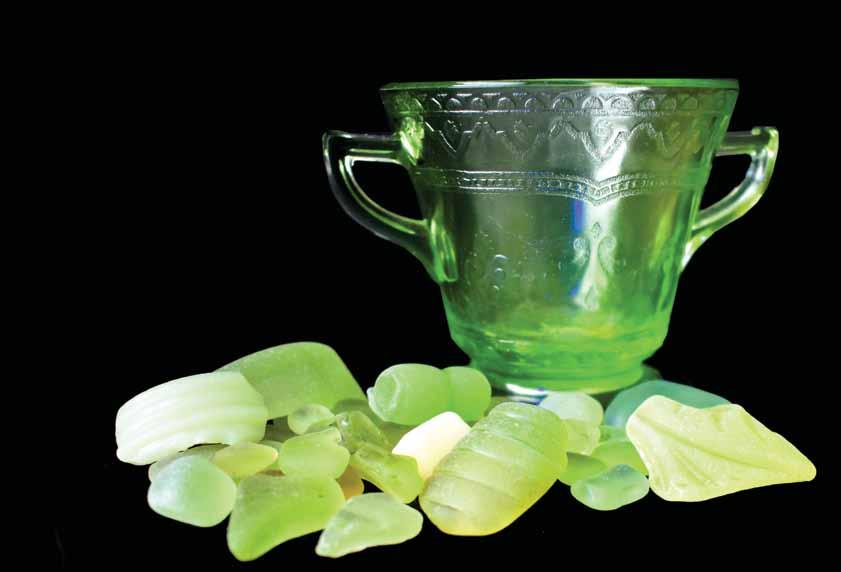
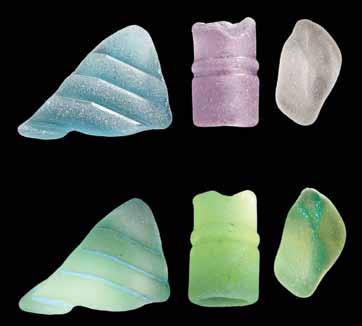
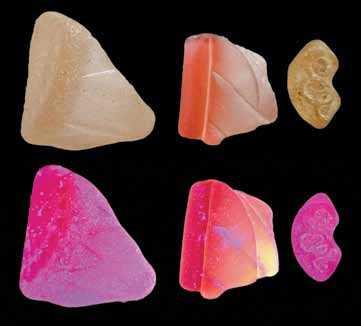
Most sea glass collectors have a jar of green sea glass, but some of those pieces might be hiding a secret. Uranium glass, also known as Vaseline glass due to its color resembling petroleum jelly, became popular as decorative Depression glass through the 1930s and early 1940s.
Uranium was used in a wide variety of glass items by the 1930s. It took on the form of kitchenware, utensils, marbles, decorative tile, lamp bases, fish bowls, ashtrays, and even false teeth. When the United States entered WWII, the country's uranium stock was put towards the war effort, but the fad of Depression glass had already begun to wear off. Uranium would not reappear in glass manufacturing until the late 1950s as depleted uranium sources were sold to American glassmakers like Fenton, Mosser, and Degenhart, among others. During manufacturing, uranium oxide, in the form of diuranate, was added to glass for coloration before melting. Antique uranium glass is usually a bright lime green or yellow tint in regular light. Uranium was rarely used in other colors. Even without a UV light, all uranium glass seems to glow a bit on its own. However, it is not the only green fluorescent glass, which has led to confusion.
Lavender sea glass is one of the most popular and sought after colors. In most cases, it starts off as clear and changes to lavender after several years of sunlight exposure. But did you ever wonder why? The sand used in early glassmaking contained a lot of iron impurities which gave the glass hues of green or aqua. In the early days of glassmaking, manganese dioxide, also known as glassmaker’s soap, was added to glass to decolorize the final product. While glass made with manganese was usually clear, it can also be found in some light blue and pink glass.
Though scientists have debated how manganese decolorizes glass,
the general consensus is that an ion of oxygen is taken by the iron from the manganese. This tints the glass in such a way that the color wavelengths visually cancel out and shows as white light. The amount of manganese in the glass determines how dark a piece will turn with sunlight exposure. Adding larger amounts during manufacturing would tint the glass deep purple. In the past, people placed clear glass vessels in bright sunny locations for extended periods of time in an effort to change the color. While the time it takes for clear manganese glass to turn lavender depends on many factors, you may be able to see which sea glass pieces in your collection are likely to change with the help of a specific UV flashlight.
Sea glass with manganese will fluoresce a yellowish green under a 365nm UV flashlight. Some especially high content manganese glass will fluoresce yellow under both 365nm and 395nm. This is the reason it is often mistaken for uranium glass, since true uranium glass glows under both, but with a much brighter neon green. If it is not a lime green or yellow tint without a UV flashlight, it is most likely to be manganese, not uranium. By the mid to late 1920s, manganese was replaced with a more costeffective substitute.
Pink sea glass is one of the rarest colors to find despite the fact that the material used to make it — selenium — was quite common. Selenium made its debut as a decolorizer due to shortages caused by World War I. It was primarily used in bottles, jars, and consumer glass products. Like manganese, selenium is also affected by long-term sun exposure, but in this case the change is from clear to a pale peach or champagne. Pink was popular in Depression ware, so selenium replaced arsenic as a cost effective, safer, and more available source for pink glass. Adding large amounts of selenium to glass made it turn red and was therefore used to

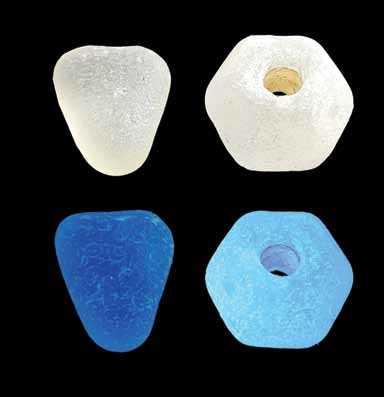
replace gold oxide as the colorant. If you have clear, red, or pink sea glass, you can check if it contains selenium with your UV flashlight. With both a 365nm and 395nm light, it should glow a pale reddish coral color. However, if you have a piece of red, orange, or yellow sea glass that fluoresces bright orange yellow under a UV flashlight, it is likely to contain cadmium.
Cadmium was most often used in lenses for car taillights, traffic light lenses, railroad lanterns, and boat lanterns made prior to the 1960s. Over time, cadmium begins to degrade, especially with exposure to sunlight. In the past, some reflectors, lenses, and taillights were coated with a UV blocking chemical. This may be why some sea glass in these colors is occasionally found coated with a strange white film. The salt in seawater seems to react with this chemical to create the film, which cannot be removed without destroying the surface of the sea glass. Cadmium in glass fell out of favor due to its hazardous nature. While popular to collectors for their fluorescence, uranium, cadmium, and manganese are not the only UV fluorescent glass.
Clear sea glass that fluoresces blue under a UV flashlight, may contain antimony or lead. Leaded glass was popular from the late 17th to 20th centuries in decorative holloware and windows. Lead oxide was added to glass to reduce its viscosity and make it more fluid. In glassmaking, the molten glass must remain at a certain temperature to be workable. Lead allowed glass to remain easily manipulated even if it began to cool. It also increased the clarity and density of the glass. Sea glass pieces with lead might be thicker and noticeably heavier. Under a UV light, glass containing lead fluoresces a bright, almost blinding blue. Like manganese and selenium, antimony was also used as a decolorizer for clear glass. By comparison antimony fluoresces a much paler blue and lacks the density of leaded glass. Due to the history of these materials, one might ask if it is safe to have this glass in a collection.
There is no truth to the urban legend that UV sea glass is hazardous. UV glass ware contains infinitesimal trace amounts of uranium and is harmless. For example, the amount of uranium in a glass item is on average 2% by weight. Daily exposure to sunlight contains more radiation than you could ever receive from a shard of uranium sea glass.
To the avid sea glass collector, UV fluorescent sea glass is a special find. It is always exciting to see what glows in your collection, so get a UV flashlight and sort through your sea glass. You may find a fluorescent piece of history. —Written and photographed by Sara Caruso
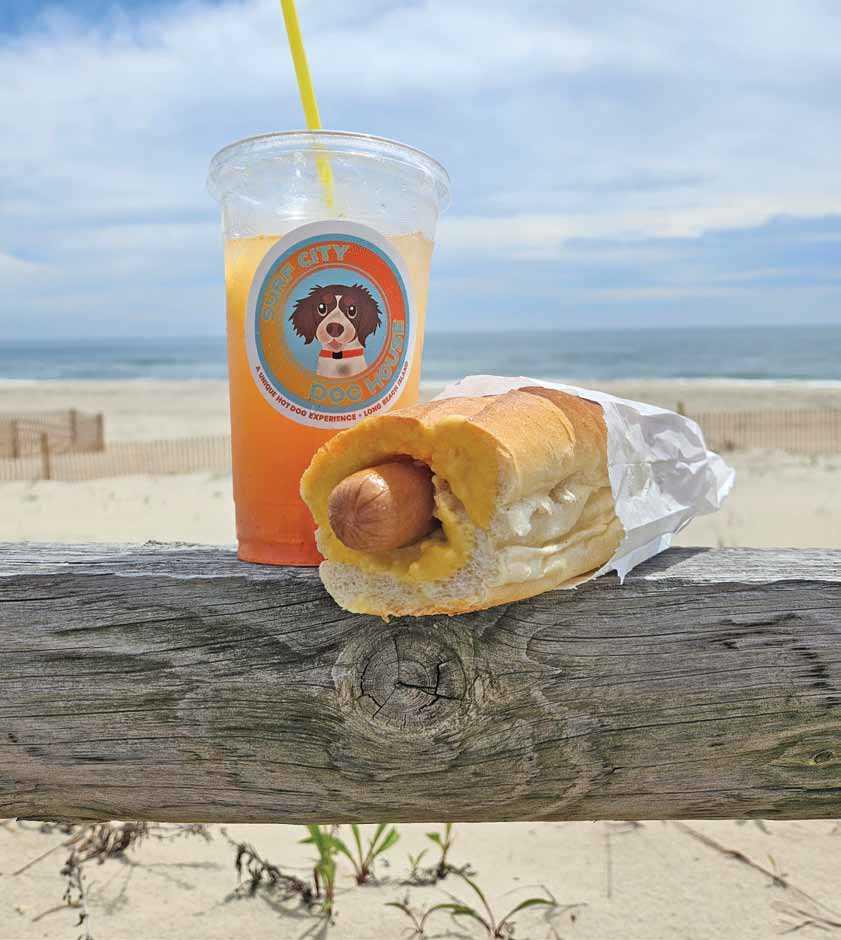






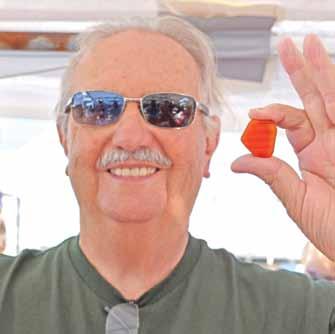
Best Overall Saturday: Leah Dunphy, large uranium glass stopper found in Seaside Park, NJ.
Best Overall Sunday: Howard Benward, perfectly smooth red orange found in Seaside Heights, NJ.
People's Choice Saturday: Randi Mitchell, cobalt Milk of Magnesia bottle found on LBI.
People's Choice Sunday: Kathy Francis, aqua blue piece found in Atlantic City, NJ.
Best Overall Fossil & Artifact: Tammy McCoy, fossil megalodon shark tooth found in South Venice Beach, FL.
Guess the Glass: Pat Mazzucca, guessed exact amount of 703.
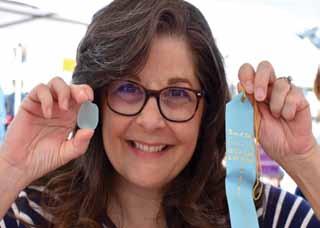

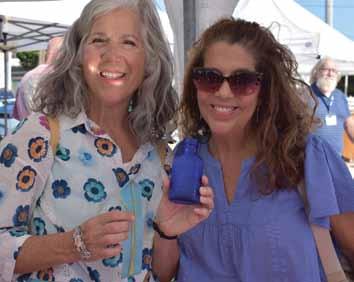
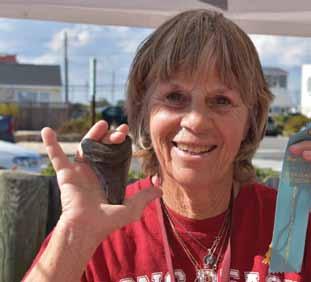

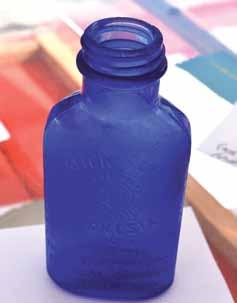
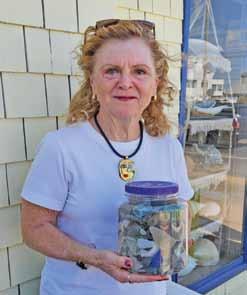
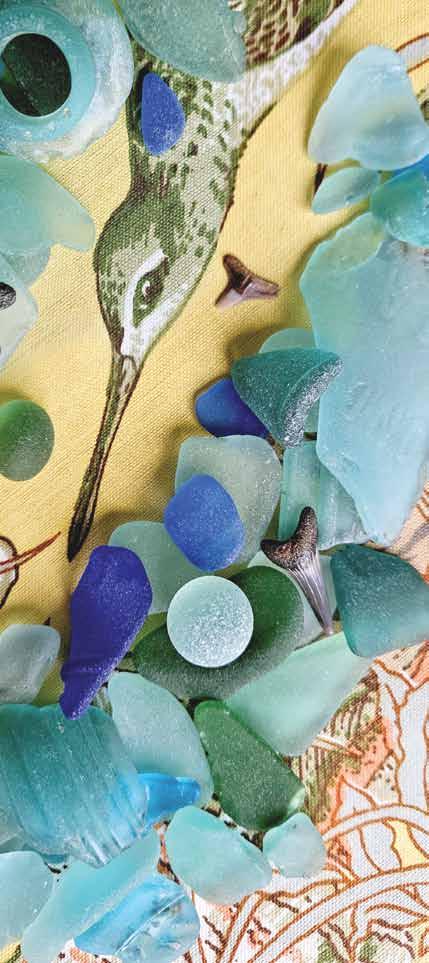
As the loaded van left the Parkway, Tom shouted, "Yo Dad, there's the sign for LBI!" Poking his brother, Jerry scoffed, "Yeah, I saw that sign miles back, so we're nearing the rental. What's that smell?”
“Don't you remember from last year? It’s the marsh,” answered Tom eagerly.
"Yes. It’s the smell of the salt marsh along Barnegat Bay,” Mom said. “And it’s a natural part of the life cycle of the plants and microbes that live there. Decaying plant matter is broken down by special microbes. At low tide you can smell the hydrogen sulfide they emit. It sort of smells like rotten eggs. The stronger the smell — the healthier the marsh! Plus, the marsh is a nursery for all kinds of small creatures and sea life. Use your phones while we inch across the Causeway Bridge. Google some science facts about the marsh. There is so much more to LBI than boogie boards, mini golf, and ice cream. Remember the young ospreys we saw last year? I’m sure there are new fun science things at the LBI Foundation of the Arts & Sciences in Loveladies.”
Dad chimed in, "That is one of my favorite smells. It always reminds me of past summers on LBI with my buddy, Clam. In the
old days, we maneuvered our dinghy toward the marsh edge, and through the sharp, spikey salt wort grass. Sometimes we sank kneedeep in that oozing bay mud. The tall smooth cord grass that grows further in has strong roots to help stabilize the marsh. Marshes are a super important part of the ecosystem.”
Mom pointed to a small island. "See those two guys standing in the bay? They are using a seine net to catch small fish. It's an ancient way to gather food. We can make one this week. We can net small creatures like baby blowfish, tiny flounder, silversides, pipe fish, little shrimp, marine hermit crabs in their borrowed shells, maybe a sea horse or two and who knows what else.”
“But we are not going to eat them. Are we?” gasped Jerry. “That would be insane!”
“No,” answered Mom. “We’ll just pull them close enough to the surface to look at them for a few seconds and then let them swim away."
Enthusiastic cheers erupted from Tom and Jerry, “I'm sane! We’re sane! And we'll all seine on LBI!” —Artwork and story by Carol Freas



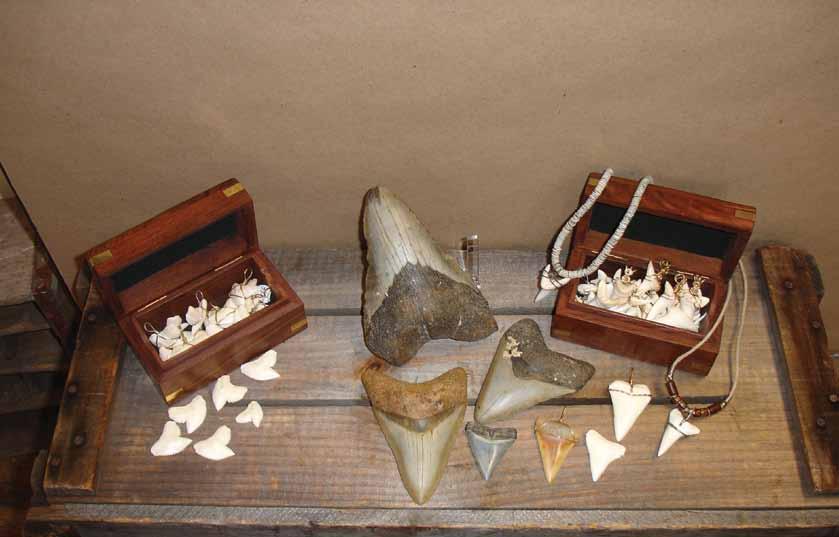
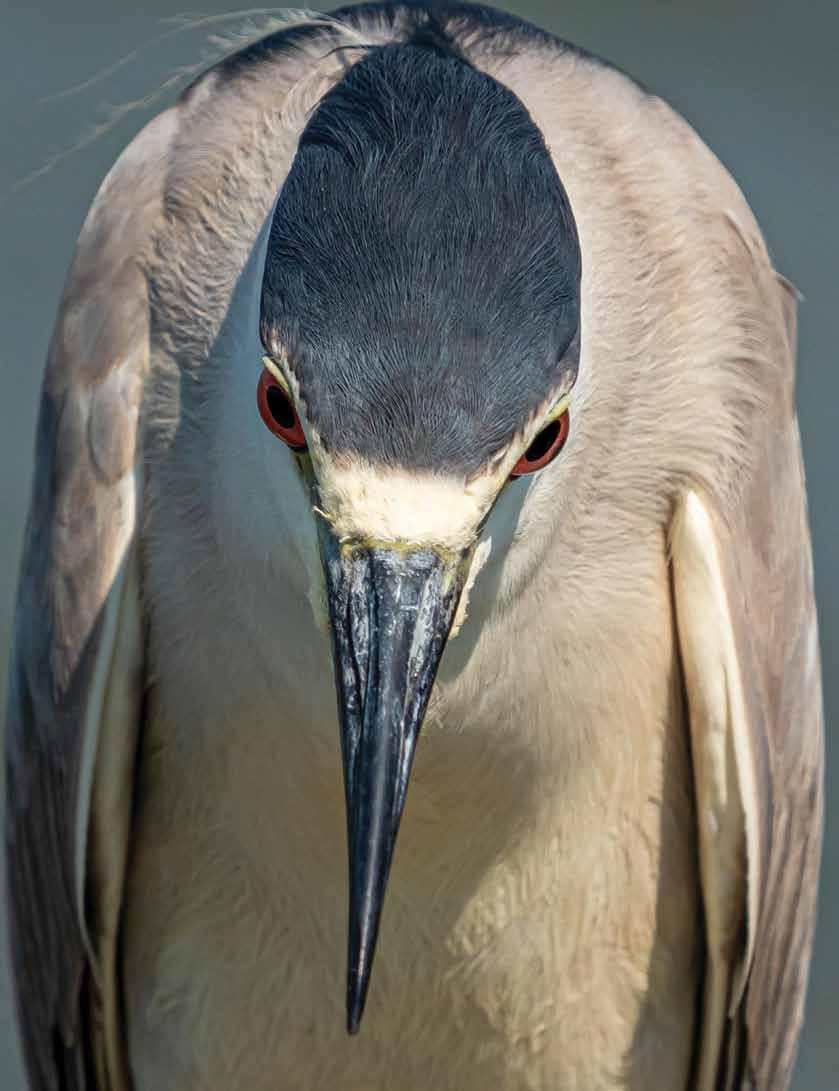
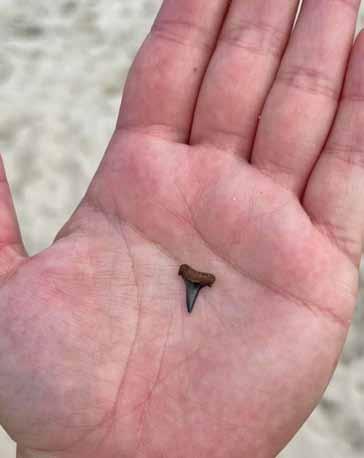
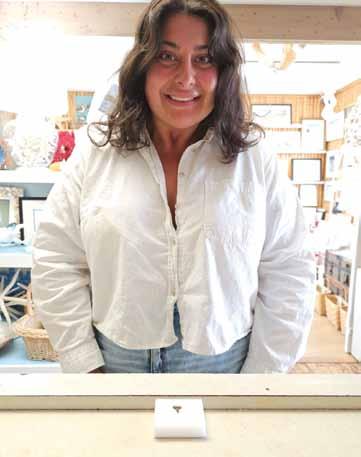



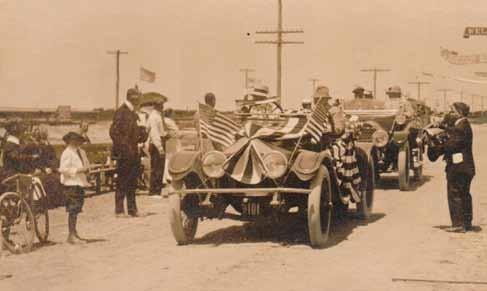

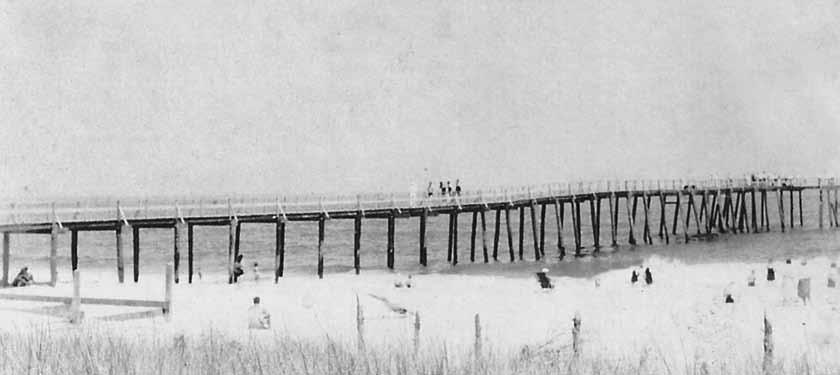






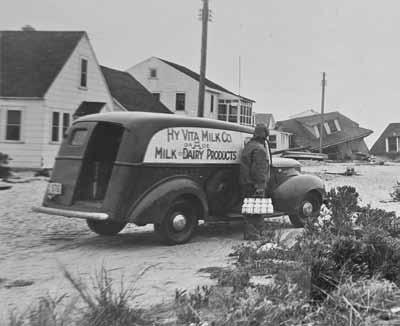
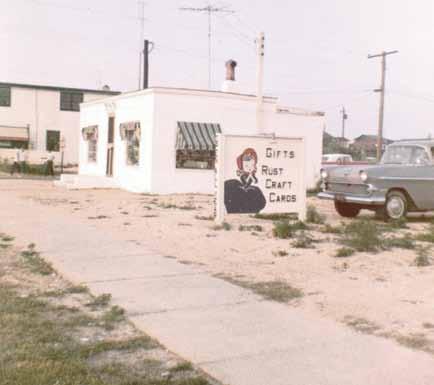


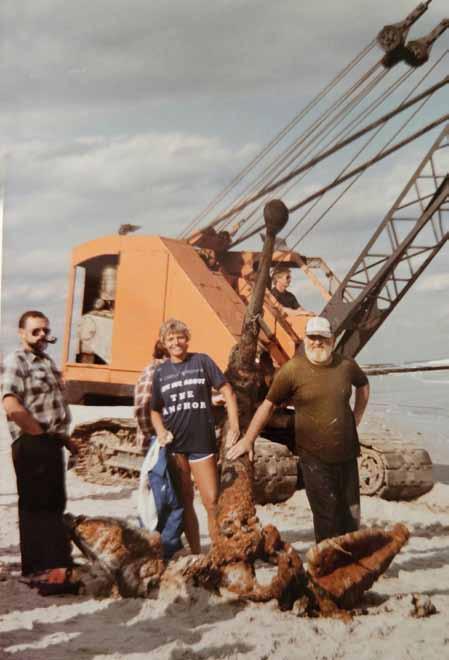
Growing up in Ship Bottom in the late 1950s and early 1960s was wonderful and adventurous. Watersports, fishing, clamming, crabbing, and hunting were a big part of our free time. I remember fishing under the drawbridge when sea bass, porgies, and blowfish arrived. There were signs that read, “No Fishing,” but the bridgetender never chased us. Sometimes we would get enough sea bass or blowfish to sell to the Surf City Fishery for a nickel each. They were nice people and years later I thought maybe they were just helping us for our effort. When we needed crab bait they would give us fish heads. If your bike did not have a basket, it could be a sloppy ride to the dock. If you were lucky enough to get a soft-shell crab you could turn it into a treat by taking it to Tommy Kaufman’s house on 18th Street to trade it for a double-decker ice cream cone from his freezer.
People were friendly and most knew one another. I remember hunting during Christmas vacation when we ran out of shot gun shells. We were getting air in a bike tire at Mr. Reitmeyer’s Esso gas station when he asked if we had seen any black ducks in the bay. He wanted to get a pair for the table. We said yes but that we were out of shot gun shells. Mr. Reitmeyer went in the back room and came out with an American Store bag of shells — enough to last the season. With that, we succeeded in getting a nice pair of red leggett black ducks for him. —Mayor William Huelsenbeck
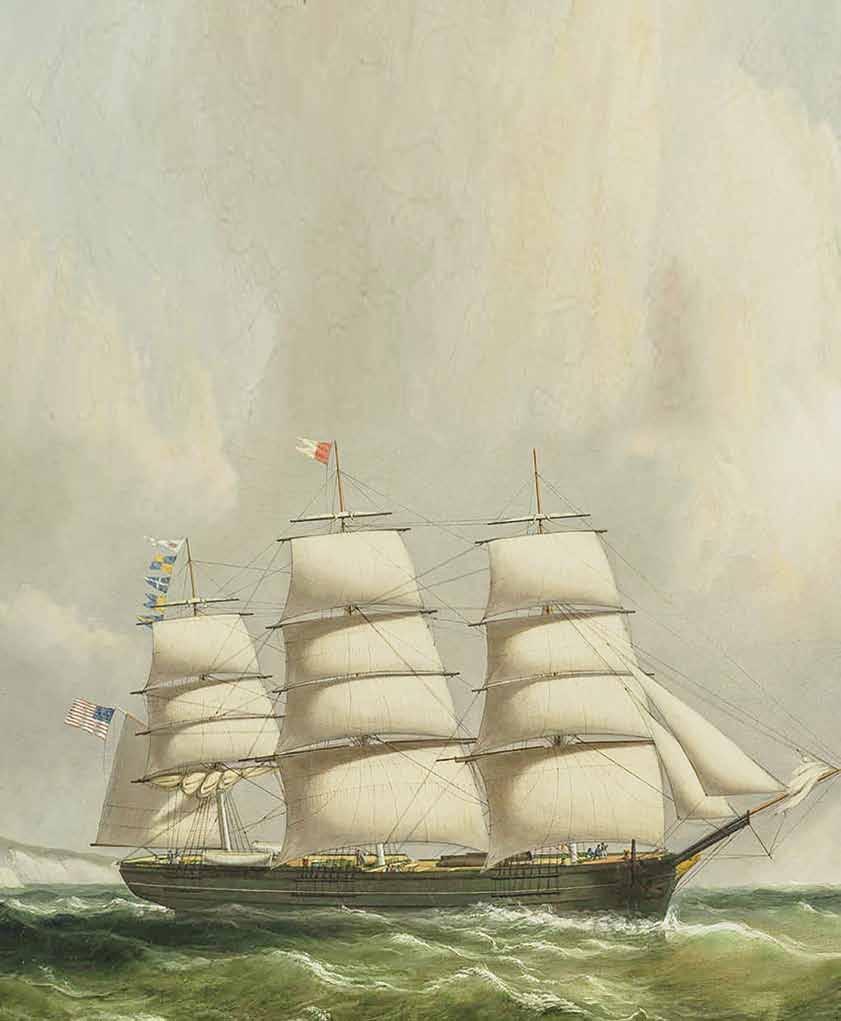

Nestled among the narrow cottages of Ship Bottom’s historic district around Ship Bottom Avenue, the original life-saving station still stands tall today. Now, the latest in a line of owners who take great care of the fragile maritime relic, Rick Baldt and family, have seen their grandchildren bunk in the same alcoves local lifesavers once did and the family dines in the same room where cold and hungry survivors of wrecked boats once supped. Where the giant surf boat was stored, surrounded by life-saving equipment hung from the rafters, are now comfortable couches framed by a warm fireplace. This has been a happy home to generations of people as the dramatic scenes of life and death so common at the station have been left in the past. The past, though, is ever-present in each doorframe, beam, and board. Some walls were found to contain the very remnants of the ships it was built to protect. Indeed, this is the house that Manahawkin’s Edward Jennings built. It is near the spot where Ship Bot-
tom made a name for itself. The town’s very existence is a monument to a tragedy unfortunately lost to the passage of time and living memory. And it is a long story whose threads must be pulled apart before it can be put back together in the right order. The first thread to pull is right at the start in Ship Bottom.
In 1817, “Captain Stephen Willets” of Tuckerton sailed out of Little Egg Inlet around the southern tip of Long Beach Island during a terrible storm. He was a religious man who cared about the wellbeing of others. He and the men aboard his boat felt an urgency to patrol the shoreline for hours in search of any vessels and people in distress. Eventually they found an upturned boat in the surf near the middle of the Island. The wreckage was a frightful sight with bodies strewn about and no sign of survivors. But a tapping was heard coming from the hull, and Willets and his men soon set about hacking an opening into it with axes. After a time, they cut through and found a young girl. Upon help-
ing her out of the ship, the lone survivor of this tragedy spoke only Spanish but was clearly grateful for her rescue as she made the sign of the cross in the sand. Though she went on her way, the memory of this unforgettable wreck stayed with Willets and locals who gave the part of the Island where it occurred the name “Ship Bottom.”
That is the story that has been told by old-timers in Ship Bottom going back to at least the 1950s. It has appeared in Island history books and articles for years. It is the unique and moving story honored anew upon the 100th anniversary of the incorporation of Ship Bottom celebrated this spring.
But is it the whole story?
Contemporary books and articles aside, repeated attempts at investigation into the remarkable story of Ship Bottom’s naming have yielded no additional accounts or documentation to verify the famous story. With no reason to doubt its accuracy, the goal of digging into
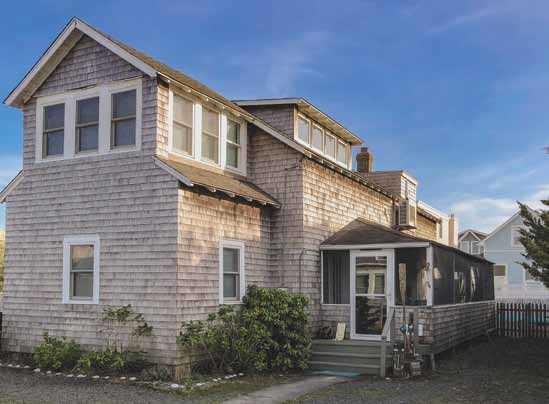
the details, like all Island stories, has always been to find the facts and prove our rich history is as grand as we believe it is. In this case, the first pull on the thread came from an entirely unexpected place.
One day in the summer of 2024, Liz Daukas Oliner came into the Barnegat Light Museum straight after visiting Barnegat Lighthouse State Park. At the park she saw a sign naming every lightkeeper to serve there. One name caught her eye and gave her pause — Ellen Low. A female lightkeeper?! In 1839 no less; the second keeper! Through months-long research, Oliner uncovered fascinating clues as to who Ellen was and how she became one of only a handful of women in American history to ever serve as a lighthouse keeper. This dedicated work led to a talk on Ellen Low and, utilizing her expert skills as a designer, creation of a period dress similar to something Low would have worn as a way to help tell her story through a new exhibit at the Lighthouse Interpretive Center and periodic use of the clothing by an historical reenactor.
In support of Oliner’s research,
this historian tried to find any new information he could about the first few lightkeepers at Barnegat Lighthouse. Unfortunately, details have always been scarce as record-keeping was quite limited so long ago, plus the fact that many of those early keepers served briefly and had no local ties. Little relevant information about Ellen Low was found in the end. But a stroke of luck came out of the work that pulled on a thread.
The keeper who took over for Low was Garret Garrison Harring from near Tarrytown, New York. However, in most places, from the sign Oliner saw at the park to local history books to government records themselves, he is recorded in all but one case as "Garrett Herring,” sometimes with the middle initial H or A. There was also an old hotel in Barnegat Light in those days remembered incorrectly in all sources as the “Herring House.” The simple misspelling of his name meant nearly every previous attempt to find new information about him, or his family, reached a dead end. Out of desperation this historian searched books, records, databases, archives, and the internet using alternative spellings. Only
then, at long last, did new detailed and accurate information flow forth. The most interesting of which was another key to unlocking Ship Bottom’s past.
Late in the second week of September 1846, a slowmoving tropical system made its way up the mid-Atlantic coast sinking and wrecking several vessels. One stood out from the rest. Headlines like “MIRACULOUS
ESCAPE OF A LADY”
in the New York Daily Herald highlighted the epic story of survival. News reporting expediency of the time placed the lady’s escape at Squan Beach, short for Manasquan, when in fact the wreck occurred on the shoals of Barnegat Inlet, the next notable landmark south of Squan Beach that on maps extended as far down as Island Beach.
The Brooklyn Evening Star among others reported, “During the gale of last week, the sloop Mary Adelaide...was capsized off Squan Beach, and all hands perished except for a young lady, who was saved in a most miraculous manner, the sloop having drifted bottom up. When the wreckers boarded her, they heard a noise which appeared to
be that of a human voice, coming from the cabin. They instantly cut a hole in the bottom, and there found the lady...who had been standing in water up to her neck from the time the vessel capsized until she drifted to the shore...”
This lady was Edith Lamson of Manahawkin. Her uncle, Samuel, was the captain who went down with his ship attempting to get out of Barnegat Bay in what he thought was a break in the storm. Her rescuers were none other than former keeper Garret Harring, still residing in the area and working with his father at the Harring House hotel nearby, and future keeper Charles Collins. It was Harring who wielded the axe freeing Lamson from a watery tomb. As in the Ship Bottom story, there were bodies strewn about in the rigging and on the beach, those of her family and neighbors.
This true story had been notably recounted in George Somerville’s 1914 edition of The Lure of Long Beach, albeit with some inconsistencies, as well as Charles Edgar Nash’s heavily re-written edition of the same book, Edward Rowe Snow’s 1955 Famous Lighthouses
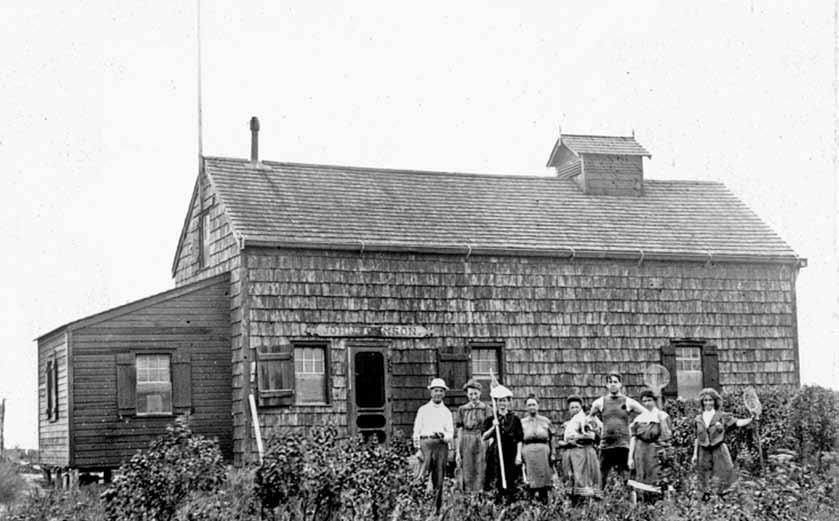
of America, and John Bailey Lloyd’s posthumous 2005 Two Centuries of
History on Long Beach Island
After rediscovering the rich backstory to Harring’s postkeeper days and this seemingly underappreciated Barnegat Light wreck that bore an uncanny resemblance to the Ship Bottom tale, it begged the question — was there anything more to be found about Ship Bottom’s genesis? Taking a page from the Harring breakthrough, a wide net was cast for “Stephen Willets” of Tuckerton and another thread was pulled on the suddenly expansive backstory to Ship Bottom.
Like so many Island stories, there is a kernel of truth at their cores even if some of the details have drifted away over time. Sometimes the most dramatic stories are spot-on accurate, while others so ordinary as to be unquestioned are wildly off the mark. In this case the popular story attributed to Ship Bottom’s naming was somewhere in between but, in the end, misplaced.
Captain Stephen Willits — not Willets — Sr. was indeed a noted resident, captain and wreckmaster from Tuckerton in the early 1800s who owned the schooner, Rob Roy. The details from there are familiar yet notably different. It is claimed in many places where the story of Ship Bottom has been told that the wrecked boat and the name of the surviving girl have been lost to history.
The Philadelphia Inquirer reported simply of the events of May 15, 1831, “Last night in the fog, the brig Howard Capt. Denning, from Madeira for New York, laden with wine, struck upon Long Beach, near Company House; the crew, with the exception of the mate, Mr. Walsh, and the cook, are safe on shore — the cook and mate perished attempting to land...” The Company House mentioned is the old Philadelphia Company
House hotel in Holgate, which later became well-known locally as Captain Thomas Bond’s Long Beach House. Records confirmed the Howard and Willits’ schooner, Rob Roy, were both active during this period and made many journeys from Madeira, Portugal, and Tuckerton, respectively.
Other reports provided more details of the otherwise ordinary rescue, save for one crucial aspect.
A ten-year old girl from Madeira coming to New York City to attend school was among the eleven survivors that day on the beach at Holgate, according to these accounts. The captain was rescued near shore just as he was about to give in to exhaustion by Mrs. Hannah Cranmer Churchman, who was staying at the nearby Company House and saw the brig in distress near shore. The cook and mate who also attempted to swim to shore drowned. Meanwhile, the rest of the crew and passengers waited onboard for rescue, which soon came from several vessels.
“...About eleven o’clock A.M. Capt. Willits, of the Rob Roy, the schr. Pilgrim and sloop Sportsman,” reported The Charleston Daily Courier, “came up and lowered his boat, and with one of his men, Joseph Gaskill, and Jos. Heyward and Morris Seaman, the two latter from the other two vessels...determined to attempt the safety of the...unfortunates in the shrouds of the Howard, where distressing cries rent the air.” Through teamwork pitching dangerously in the surf, all survivors were brought aboard Willits’ schooner and taken to port in Tuckerton.
The Courier concludes interestingly, “The little girl (who does not speak English) when some wine was presented to her on board the Rob Roy, would only taste it in the presence of her deliverer by drinking to him with signs denoting her gratitude.”
These accounts seem to have
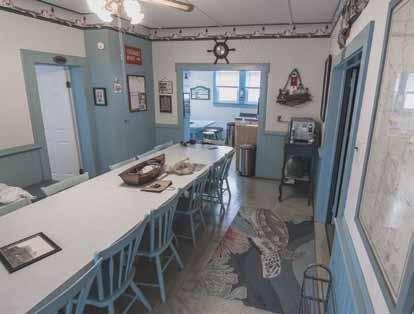

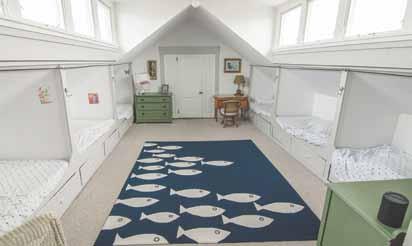
been lost over the course of the 19th and early 20th centuries. The first known re-appearance of a variation of this story was the Ship Bottom legend contained in Charles Edgar Nash’s 1936 edition of The Lure of Long Beach and attributed to Tuckerton resident J. Henry Bartlett, whose version as written by Nash had the date of the wreck as 1817, a notably religious narrative including guidance for Willits from a heavenly voice to exactly where the wreck was located in the thick fog, placed the location of the wreck at the middle of the Island at Ship Bottom, removed all other responding boats from the narrative, had the girl as the sole survivor, and transformed the wreck into an upturned hull in which she was trapped and cut free by an axe swung by Willits. In subsequent years books and articles, even word of mouth, repeated this version of the story largely unchanged. An Island yarn was born. If it is now pulled apart, what should be woven together in its place?
It seems clear that Ship Bottom was not named after a wreck in Holgate in 1831 or a wreck in Barnegat Light in 1846, nor an inspirational parable apparently told among some Tuckerton residents in the 1930s. If not those, though, then where did the Ship Bottom name come from, and why? The tragic explanation may have been known all along and simply lost in the historical shuffle of wreck stories and popular town histories. That answer was found back at the start with Edward Jennings and his life-saving station.
In the mid 1850s, coastal navigation was critical to the future of the United States. Trade with Europe was growing. Immigration was exploding. Sailing was the primary means for the growth of the nation about to become a global power with the onset of the industrial revolution. As such, safe passage to
New York Harbor was essential. That approach began far from the harbor itself, extending as far into the Atlantic as Barnegat Inlet, New Jersey and Fire Island, New York.
The government had already undertaken the construction of lighthouses and Houses of Refuge to reduce the number of wrecks, loss of life and valuable cargo that had been suffered in the early 1800s. But these initial efforts were token gestures and grossly insufficient toward the deadly matters at hand. It would take a series of tragedies that dominated the headlines of national, and international, newspapers from 1853-1856 to force real change. This expansion of maritime infrastructure led to the expansion of the House of Refuge network, later to be replaced by larger life-saving stations, and the building of new bigger lighthouses up and down American coasts, including our storied current Barnegat Lighthouse built in 1858.
One such tragedy, the deadliest to this day in the history of New Jersey, spurred immediate action yet is largely only a footnote in the annals of Island history.
Late Saturday night, April 15, 1854, the packet ship Powhatan out of Baltimore returning from Europe with over 300 German families grounded on an outer bar about 100 yards from shore near the middle of the Island. She was discovered after first light the next morning, Easter Sunday, by Edward Jennings. Jennings was the local wreckmaster, with a home in Manahawkin. He was also the longtime manager of the Mansion of Health hotel located on West 7th Street in Surf City in the days long before Surf City was even conceived of. Being at the hotel at that time, he was easily able to spot the three-masted, 600-ton, nearly 150-foot-long bark in the surf just down the beach. What followed scarred
the memories of Jennings and all those involved in the aftermath.
The New York Daily Herald declared, “Terrible Suffering on the Powhatan.” “Total Loss of the Powhattan [sic],” read the front page of The New York Times. Newspapers far and wide took notice. Even The Sydney Morning Herald with its story, “DREADFUL SHIPWRECK AND LOSS OF LIFE.”
Jennings was first on the scene and provided an account of what happened that terrible day to reporters just days later.
“On Saturday the wind blew with great violence from the northeast,” he recounted. “The sea ran very high all day...On Sunday morning I observed a ship...thumping on the bar...I immediately sent those men who were with me to the government station house, distant about six miles, for the life car, mortar, and other wrecking apparatus. During the day the ship’s deck was crowded with passengers, and when the surf ran out, I could get within seventy-five yards of the vessel, which I found out to be the ship Powhatan, of Baltimore, Capt. Meyers, on her voyage from Havre to New York. The surf ran mountain high. Indeed, I never saw such a sea in my life. Several persons now began to be swept overboard, when Captain Meyers hailed me through his speaking trumpet and asked me for God’s sake to try and save some of those who might happen to wash ashore. I told him I had went down the beach to where the bodies came on shore, but found them all dead, and it was of no use trying to save them, as they were all drowned before they got halfway to the beach...women and children came on shore first.”
“The vessel then lay E.S.E., and had shifted from the N.E. Her foremast was gone at this
time...About 5 o’clock P.M. on Sunday, the ship keeled over to windward from the shore. The sea then...made a clean break over her, and passengers began to be washed off in great numbers. The sea running mountain high and completely hiding the vessel from my view...Bodies appeared floating in the surf in great numbers. Some twentyfive...mostly women came on shore about a mile south of the wreck...The shrieks of the drowning creatures were melancholy indeed, but I could render them no aid, as the sea ran so high...Never did I see such a sight in my life. Never do I remember witnessing such a dreadful gale or such a high running sea.”
In all, three hundred and twenty-six men, women, and children would die that day in front of Edward Jennings.
As for the men he had sent to the House of Refuge at Harvey Cedars, the closest and one of only two on the Island at the time, “the men got back the next morning,” he explained, “with a lifeboat, mortar, and the usual wrecking apparatus, but it was too late.” In fact, these men suffered from exposure to the cold and exhaustion in the difficult journey up to the House of Refuge then the return trip towing the heavy equipment over sand, dunes and thick brush that dominated the largely undisturbed Island in those days.
Initial reports had the wreck occurring at Absecon Beach or on the Absecon coast. In the days that followed all correctly identified the location as Long Beach Island. Even more specifically, various witnesses, including Jennings, placed the Powhatan about present day northern Brant Beach or southern Ship Bottom. But the destruction was spread far, making it not just a Long Beach Island story but one of New Jersey. The raging nor’easter and its

currents sent bodies and debris down the coast. Absecon, now Atlantic City, reported remains washing up for days, numbering in the dozens. Brigantine reported more. Due to wash-overs of the Island during the storm, some were also found in the bay marshes near West Creek and elsewhere. Within days, over 140 bodies were gathered and the grim thankless task of bringing them to the old Baptist Church at Manahawkin for a proper burial was undertaken by many local men. Most of the people living there at the time became involved in making coffins and digging trenches for the mass graves. Women in town took on the delicate duty of washing the bodies and preparing burial shrouds, toiling each day until midnight. When the first number were ready for burial, a New York Daily Herald reporter was present and owing to the lack of identification could only describe the deceased by the number of their coffins lying in a row before the trenches. “From No. 19 to 28 were children, varying from five to ten years of age. Among them were some very handsome boys, with fine curly hair and red cheeks, whose sweet little faces were admired by all the spectators and even drew tears from the tender-hearted.”
Those who witnessed or took part in any aspect of the Powhatan tragedy were deeply scarred by the scale and brutality of it. Most bodies were badly bruised or mangled. Dozens
of children and babies were among the flotsam found up and down the coast. One of the most haunting was found near the wreck by Jennings. Up at the edge of the dunes was the body of an injured man leaning upright cradling a baby, suggesting at least one person made it to shore alive before succumbing to the cold conditions. After recovering all the remains, Jennings and others would focus on gathering letters, personal effects, some valuables, luggage, even money, which they reported for the family of victims to claim. Reporters wrote of the great piles of luggage and clothing on the beach in the days after the wreck, while describing small trinkets and jewelry and identifying materials to readers. When no one came forward, it was later decided that anything of value that remained could be sold to defray the costs of the burials. Months later, the state legislature also authorized limited funds toward the immense efforts made by locals along the coast responding to the deadliest shipwreck in New Jersey history.
Jennings’ duties, though, didn’t end with the Powhatan on the night of April 16. A mile or two down the beach, another ship, the schooner Manhattan, went aground. Jennings and his men left the terrible scene of the first wreck, now broken up and scattered in the surf, to respond to the latest ship in distress that day. Attempts at rescuing the seven-man crew were unsuc-
cessful because those onboard believed they could ride out the storm in the cabin despite pleadings from the rescuers. A few hours later, the Manhattan was overwhelmed and broke apart. Some of the men made it out and attempted to reach shore, with only one making it alive.
In the months that followed, outcries for reform came from all corners. Wrecks such as the Powhatan and the earlier New Era tragedy were unacceptable for the simple lack of life-saving equipment and stations. In the fall of 1854, the first steps toward action began. The Monmouth Democrat reported, “It appears that vessels are generally lost during fogs, in the attempt to avoid the coast of Long [Beach] Island. The sand bar lying some distance from the mainland, on the Jersey coast, is so nearly level with the sea, as scarcely to be seen until close upon it, and the bay between the bar and the shore serves to aid in deceiving those on the ship as to their real distance from the land. Then the currents on this coast are so constantly changing...that mariners can make no calculations for them...There should be no halfway work in this matter. It is of great importance to the commercial world, and a great work of love and humanity which should be liberally encouraged by our government.” The United States Congress that year authorized the construction of fourteen new Houses of Refuge
on the New Jersey coast. One, which became Life-Saving Station No. 20, was placed at Ship Bottom, “about two miles south of the Mansion House, Long [Beach] (where the Powhattan [sic] was lost),” the Democrat reported.
Although the Powhatan tragedy is most commonly associated with Surf City and the Mansion of Health, likely due to the lack of other Island landmarks in the area and the response coming from hotel manager Jennings, it was a founding event in Ship Bottom’s history, if forgotten over the years. An event which led directly to the construction of the government station there. Though it has since been moved back from the beachfront and the threat of storms and erosion, that 1855 station endures today as the Baldt family summer cottage.
In the way that things come full circle, the man tasked with running new Station No. 20 was Edward Jennings, likely selected for his wrecking experience and the proximity of his job at the Mansion of Health and Manahawkin. He would serve as station chief until he retired in 1871 after which he and his wife moved to California to live out their days near their grown children living there.
In the annals of life-saving history, Jennings took part in scores more rescues during his nearly fifteen years of official time with the Service, adding

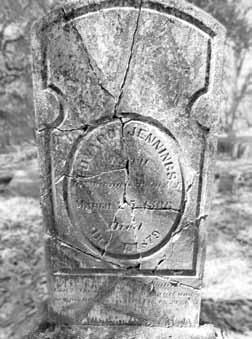
to his fifteen-year volunteer record before that as wreckmaster. So, it is unfortunate that in the 20th century, tales were told that cast Jennings not as a tireless public servant but as an unscrupulous villain. An old ghost story and claims by some in modern times contained in history written by John Bailey Lloyd amounted to a condemnation of Jennings’ character as that of the lowliest of thieves picking the pockets of every body that washed up from the Powhatan and evading justice by leaving the area a few months later. Nothing in the record suggests anything of the sort was ever attributable to Jennings or other rescuers on the Island involved in the Powhatan response. On the specific claims, there is voluminous evidence to the contrary. Far from a disreputable figure, he is praised by the government and locals alike repeatedly throughout his life as a good man. That such a record as his was lost in time and replaced by something wholly opposite is an added tragedy to the already sad tale of the Powhatan
The final threads in reshaping Ship Bottom’s historical tapestry
came around the same time Jennings’ story on the Island concluded.
First, a new station chief was needed ahead of Jennings’ retirement. Another experienced local man was found in Manahawkin’s Henry Lamson. Coincidentally, Henry was the brother of Edith Lamson, the sole survivor of the 1846 wreck at Barnegat Light. That leads one to imagine that in his time at Station No. 20 at Ship Bottom Henry may have told his crew and their families about the time his sister was rescued from a shipwreck in a most remarkable way. Could this have led to some confusion over the years about where her incredibly similar story to the Ship Bottom legend really happened?
Second, though Lamson was stationed at No. 20, that was not the name the station was known as when he assumed command, nor was it recorded in government reports as such starting in 1873. Around that time, the government took to using local names for their stations to make it easier for everyone to know where they were.
Old No. 17 became Barnegat, No. 22 became Bond’s, and so on. Jennings' No. 20 became known as “Ship Bottom” in the first government report noting the change. In newspaper reports and local stories, however, it was known for much of the late 1800s as “Ship’s Bottom” or “Ships Bottom.” This name, and its variations, was born during Jennings’ tenure at the station near the site of the Powhatan wreck, whose deadliest calamity occurred when the ship was rolled over, its giant hull nearly turned completely bottom up, and the great mass of humanity on deck sent to their deaths, washing up one by one before Jennings like a Neptunian taunt at man’s feebleness against the power of nature. It would seem to strain credulity to doubt that Jennings and his men, helpless witnesses to that maritime horror, thought of anything other than the poor Powhatan when they took to calling that uninhabited part of the Island and its new life-saving station “Ship’s Bottom.”
This year, the town of Ship Bottom celebrated an anniversary. Serendipitously, the newly com-
pleted municipal building saw the return to a place of honor the anchor from the famous Ship Bottom wreck of the Fortuna, visually the embodiment of the town’s name and seal for generations. The anchor also happens to be a Baldt anchor made by Rick Baldt’s ancestor, making his family and their old House of Refuge a unique bridge bringing together much of Ship Bottom’s heritage. Mindful of the past during this anniversary year, it would be fitting if the community were to revisit its history and reconnect with a seemingly lost chapter that, far from diminishing what has been believed to be its origin, was far more dramatic than previously understood and changed the course of Long Beach Island, New Jersey, and American history. Such a legacy is something to be deeply proud of and honors the memory of all those lives lost on that terrible Easter Sunday long ago and the service of our Island lifesavers who responded so selflessly then and continue to do so today.
—Reilly Platten Sharp






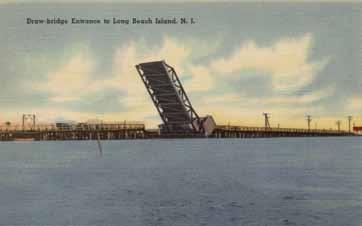
East Thorofare Crossing. This undated view shows the drawbridge that allowed ships to pass from north to south Manahawkin Bay between Cedar Bonnet Island and Ship Bottom.

Ship Bottom-Beach Arlington Water Works. This circa 1930 view of the plant was largely unchanged until 2021 when the old pump house was replaced.
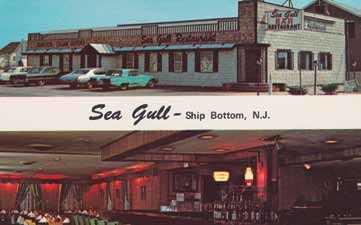
The Sea Gull. The storied restaurant, seen here circa 1970, began as a smaller snack bar and store with beachfront bathhouses in the 1920s, before transforming into today's popular American-fare eatery The Arlington.
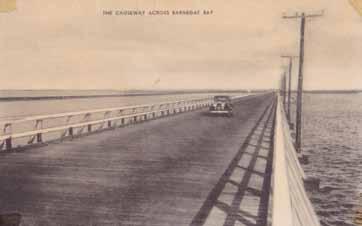
Old Causeway Bridge circa 1925. Built in 1914, the long middle span of the first automobile bridge is seen here alongside the 1886 train trestle bridge on the distant left.
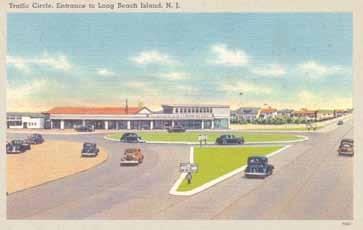
Ship Bottom Circle circa 1935. The intersection of Rt. 72 and the Boulevard that sorted arrivals into north or south visitors for a century continues today to dominate Islander's attention.
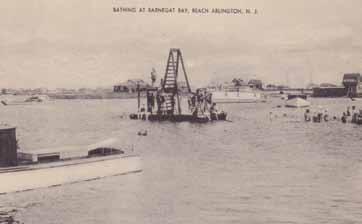
Bayside fun circa 1930. Scenes such as this were once common up and down the Island, with swimming, barrel races, and regattas, the bayside pastimes for young and old alike.

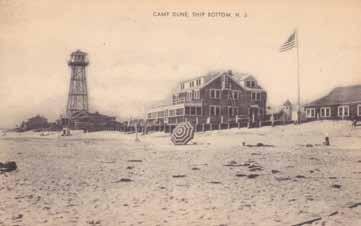

view of the new school just after opening. It consolidated one-room schoolhouses into a new modern campus.
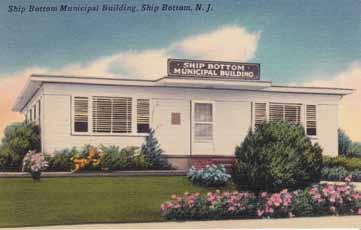

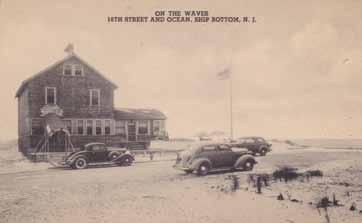

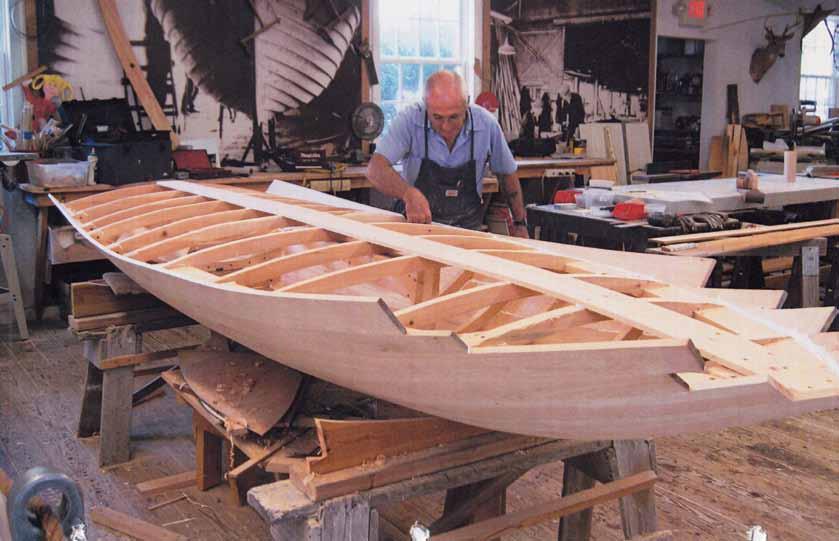
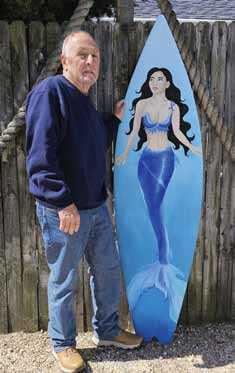
“Sometimes we took day trips, other times we stayed overnight,” says Ron Spodofora recalling his family’s ventures from Caldwell, New Jersey to Long Beach Island in the 1950s. As it has done with others, the 18 miles of sand and shore captured the hearts and imaginations of Ron’s parents, Dominic and Rose.
So, with a combination of courage and a touch of pioneering spirit, in 1957 the Spodofora’s relocated their family to Manahawkin. “Our house was on Route 9 across from Oxycocus Elementary School. The Columbus Dairy Farm was right behind the school,” explains Ron. “My father was a millworker. He rented their barn and set up his millwork shop where he built cabinets, vanities, and boats. Sometimes he made custom cabinets for Shapiro homes.”
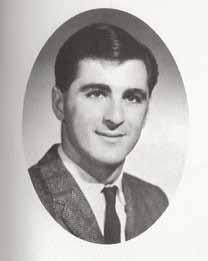
In their father’s millwork shop Ron and his brothers, Dom, and John, learned the fundamentals of woodworking. Given their close proximity to the beach, it was only a matter of time before the boys began to build skimboards, surfboards, and skateboards after hours. “I still have the first skateboard that I built,” says Ron with a smile.
The woodworking skills they acquired as boys in their father’s dairy barn workshop became life-long skills that would serve them as men. Dom became a talented wood carver, and Ron went on to become a union carpenter for thirty-six years.
Ron attended Oxycocus School and Southern Regional High School. As he recalls, “In those days Manahawkin was like living in Small Town, USA. Everyone knew each other. Mr. Holiway owned the Texaco Gas Station on Bay
Avenue. It was where the BP sign is today. He was a great guy. In the summer we rode our bikes to The Manahawkin Drive-In Theatre. It was located on Route 72 where the Holiday Inn is now. The owner would let us in for free. In those days we had two drive-ins. The other was where Walmart is located today on Route 72 — The Fly-In Drive-In. Small planes could land, watch the movie from their cockpit, and fly out when it was over. On Bay Avenue where the flea market is today there was Bill’s Skating Rink. Every Friday night there were dances and in the summer St. Mary’s held Sunday mass there because the crowds were so large.”
By 1962, Ron’s father relocated his dairy barn millwork to his new business in Waretown, Pine Crest Millwork. “We moved to 6th Street in Surf City and in 1964 my dad built a new house for us in Surf City on South 3rd Street. My father sometimes worked at the northern end of the Island at Small Point in Harvey Cedars where Maris Stella is today and at the southern end of the Island on The Cox Farm. I remember when the dairy farmers used to bring their cattle across the bay on barges from the mainland to let them graze on the Island.”
“Surf City was a great place to grow up. We swam, skimboarded, and surfed. I fished, crabbed, and clammed. Then I sold the clams for five cents and the crabs for twenty-five cents to our neighbors and friends,” says Ron with a slight nod and a wide smile. “Barnegat Bay was like my bank,”
Ron served in the U.S. Army from 1966 to 1968. With his two-year tour of duty over, he made his way home to an unforgettable welcome. It was around 2:30 in the morning when the bus pulled into a local gas station in Manahawkin and Ron stepped off into the familiar damp salt air. At that hour, the gas station was closed. Without a ride or a telephone to call home, Ron sat down alongside the road to wait for the gas station to open. “A local police officer pulled up,” recalls Ron. “He offered to call my parents, but I didn’t want to wake them.” The officer contacted the Ship Bottom police and arranged for one of their officers to meet them at the Causeway Bridge. “The Ship Bottom officer took me to Ray’s Diner in Ship Bottom for breakfast and then drove me home,” says Ron warmly. “It was good to be home.”
In 1971, Ron married Jean Guinta. They met in high school and reconnected later. Her father, Thomas, owned Tom’s Body Shop in Manahawkin. He was one of the founders of the Stafford First Aid Squad and Chief of the Stafford Fire Company.
As a union carpenter, Ron worked at Six Flags Great Adventure in the design, construction, and maintenance of the park’s first wooden roller coaster, Rolling Thunder. After retirement, he plied his woodworking skills as a master craftsman boatbuilder at the Tuckerton Seaport Museum boatyard building sneakboxes and garveys. Ron’s craftsmanship was recognized at the Ocean County Decoy and Gunning Show in 2010 for First Place in the Pat and Gus Heinrichs Memorial Award Barnegat Bay Feather-Edged Sneakbox Contest – Rowing Division, and First Place in 2012 in the Hazelton Seaman Memorial Award Barnegat Bay Feather-Edge Sneakbox Contest – Sail Division. More recently, Ron uses his wood working skills for the renovation and restoration of old homes in the area.
Ron’s philosophy has always been that “there are no problems, only solutions.” His intuition and imagination continue to be his motivation as he uses the skills he learned so long ago in his father’s dairy barn millwork shop. —Diane Stulga • Photography courtesy of Ron Spodofora
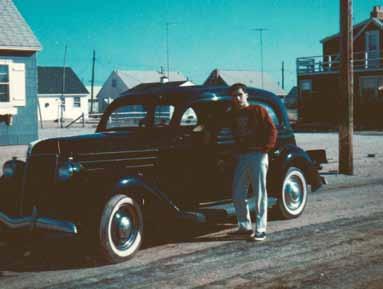

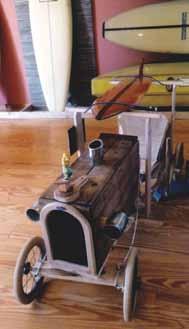
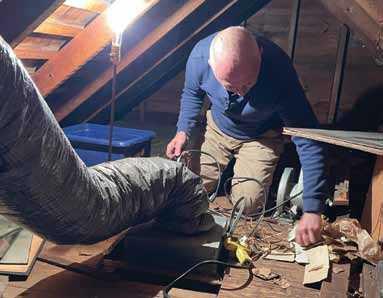

The backstory of the seashells I have began as one of sorrow and sadness.
Afew months after my wife was taken by cancer, I started walking the beaches of Long Beach Island. Initially it was to get out of the house, to move, to forget, to remember. Out of shape, out of energy, and without direction, most of the time I walked only a short distance. I watched gulls and the beautiful ocean. Of course, I watched sunrises, surfers and people picking up seashells. Some had bags where they placed their shells. Occasionally, I picked up a shell, thought it was interesting and put it in my pocket — telling myself that I would remember that particular day whenever I looked at it.
That was in Holgate, New Jersey. I thought at that moment that this was my favorite beach — amazing sunrises, quiet atmosphere, easy access to the ocean and plenty of shells. Unaware that it was happening, I was slowly becoming a shell collector — a sheller I think some may say.
After a while I had to carry a bag for the shells I was finding. When one beach did not have a lot of shells I found myself moving up the coast of LBI. Every town was different; at every beach there was something interesting — surf fisherman, dolphins, school-aged children scooping up sand fleas and selling them to local bait shops, people jogging, people walking, people sleeping, people up early to watch the sunrise and, of course, more shells.
My granddaughter’s dance studio was having a raffle to raise money. I entered and won four different prizes. After I took my prizes, what was left were four glass containers that might have been candle holders and a taller vase, along with some blue stones. One day after
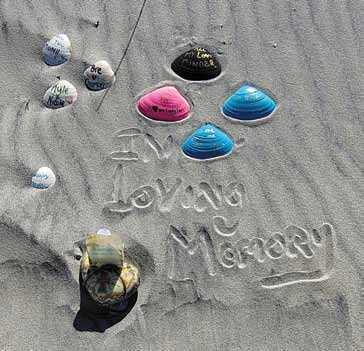
looking at all the shells covering my dining room table, I thought I would see how they looked if I put them in the glass containers. Of course, I had to clean and shine the shells. The results are what you see in the photographs: beautiful LBI shells in glass jars. But what I see is a process of healing of sorts — that started with walking the beaches of Long Beach Island. For me, the end of a life brought the beginning of a new one. —Written and photographed by John Keeley

Many say beauty is in the eye of the beholder. For me, this had never resonated more deeply as when I was given the delicate task of cleaning and cataloging artifacts from the 1976 Ship Bottom Time Capsule. While some observers may have perceived the mud-soaked items as remnants of a bygone era, I recognized a compelling historical puzzle requiring careful preservation and interpretation. This task, passed to me, began a dive into the rich history of Ship Bottom.
In the fall of 2023, I was just starting my second career as a Ship Bottom borough employee, following a thirty-year tenure as a middle school history teacher. Learning of the project — my inherent passion for history was immediately ignited. My previous experience in education, which coincidentally included a lesson where students envisioned items for a future time capsule, provided a unique perspective on this similar task. This prior exercise fostered thinking and encouraged dialogue among students, mirroring the process I had in front of me now piecing together the story held within this recovered capsule.
The extraction of the time capsule early in 2023 from the depths of the 1966 Ship Bottom Borough Hall by the Department of Public Works crew was a critical undertaking. Years of exposure to storms and flooding had compromised the Styrofoam container leaving its contents submerged in approximately twelve inches of thick mud. Quick and careful action was essential to prevent the permanent loss of these historical materials.
intrusion. Among the contents were roughly seventy-five Polaroid photographs that were in terrible condition. Despite the damage, many of them still had their original label. I documented each legible label and learned that most of the photographs were of Ship Bottom landmarks, employees and officials.
Similarly, the severely deteriorated books and catalogs necessitated careful examination to determine the key words and phrases. These primary source documents, seemingly insignificant to some, represented a valuable opportunity for historical inquiry.
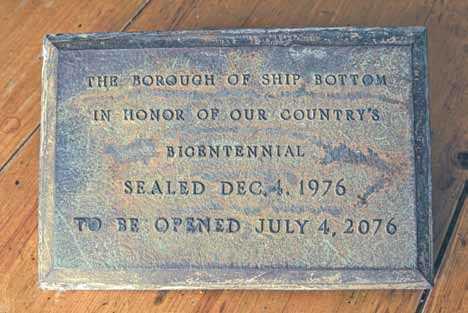
Each artifact I pulled from the time capsule presented new research opportunities. A 1976 New Jersey Bell Telephone book and a Sears, Roebuck and Company catalog offered insights into daily life of the period, product prices and advertising strategies. Particularly compelling were the police and fire department badges and patches, tangible symbols of the pride and camaraderie shared by Ship Bottom’s first responders. These carefully selected items readily conveyed their significance within the capsule’s contents and underscored the
evident pride the Time Capsule Committee held in representing their community.
This 1976 Time Capsule offers a tangible link to the past, providing a unique learning opportunity and the potential to spark discussions about the history of Ship Bottom.
With utmost care, I began the process of removing the waterlogged contents. I set up fans inside the public works garage at 6th Street and began to gradually dry all the items. Despite being placed in sealed plastic bags, many items had succumbed to water
A note from the author: I wish to extend my sincere gratitude to Mayor Huelsenbeck, Kathy Flanagan, and the elected Ship Bottom council for entrusting me, a relative newcomer, with the delicate task of unpacking this significant piece of Ship Bottom history. —Matthew Bernstein • Photography by Reilly Platten Sharp
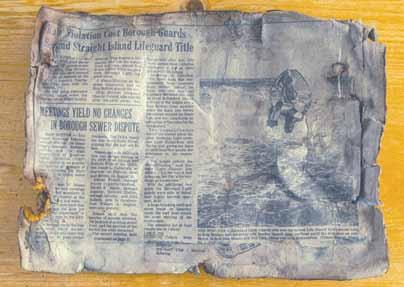
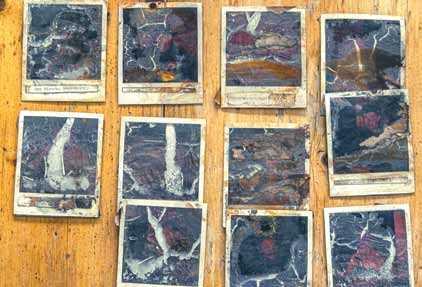

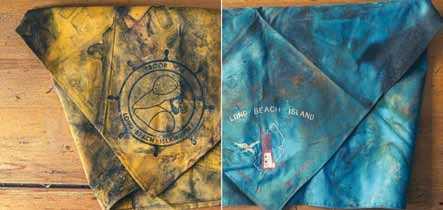


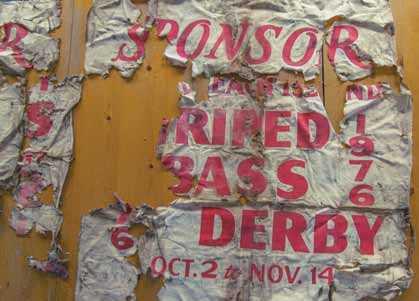
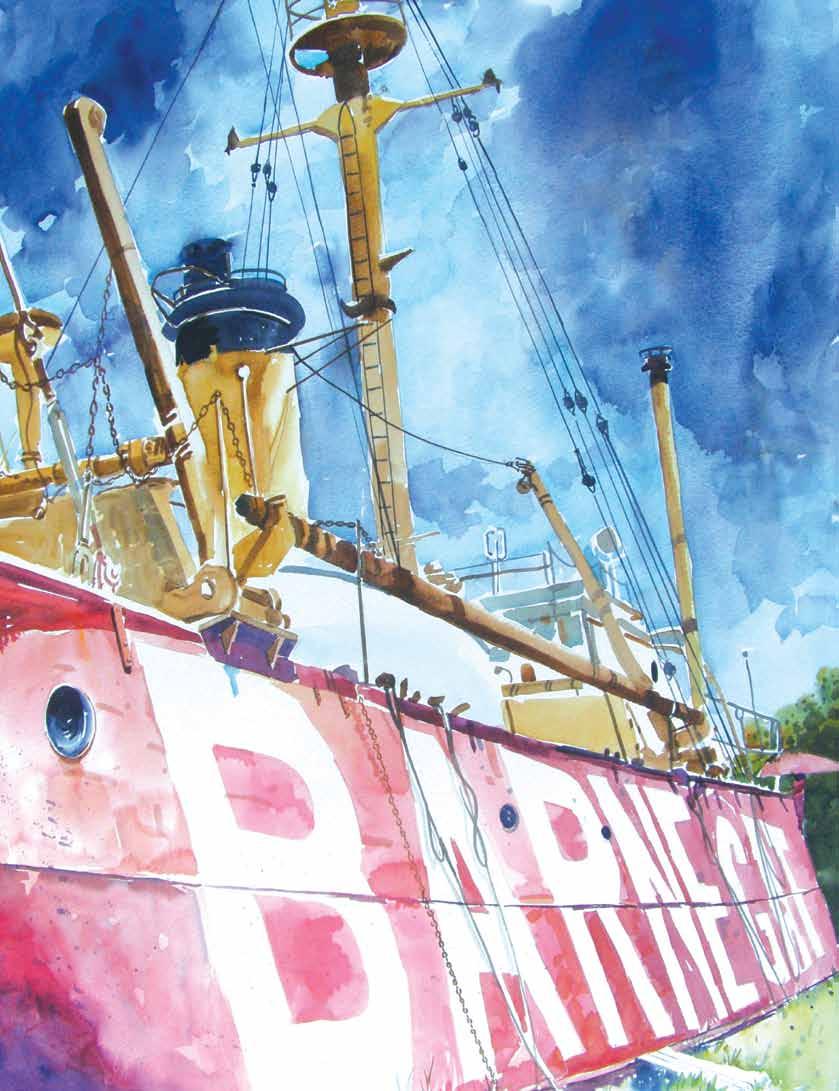



When your first footprint in the sand of Long Beach Island was made when you were six months old the countless footprints you make throughout a lifetime remain on your heart forever. For Mary Park Ward nothing could be more true because generations of her family have left their footprints in the sands of their beloved barrier Island.
“My grandparents, Eugene and Mary O’Keeffe, were from Chestnut Hill, Pennsylvania. My grandfather was the city editor for the Philadelphia Inquirer,” says Mary. “In the 1930s, they rented a house in Surf City. It was right on the beach. We always called it ‘The Smith House.’ It was rented every August for years by my family.”
Mary’s parents, Joseph and Julia Park, also worked for the Philadelphia Inquirer. My father was a commercial artist who worked in watercolors, and my mother was a reporter. They met at the newspaper,” says Mary. They started renting in Surf City in 1943. “My father was fond of walking to the beach to watch the pound fishermen return with their daily catch,” she says wistfully. Today, one of his watercolors of Ship Bottom graces a wall in her home.
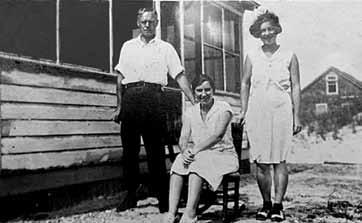
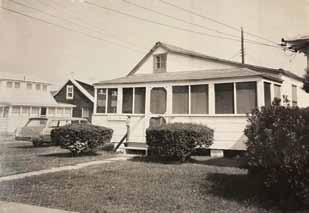
The drive from Philadelphia to Long Beach Island was “an allday in-the-car event,” according to Mary. “It was a long day for a child.” In those days, the Causeway Bridge was an old wooden drawbridge. Sometimes the bridge was up. She vividly remembers the intense heat as they waited for a boat to go through. “Our car was not air conditioned. But we had to keep the windows rolled up because of the swarms of greenhead flies.”
Mary and her husband, John Ward, grew up in the same Philadelphia neighborhood. Childhood sweethearts, they married young and made their home in Montgomery County, Pennsylvania where they raised four children, Julie, Susan, Mary, and John.
John’s family had always vacationed in Wildwood. “Around 1959 we took a ride to LBI,” says Mary. “I wanted to show him the Island.” Years later they learned of a house for sale in Ship Bottom. “We went to see the house. But it had already sold.” Disappointed, yet undeterred and possibly even more determined, they asked a local realtor to show them the cheapest house for sale on the Island. “We put a downpayment on it that day.”
Together with John’s business partner, Dan O’Mullan, and his wife, Arlene, they purchased the house at 2702 Long Beach Boulevard in Ship Bottom. Over the years, the two families alternated weekends and summer weeks at their LBI house. It was also rented to family and friends.
Originally, a two-room fishing cottage, the house needed serious renovation which John and Dan eventually completed. Until then, there was a hot water heater in the bathroom, but no indoor
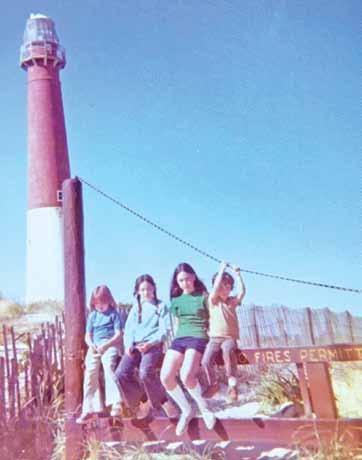
shower or tub. “Children were bathed in the kitchen sink,” laughs Mary. “We didn’t have air conditioning, heat, telephone, or television. But it was the best time of our lives.”
Mary recalls halcyon days spent on Ship Bottom beaches, her children playing in the sand, jumping waves and John fishing in the surf. Occasionally, they ventured out to Holgate, Barnegat Lighthouse, Kubel’s, Wida’s, The Dutchman’s, or Surflight Theatre
At age 48, Mary began painting, initially in oils. After continuing her education at a community college, in 1991 she took a summer art class in Ireland where she transitioned to her father’s favorite medium, watercolors. Mary recalls the transition as one necessitated by medium drying time for her return flight. Watercolors dried faster than oils. In Ship Bottom, Mary took classes at the studio of LBI’s renowned artist the late Jane Law. She also took classes at The Greater Norristown Art League and served on the board of directors.
After John and Dan passed away, in 2006 a friend and long-time renter of the house, Elizabeth, purchased Arlene’s one-half interest. Mary and she shared the house for nearly two decades and became close friends. Eventually, Elizabeth returned to England and the house was sold in 2022.
Although the waves have long ago washed their footprints from the sand, for Mary the people who made them and the memories they shared will remain in her heart forever. —Diane Stulga • Photography courtesy of Mary Ward



For decades, a small, four-story Victorian house on Route 9 in West Creek, New Jersey has mystified passersby and locals alike. Because perched atop its flat-roofed cupola 67 feet above the earth sits a single wooden chair. This lofty lonely seat has spawned speculation and folklore as to its origin and purpose. Even dark tales are told of its use as the ultimate time-out chair for misbehaving children. Some say it was used to spy on Red Coats during the Revolutionary War or to surveil rum runners on Little Egg Harbor Bay. Local legend has it as a place of silent vigil kept long ago by a local ship captain’s widow as she waited in vain for his return from the sea. And, there are those who believe it is a landing pad for Santa.
The history of the small Victorian house, known far and wide as The Chair House is as unusual as the chair on its roof. Originally constructed in Holgate, New Jersey around 1887 — it was not a house but a three-story wooden structure containing a standpipe that provided artesian well water to the town.
The tower was abandoned in the early 20th Century. Time and coastal weather took its toll on the old wooden structure, and it fell into disrepair.
In 1938, Albert Lindholm, a Swedish immigrant with a vision, bought the Holgate tower, cut it into sections, and brought it across Barnegat Bay to West Creek to its current location. Lindholm rebuilt the original three-story tower into a four-story home where it still stands today looking very much as it did on Holgate at the turn of the century albeit one story taller.
Lindholm passed away in 1947. His wife, Hilma, sold the house
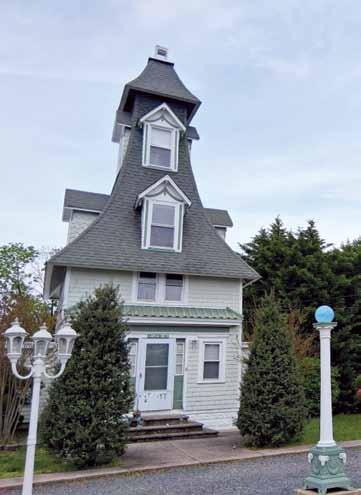
in 1959. By then, the house with a chair on its cupola roof was already a local legend. Perhaps just as odd as the highly visible rooftop chair is what lies beneath the house — unseen by passersby — a bomb proof basement. With war looming in Europe and fearful of it reaching his family in the United States, when constructing the foundation Lindholm made the floor and walls of the basement at least eighteen-inches thick.
“My grandparents, Harry and Nancy Chambers bought The Chair House from Mrs. Lindholm in 1959,” says Nancy Hall of West Creek, New Jersey. Lindholm built the house with two one-story additions, one on either side of the renovated Victorian folly now turned four-story home at the center. Recalling the home’s interior at the time her grandparents owned it, “The addition on the right was a bedroom and the one on the left was a kitchen. At the center on the first floor was a living room, small dining room, and a bath,” says Nancy. The second floor which Lindholm added during reconstruction accommodated one large bedroom. “There were stairs to the third floor which was unfinished, and a ladder was used to get to the fourth floor [cupola]. The concrete island in front of the house used to have gas pumps where Mr. Lindholm sold gas.”
“We visited my grandparents every weekend,” says Nancy.
“Eventually, my parents put a trailer with a large sunroom in the backyard. In those days the property went from Route 9 back to Railroad Avenue. There were several small out-buildings that were full of antiques.” She smiles as she recalls playing with the old crank operated Victrola with its heavy records stored in the cabinet below.
From a small building near the house, Nancy’s grandfather, Harry, operated a produce stand as a side business selling vegetables he grew in a large garden behind the house and on property across the road that he rented from Bill Cox. Nancy recalls spending her summers at The Chair House, helping her grandfather with the gardens and at the produce stand. She enjoyed riding around the property on the tractor with her grandfather.
As for the mysterious chair on the roof, “Hilma Lindholm, [Albert’s wife], told me the story,” says Nancy. “While doing the work renovating the old water tower into their home they always used to stand on this chair [instead of a ladder]. The chair always seemed to get in their way. When the house was finished, Mrs. Lindholm told her husband, ‘Put that chair somewhere out of the way.’ So, to be a wise guy he put it up on the roof.”
Mystery solved. —Diane Stulga







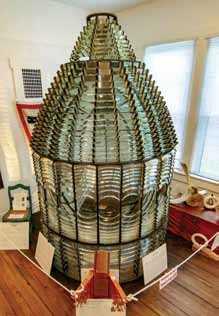
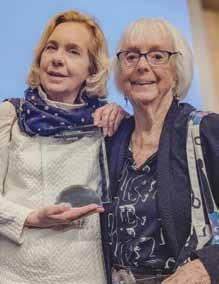


Aurora rides a solar wind, covering the heavens in green, red, purple, and pink. No camera lens or poet's words can describe the wonder of standing beneath her painted sky feeling the lights burn deep into your soul.
—Maggie O'Neill


Amid the world turmoil of the 1920s, Frederick P. Small, a young entrepreneur, purchased a large track of land in Harvey Cedars that spanned Long Beach Island from the Atlantic Ocean to Barnegat Bay. There, Small built an oceanfront mansion for his wife and children. In no time, Small developed the property into a lavish family compound that included homes for several other family members and cottages for guests. Christened Small Point, the family found peace and tranquility away from the world while Small, who became the president of American Express in 1923, successfully navigated the treacherous waters of the Great Depression and World War II.
At their estate, Small and his family enjoyed Island life. In addition to beautiful ocean and bay beaches, there was a boat house, a bath house, a rifle range and a private recreation center featuring a bowling alley, a ballroom, and a game room. Nearby, Small’s private seaplane could be
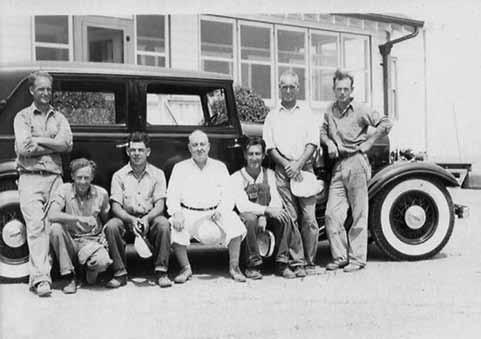
seen floating on the bay. Small’s love of horticulture was evidenced in the meticulous landscaping of the estate. There were greenhouses for his beloved orchids and colorful gardens with a variety of flowers including gladiolas and tulips complete with a replica of an old-fashioned Dutch windmill.
A generous and community-minded man, Small shared the vegetables grown at Small Point with neighbors and friends. During World War II, Harvey Cedars’ families received a turkey and a ham at the holidays, compliments of Fred Small. Each summer, neighborhood children participated in swimming lessons and Red Cross lifesaving courses sponsored by Small at his bayfront home.
Frederick P. Small died at the age of 83 in 1958. In 1959, the Sisters of Charity of Saint Elizabeth purchased the property from his heirs as a vacation place for the members of the order.
Renamed Maris Stella, Latin for Star of the Sea, for more than six and a half decades the Sisters of Charity have operated Maris Stella Retreat and Conference Center. The Mission of Maris Stella states, "Maris Stella, a ministry of the Sisters of Charity of Saint Elizabeth is a center that provides a ministry of hospitality, offering space and nourishment to individuals and groups seeking physical, psychological, and spiritual enrichment."
In April 2024, Maris Stella celebrated its sixty-fifth anniversary and was recognized by the Harvey Cedars Borough Commissioners for its service to the community.
Today, administrator Sister Pat Dotzauer, manages the compound from her office flanked by Barnegat Bay on the right, and the Atlantic Ocean on the other side across the road. Surrounded by water and sky, the compound is a place of natural beauty and serenity. “If heaven doesn’t look like this, then I’m not going,” she quipped.
On the bookshelf behind Sister Pat’s desk and also in the chapel are statues of Saint Elizabeth Seton, the beloved foundress of the Order of the Sisters of Charity. Seton was canonized a saint in the Catholic Church in 1975 by Pope Paul VI. Seton Hall College was also named after her. “The median age [of those in the order] is 84, but the sisters don’t give up easily,’ laughs Sister Pat. “Many still work fulltime; 70 is considered young in our community.”

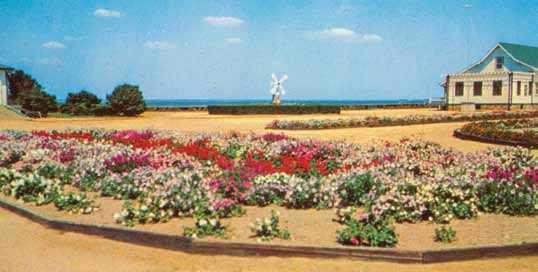

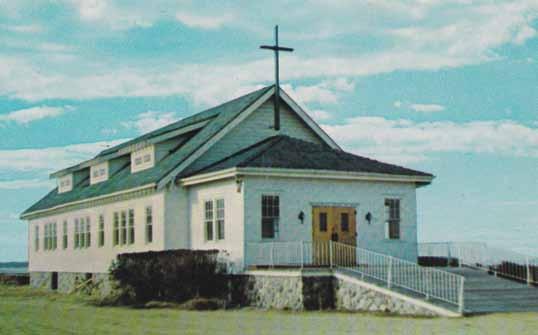

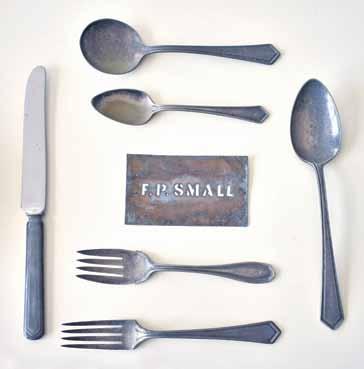
“Hundreds of people seeking peace and tranquility come here to this beautiful property once owned by Mr. Fred Small. People come here for retreats, conferences, and just to be. It is a joy to offer the peace of Maris Stella to all longing for time away in God’s creation.”
Because many consider it to be a significant historic site, Maris Stella has been recognized in the past for care of this Long Beach Island landmark.
Unfortunately, Small’s original oceanfront mansion was destroyed by the March storm of 1962. Like the estate itself, the stone pillars adorning the entrance have weathered several storms and withstood the test of time until several years ago when they needed repair.
credness of creation,” said Sister Pat quoting the end of the mission statement. Keeping with current trends of being stewards of creation, for the Sisters of Charity, guardianship of Maris Stella goes beyond the preservation of the site and its history.
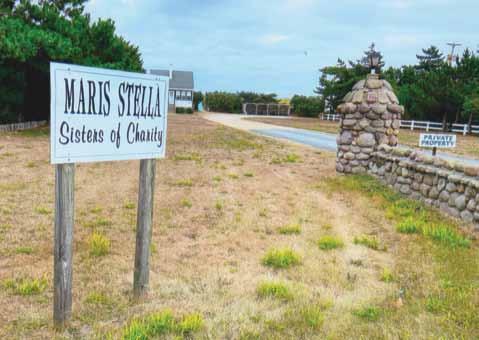
Fortunately, the sisters were able to hire a local stone mason, Ron Lange, an Islander to repair them. To everyone’s surprise, Ron Lange is the grandson of the original caretaker, Ed Lange, who built the original pillars.
“Maris Stella is a rich resource for study and reflection on the sa-
“As Pope Francis urges us in Laudato Si to preserve the planet for future generations. We try to incorporate God’s creation and care in spirituality and in life. We also honor and care for the earth by trying to eliminate our carbon footprint,” says Sister Pat. She went on to describe some of their efforts to use natural resources whenever possible.
“The floors are made of natural products; we recycle of course, and we have solar panels for heat and for air conditioning; we also use LED lighting. We want to preserve our property as best as we can.”
In the spirit of Fred Small’s generosity and hospitality, Maris Stella continues to be a center for renewal and refreshment close to creation. —Fran Pelham






“Imade $11 today!” Our eight-yearold announced at dinner one warm Sunday evening. It was 1980, and the five of us sat eating steamed crabs at the picnic table in the back yard of our summer cottage in Ship Bottom on Long Beach Island.
“What? How?” howled his big brothers.
“Where’d this money come from?” Dad asked, picking up the crumpled bills Steve pulled one by one from his pocket.
“I sold twenty-two crabs to some people next to me that didn’t even know how to bait a crab trap,” he chuckled. “You told me we had enough crabs and not to bring any more home. So, when they offered me fifty cents apiece, I took the money and dumped my catch into their empty basket. They also gave me three traps and said they would never use them again as long as I was there.”

“Where’d you get the bait?’ Dad asked. “I only gave you one bunker from the freezer this morning and told you only one trap.” Our Stevie had a collection of traps, many found abandoned at his favoring crabbing spot just under the Route 72 overpass at the end of our street. Every morning the handlebars on his bike were strung with at least four traps, a bucket, and a bag with a couple of bunker from the bait freezer. He was the “Golden Boy” on the street, sharing his

catch with neighbors and filling our freezer with more than we could eat.
“But I only gave you one bunker!” Dad pressed.
“I know,” said Steve. “But I got to thinking, at the Surf City Fishery, when they clean the fish, I’ve watched the guy chop off the heads, strip off the meat from the bone, and toss the rest into a big bucket at the back of the store. So, I rode up there yesterday, went to the back door and asked Chuck if I could have some of the leftovers for crab bait. He filled my plastic bait bag full, and said, “Stop by anytime kid. You can have all you want.”
“I tucked the bait bag in the shade of the trees behind the clothesline yesterday and took it with me this morning along with four extra traps, and I came home with all this money. But the best part,” he added, grinning from ear to ear, “Tom and Vinnie said they’d be back for more crabs tomorrow.”
I am glad my sons had a childhood that included summers and experiences like this one on Long Beach Island. —Artwork, photography, and story by Irene Bausmith
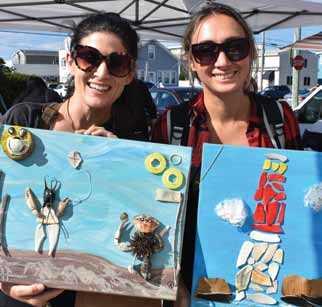



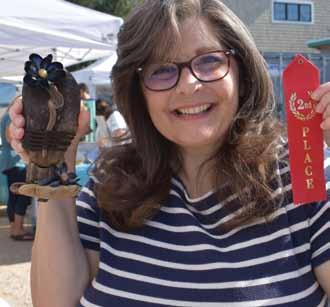



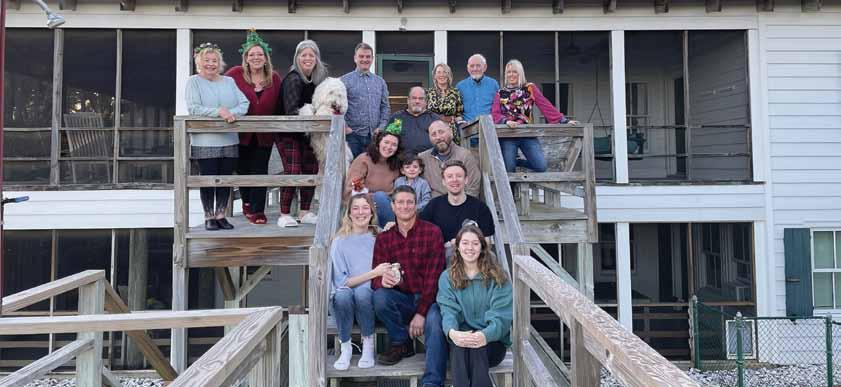
Some lives are lived quietly, while others ripple through generations, leaving a lasting impression on the people and places they touch. David Rolf Engelsen’s story is one of adventure, determination, and deep community roots. Born in 1937 to John Sigvard and Frances Ruth Engelsen, he grew up in the salty air of Barnegat Light, New Jersey — a place where the sea is not just a backdrop but a way of life.
If you have ever wandered through Viking Village, you might recognize the name Engelsen. David’s father, John, was one of the legendary twentyfive Scandinavian fishermen whose names are etched into local history, honored on the Scandinavian Fisherman’s Memorial that commemorates the founders of the Independent Fish Company. John built a legacy of hard work, adventure, and love of the ocean — one that his son, David, would carry forward in his own remarkable way.
John Engelsen’s journey from Bergen, Norway, to Barnegat Light was one of hard work and fate. Born in 1898 as John Sigvard Høsæther, he became a sailor at age 14, traveling from West Africa to South America before arriving in Philadelphia in 1924. It was by chance that same year that he first set foot on Long Beach Island and where he found work as a pound boat fisherman for Dick Meyers. Drawn to the tight-knit Scandinavian fishing community and the promise of a better life — he stayed. By 1929, John had purchased his first fishing boat with
good friend and fellow Norwegian, Axel Jacobsen.
One summer in Barnegat Light, John met Frances Ruth Bottorf, an intelligent, independent young woman who was putting herself through Penn State University. The two married in 1936 and soon welcomed their first child, David Rolf, followed by their daughter, Anne, and son, Brian.
The Engelsen family became an integral part of the Barnegat Light community. John helped build the Zion Lutheran Church, while Frances served as postmaster. Together, they ran a small market on 18th Street where they sold Norwegian specialties and operated Esso gas pumps — a humble business that became a staple of the town for many years. The gas station and house still stand today.
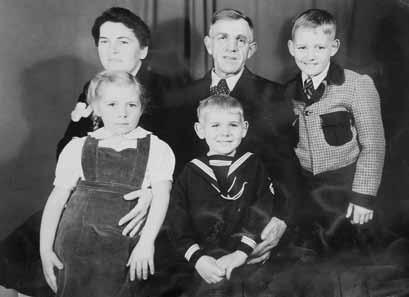
David attended the one room schoolhouse in Barnegat Light alongside his siblings where he shoveled coal to heat the classroom and celebrated Scandinavian traditions. Occasionally, the real lessons happened outside the classroom. His favorite tale was of the time he and a few daring friends climbed to the top of Barnegat Lighthouse during lunch, only to make a mad dash along the beach back to school to escape the police.
David’s childhood was spent on the water and on the docks where he passed endless hours packing fish and moving ice. Most of his
youth involved fish and lobster — packing it and eating it. This so affected him that as an adult, he proudly proclaimed, “I’ll never eat fish again!” However, he made an exception for scallops and shrimp.
High school brought new adventures and lifelong friendships. At Barnegat High, David bonded with Herbie Born of Ship Bottom and Rick Grant of Barnegat over their shared love of fast cars and races. They spent their youth swapping Hot Rod magazines and continued attending races together for decades. David’s passion for engines extended beyond racing as he proudly served in the National Guard motorcade alongside Rick from 1960 to 1966.
David’s early years were filled with adventure, camaraderie, and an unwavering love for the sea and speed, qualities that would define him for the rest of his life. As a young man, he secretly raced from the old Railroad bridge to the circle in Chatsworth. In the 1950s, he attended races in Pennsylvania with Herbie and Rick — sometimes watching and sometimes racing. David went on to race for Jack Kulp’s Rocket Runners Race Team in a 1940s Willys in Daytona, Florida in 1960. Later in the 1960s, he raced at New Jersey’s Atco Speedway in a 1950 Oldsmobile Fastback. He won races, set records, and even had his own race car built. He was a lifelong National Hot Rod Association member.
His racecar was officially retired in the late 1960s when he maried local artist Cathleen Pearce.Their family quickly grew to include four daughters, Sidney, Elizabeth, Andrea, and Judith.
Residing in Barnegat Light on 23rd Street, David’s love for the sea was his life’s work. He spent forty-four years as a dredge foreman and licensed boat captain with the Barnegat Bay Dredging Company in Harvey Cedars. He was hired by Reynold Thomas and worked with another Barnegat Light local, Bill Montgomery. His expertise and leadership earned him the affectionate nickname “General” from his co-workers, a testament to the respect he commanded on the job. So much so, that one of the tugboats was even named in his honor.
While his career kept him tethered to the sea, the open road and, later, the open water were his sanctuary. David found his greatest sense of freedom on two wheels. In 1985 he took cycling to the next level — logging an astonishing 203,623 miles over the next thirty-five years. His most legendary ride was a winter trek from Barnegat Light to Stuart, Florida — an adventure that proved there was no season too harsh and no distance too daunting for his restless spirit.
After retiring in 2000, David found a new love in kayaking, spending an impressive 13,180 hours paddling on the water. Whether on a bike or in a kayak, David’s adventures were not just about movement, they were about connection, discovery, and a life fully embraced.
During his winters in Stuart, Florida, David dedicated over 1,000 hours volunteering at St. Lucie Inlet State Preserve, in Martin County, Florida. He led kayak tours through the mangroves, repaired boardwalks, and cleaned beaches, always with a deep sense of pride in preserving the natural beauty of the area for others to enjoy.
David passed peacefully in January. A celebration of his life will be held in the summer of 2025. Though his wheels have stopped spinning and his paddle now rests, his adventurous spirit carries on in those who knew him. Whether cycling deep in the Pine Barrens or gliding across the calm waters of Barnegat Bay, his presence is there, guiding, encouraging, and reminding us to embrace the ride. —Liz Englesen • Photography courtesy of the Englesen Family
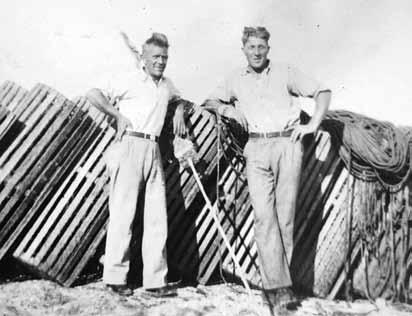

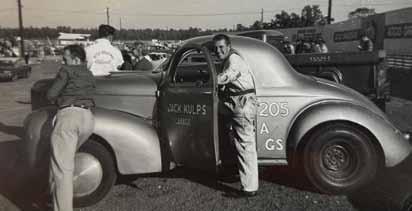
Forty-three years ago, Long Beach Island was a simpler place. It was the end of an era that began after World War II — an era intimately familiar to many of us in which we came of age, built careers, and started families of our own.
Thinking back on it now, we did not know how good we had it. But so says every generation when their day passes into memory and they find the Island they once knew so intimately now just isn’t the same. One can imagine then how an Islander who grew up in the early days of the 20th century may have felt thinking back on his own simpler, more familiar day from the vantage point of 1982.
In the earliest days of Barnegat City, a town
built by 1870s developers dreaming of a second Atlantic City atop the mostly empty sands of the sleepy old village on Barnegat Beach and beneath the storied lighthouse, life was little changed from the rustic ways of 18th century America. Baymen and fishermen were still the most common trades of most men. Seasonal lifesaving and wreck salvage were jobs for men young and old. Connections to the cities were arduous and time-consuming. And for those living seasonally or year-round on the Island, it was a very small world where everyone knew each other. This wide-open yet intimate life of freedom was both attractive and stifling. It was such a novel way of living for those who were introduced to the area as tourists that it brought them back repeatedly. Among those who spent their lives between
a mainland homestead and an Island cottage during fishing seasons, the close confines brought their share of camaraderie and disputes as personalities bumped up against one another.
But overall, the Island of old was a heavenly place that shaped those who fell in love with it. The magic of Barnegat Light in particular endured through its unique features as a city by the sea and in the people whose hearts it has captivated.
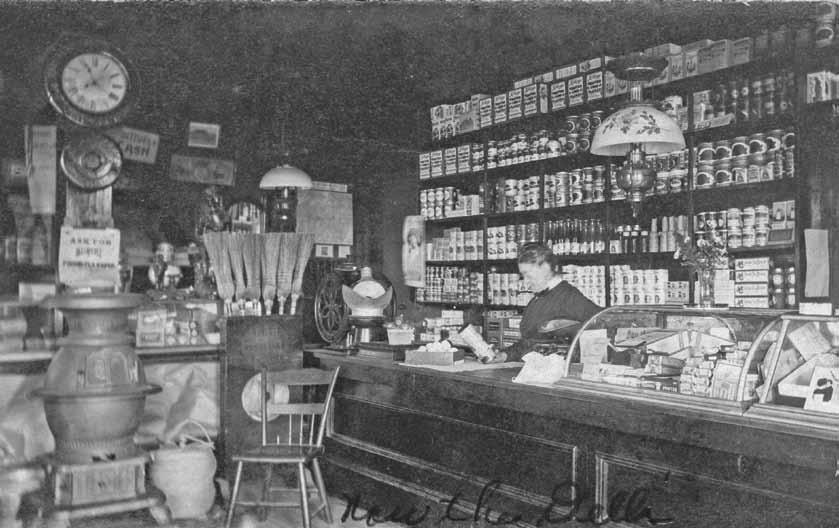
On a hot sunny day in the summer of 1982, Ron Spisso of Barnegat Light’s Inlet Deli sat with Franklin Morse Archer Jr. to hear stories about a town and its people many had known in their time within living memory. Yet the Barnegat City of
Morse’s recollection was different, like something out of a fairy tale. His grandfather, Benjamin Franklin Archer of Camden, New Jersey, was one of the original developers who harbored dreams of a shining city at the edge of the waves beneath the protective gaze of the old lighthouse. And like his grandfather, Morse shared the same love of Barnegat Light and spoke of it fondly.
This continuing series shares some of the stories told by Morse that day of his time as a boy from the 1900s to the 1920s, preserved and curated along with other such oral histories by the Barnegat Light Historical Society.
In the days when Barnegat Light was little more than a lighthouse, two hotels, a lifesaving station, a collection of fishing shacks at the harbor, and a smattering of Victorian-style mansions, one of the hubs of the early community was the general store. Originally built in 1882 by another founding developer, William T. Bailey, and used primarily as the local post office in the early years, the dwelling passed into the hands of Lloyd and Lucretia Justice Butterworth. This couple would manage the post office and general store for years to come.
Lloyd Butterworth was one of Barnegat Light’s first leaders. He came to town and the store from Camden County when he was appointed postmaster in 1887 following the terms of Mary J. Jones and Ike Peckworth. In his first year on duty, Lloyd collected $145.66 for the job, a sum equal to nearly five thousand dollars today. But postmaster was just one of many hats he would come to wear. In time he would serve as superintendent of the local school district, sit on the school board, serve in local and Ocean County government, even liaison with the Pennsylvania Railroad. All while tending to his goods and sundries at Butterworth’s General Store and post office in little Barnegat City. The store, in fact, would host many town meetings and elections, making Lloyd a de facto mayor.
Another title he, and Lucretia, took on was that of parent, to John V. Marshall, an orphaned local boy taken in by the couple and treated as their own. Marshall would go into the service of what became the Coast Guard, working on lighthouse tender ships before settling with a wife and chil-
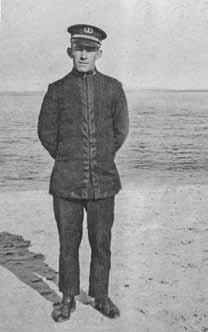
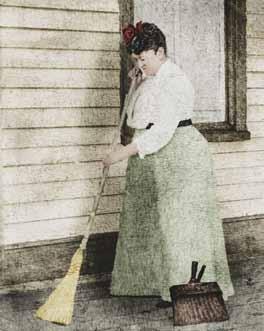
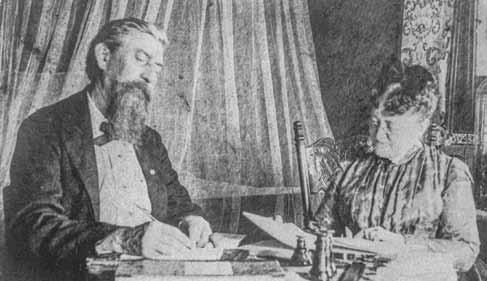
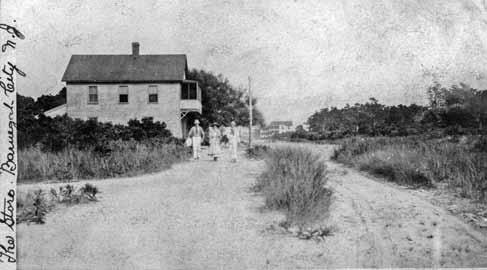
dren in Atlantic City in the 1920s.
was paid $331 by the government.

Tragically, in 1902 Lloyd Butterworth suffered a paralyzing stroke. He would succumb to its complications three years later at age sixty-eight, leaving the town and his widow bereft. Far from falling to pieces, Lucretia Butterworth got right to work running the store and post office alone. But in such a small town Lucretia was rarely alone, and she found ways to occupy her time — even if some might find those ways a bit nosy.
“She was a card,”
Morse Archer remembered 70 years later sitting on his sunny Barnegat Light porch.
“The train came in by where the Oceanic Hotel was on 4th Street and the mail would be brought up to Mrs. Butterworth. She’d retire to a back room and sort out the mail.”
In her first year as postmistress in 1905, she
Though well-deserved for toiling away in the cramped side room inside the small old general store that served as the outpost for the postal service on remote Long Beach Island, she found her own entertainment. “Some nights you’d get [mail] pretty quickly,” Morse recalled, “some nights you wouldn’t get it.” For Lucretia, everyone was family, and she wanted to be included
like family. Sometimes that led to trouble when she wanted the news and gossip first. When he was young, Morse’s mother had him pose for photographs. The Philadelphia photographer later mailed the matted prints to her, but curiously and despite follow-up letters confirming they were sent, they never came.

“Eventually, the photos did come through,” Morse explained, “but one picture of me was missing.” Mrs. Archer marched over to the post office where Lucretia told her, “I just kept that one out because that’s the [photo] I want you to have [a copy of] made for me.”
Morse’s mother saw more photographs on Lucretia’s sorting table from other local families, too, news of which caused quite a stir, though everyone appreciated the lonely matron’s affection for the close-knit community.
Later, Mrs. Archer wrote to a cousin in Baltimore about the controversy. The cousin, a friend of Lucretia’s, could not believe it and wrote back incredulously that surely the sweet old postmistress was not opening and holding onto people’s mail. Though Mrs. Archer would receive this letter eventually, like the photographs, it too appeared suspiciously late in her mail slot at the post office.
So, Mrs. Archer’s cousin “wrote another letter to mother saying she’d sent the first one,” Morse explained. “And that letter didn’t come through until about two weeks later.” When again Mrs. Archer marched over to question Lucretia, the postmistress then remarked what a “complimentary” letter Mrs. Archer’s cousin had written about her and how flattered she was.
“Well,” Morse concluded, “that gives you a little idea of the informality of the Barnegat City post office.”
In the general store, things were equally peculiar yet had a logic and charm under the circumstances. One curiosity was the always stocked shelves and the resistance one would encounter trying to buy certain items, like medicine, which reared its odd head one day.
“One time Jason Fenimore, the engineer on
the railroad, got a rather bad cut and came running over to my mother’s house,” at the corner of 12th and the tracks, Morse said. A nurse who was living with the Archer family at the time tended to Fenimore but needed supplies that would assuredly be in stock at the store. Morse remembered that he was “sent up there on my bicycle.” The proprietor of the only general store on the entire north end of the Island told him “she couldn’t sell [the medical items they needed] because it was saved for ‘emergencies,’ and she didn’t have any duplicates.”
The reason for this seeming stinginess, Morse explained, was “she didn’t like to sell a thing too fast because if she sold ‘em, she’d run out of them.” The remote nature of Barnegat Light meant supplies took a while to arrive after being ordered from the cities. And paying for orders including a lot of goods could be a challenge for Lucretia. “The problem was,” said Morse, “most of the people who bought from her bought on credit and never paid up [in a timely manner]. So, the more she sold, the more she lost.”
Though peculiar, Lucretia Butterworth was just as much a beloved local fixture as her late husband. In 1918, Lucretia, then 73 years old, retired as postmistress and manager of the store. Several locals managed it
in her stead, especially the Applegate family who worked with her during those final years. Lucretia fell ill in the fall of 1919, recuperating in Philadelphia before settling in The Vineland Veterans Home thanks to her husband’s service in the Civil War. Visited by many locals in the following years, she passed there peacefully in 1928.
In the years that followed, the Applegate family kept the Butterworth spirit alive and ran the store, renamed Applegate’s, through the 1930s before it closed and became a private residence for years. Falling into disrepair by the late 1950s, the sadly vacant old dwelling was rehabilitated by the Spisso family in the 1960s and began a new life as the Inlet Deli, thriving once again from owner to owner as a local hub of the Barnegat Light community for the past 60 years. Renovations greatly changed the layout of the old store, and the post office long since found a new standalone home in town. But the local energy in the Deli is the same, while the original post office slots and window Lloyd and Lucretia so passionately filled endures as a special exhibit in the Barnegat Light Museum. —Reilly Platten Sharp • Photography courtesy of the Barnegat Light Museum
Portraits Under the Lighthouse will be continued in the next issue of Echoes of LBI.
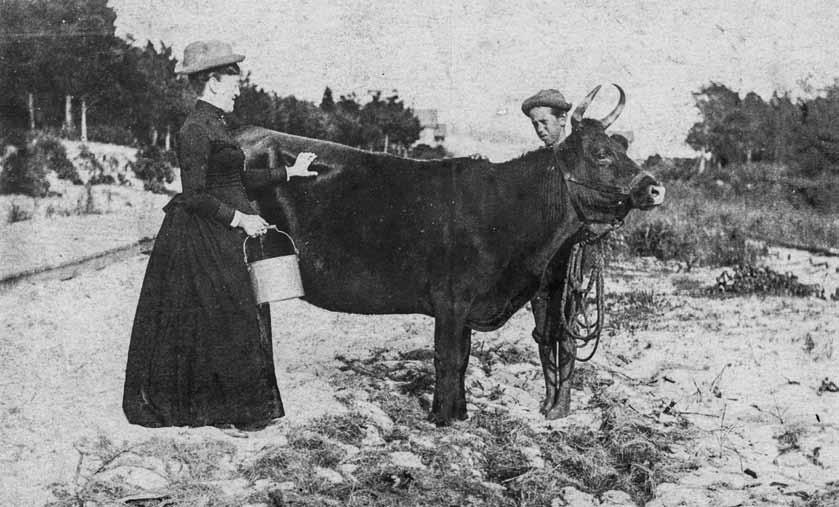
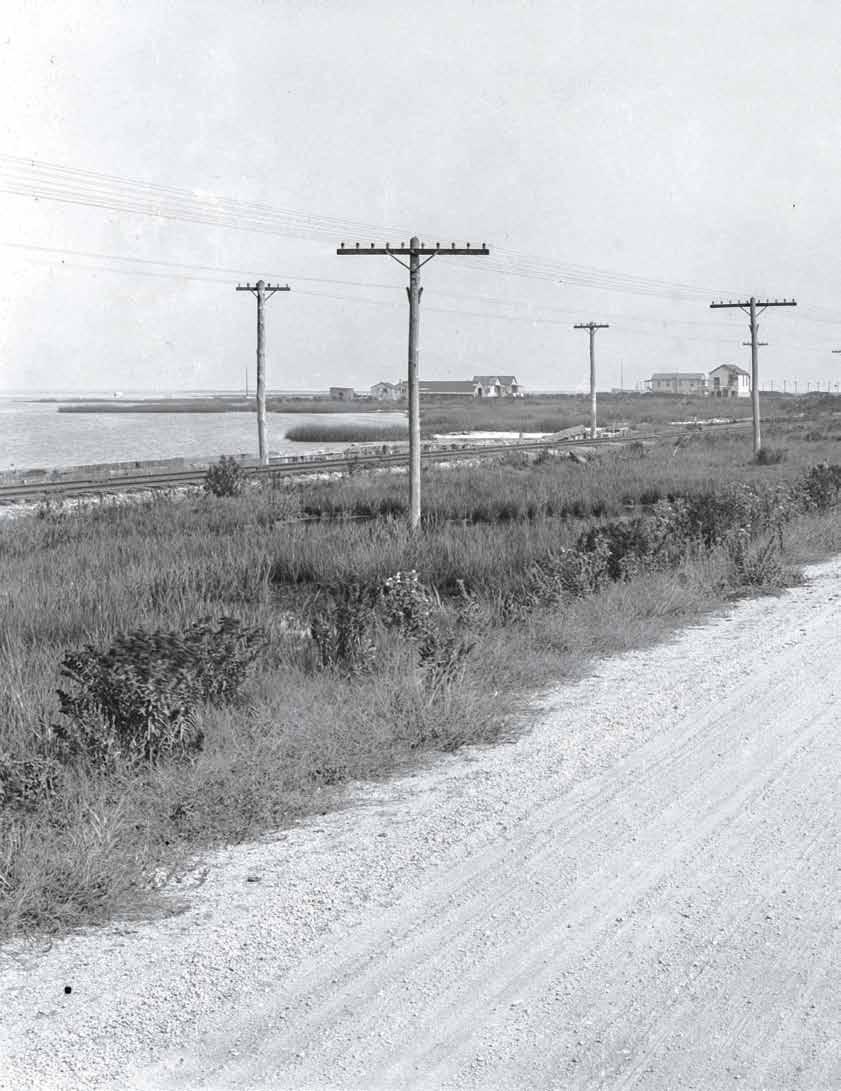

Whether new or old, roads take us places. Over the course of Long Beach Island history, roads have taken many forms, and the journeys have often been long and uncomfortable. From the lurching coach behind a team of horses to the sooty wooden seats in the smoke-filled cars of a train to the backseat of our family station wagon, this destination beside the sea has always made the travails of travel worthwhile. Whichever town, street, cottage, and beach we come to at the end of the road — the joy found there keeps drawing us back. The people pictured here over a century ago knew this as they walked the sandy pebble-filled Boulevard at Brant Beach — their destination reached by turning right at the same circle on the Island undergoing its latest evolution today.
Platten Sharp • Photography by Robert F. Engle
—Reilly
